By Mary Helen Gillespie
“Sabrina,” 53, recommends women on the cusp of divorce assemble a team of advisers including financial experts, a divorce coach, and a mental health professional to guide them through the long, often painful, process.
How has your divorce financially impacted your retirement plans?
It has had a devastating impact. I probably will never recover from the inequity.
Did you hire a financial adviser, a CPA, or other finance professional to help you plan your retirement needs during the divorce proceedings? Would you today?
No, but I was aware of basic information and did research. I am also personal friends with one of the top certified financial divorce advisors in the United States. I would hire one today, before ever hiring an attorney again on retainer with unlimited billable hours.
From my experience with the attorneys, and I had several, they would just drive their agenda anyway and minimize the necessity or the validation of the data and not do what is required.
Also, this would keep people in conflict and returning to the courts and their attorneys even after the final decree. And that’s what they can bill for: conflict.
Was your divorce attorney concerned about your retirement finances? Was the divorce judge?
No, I believe the attorneys were not at all concerned, and I had a few. They told me to get a job (which I did) and refused to address what the actual amounts of all the retirement assets were or any marital asset for that matter. I especially feel the judge was at fault and had a fiduciary responsibility in a court of equity to stop the attorney games and get to the facts. The language used in my court documents is very vague and/or ambiguous or just silent. It doesn’t even have any basic Internal Revenue Service language to divide the assets so to this day I still can’t get these marital assets after 12 years.
It is my belief that dividing marital assets, aside from custody/support, is paramount to getting a divorce and the powers that be behave negligently and sloppily. They don't do the proper due diligence or intentionally commit outright malpractice -- all under their legal immunity. And then they keep people going back into court and drag it out even more and erode most people’s life savings and their quality of life.
How would you describe the quality of your financial life post-divorce?
It’s been a struggle. I was nearly bankrupt and had to pull myself out of what I felt like was financial quicksand. Was a stay-at-home mom for most of the 20+ year marriage with three young children. I disrupted my career to raise the children and then, upon returning to the workforce, faced the disparity of an income gap and earning potential due to the break in my career. A formula for child support and a minimum wage job is barely surviving.
Plus, many women are made dependent on an ex-spouse to pay child support and/or maintenance; and this is a person whom they can’t trust to begin with or doesn’t pay what’s ordered. There is no consequence nor accountability, and it takes months to years to settle while back in the court system.
I was also saddled with marital debt and there was pressure for me to file for bankruptcy.
What other information would you like to share with women in similar situations?
In hindsight, I believe the lawyer is the last person to the table. What you need is a team approach of a financial neutral, a divorce coach to help with the emotions of divorce and all the nonlegal areas, and a counselor/ therapy support for the kids or if there is any domestic violence. Then when you have this team in place and create a foundational starting point of family dynamics, a lawyer can apply the law and protect the parties especially in equitable distribution states like New York and also in the community property states. We blindly put our 100+ percent trust in one person, this lawyer, to get divorced and it just doesn’t work and becomes an adversarial, litigious, costly, and lengthy process.
I haven’t received any marital portion of the marital retirement assets in my late 40s and now 50s due to a defective settlement/transcript that has had a devastating financial impact on my life. This is the result of the judge who signed it, and a qualified domestic relations order (QDRO) that cannot be executed as well as being unfairly assigned all the marital debt. I also have not received back child support payments. Consequently, I have no savings or assets to buy out my ex from the family home. I am making under $50k a year, and now find myself in a devastating housing situation due to rising prices for rentals. I may well find myself working well into what would have been my “retirement years.”
Follow us on Instagram and Twitter!
*************************************
We asked Lili A. Vasileff, president of Wealth Protection Management in Greenwich, CT, a fee-only CFP®, mediator, Certified Divorce Financial Analyst®, and litigation divorce financial expert for her thoughts on Sabrina’s situation. Vasileff agrees with building a team of support and outlines additional steps to take.
Often in hindsight, it comes as no surprise that we wish we did things differently. In divorce, there is the added regret that some decisions cannot be done over and have a long-lasting impact on the rest of one’s life. In Sabrina’s case, she expresses many regrets and describes her current state of financial hardship. What we do not know is the total context for how her divorce unfolded and what her actual outcome was.
In my experience, the number one regret of many home makers in long-term marriages is that they felt rushed or coerced into making financial decisions they did not fully understand.
Here are some pointers for what to do BEFORE you divorce:
- Prepare, prepare, prepare. Gather your financial information: know what it costs to live; know where your assets are and what debts you have. Know your state’s divorce laws and what are typical outcomes for a person in your situation. Find experienced attorneys and interview them well.
- Know what you don’t know. If you are weak on understanding financials, hire a divorce financial planner. If you need emotional support, hire a divorce coach. Build your team.
- Understand that the divorce process (mediation, collaborative or litigation) is a marathon and not a sprint. Pace yourself. Budget for the cost of divorce.
- Hold yourself accountable and responsible for advocating for your own needs and interests. No one knows what you need or want, but you. You must not blindly abdicate this role to anyone, including your attorney.
What can Sabrina do post-divorce now 12 years later?
- She mentioned that she has not received child support. States legislate the enforcement of child support and can garnish wages for this purpose after just missing a few child support payments. It costs nothing for the payee.
- As soon as something goes wrong, act! Sabrina mentions that her QDRO was not executed. One should require that a QDRO specialist be addressed in the divorce agreement. Be specific about who will prepare the QDRO, how much it will cost, when it will be started, and how decision/cost will be shared between ex-spouses. It is not too late to reopen a QDRO that was improperly executed to protect your rights, and the sooner you do, the better. However, if the assets are gone, then you must sue to enforce your divorce judgment.
- Sabrina says that all marital debt was assigned to her. Without any context or facts, it is tough to know what this means relative to the total marital estate and her final outcome. Did she agree to it? Did the judge order it? What kind of debt – the mortgage with the house? One negotiates debts as they do for assets. Often, it is best to pay off debts from the marital assets before dividing the balance between spouses. I recommend having a backup plan if the debt is in your name and your ex-spouse is supposed to pay it off. Creditors will always go after the borrower and Sabrina’s recourse to protect her credit rating is to sue under her divorce decree.
- Sabrina said she was pressured to file for bankruptcy, but we assume she did not. Before bankruptcy, which should be your last resort, try to negotiate with debt holders, try to consolidate, and work with a Credit Counselor or Qualified Agency, etc. Always check your credit rating regularly and make corrections to any misinformation.
- Sabrina has no savings or assets to buy out her ex from the home. We do not know how much equity Sabrina has in the house. There are many options open to her: sell the house, leverage the house, work out with her ex-spouse installment payments of equity over time, ask her ex to refinance the house in his name/take title to the house and have her live in it as his tenant. Her ex has waited 12 years to get his equity out. We do not know what arrangements he may agree to at this point.
- Renegotiate post-divorce: If her ex has failed to make back payments in child support, maybe Sabrina can negotiate for more time to stay in home, or, for greater equity in her home, or, not have to move out at all.
- Sabrina may have to work into her retirement years. Courts cannot force a person to work past full retirement age. They can compel support payments, but not actually make a person work. If her support ends and she has a $50,000/year job, realistically she may have to work longer to have some savings and meet living expenses.
- She can also apply for Social Security on her ex-spouse’s record when he turns 62 if she meets all criteria. This additional income will help her cash flow. Social Security benefits are government entitlements and not rights that can be assigned in a divorce judgment.
Best advice is for Sabrina to work with a financial planner to plan ahead and have a roadmap for her retirement. She has options to consider for improving her financial situation and hopefully, she looks forward to her future and not backwards to her past.
******************************
Learn more by watching our webinar, Retirement Daily Roundtable - Women, Divorce & Retirement: Creating Your New Personal Finance Plan, with Robert Powell and panelists Amy Shepard, Rick Fingerman, and Katie Marsden.
To find a financial professional with experience in divorce, visit the Institute for Divorce Financial Analysts website.
You May Also Like...
Other relevant articles from Retirement Daily

Common Retirement Questions: What Are My Sources of Income and Financial Assets?

Don’t Outlive Your Retirement Savings
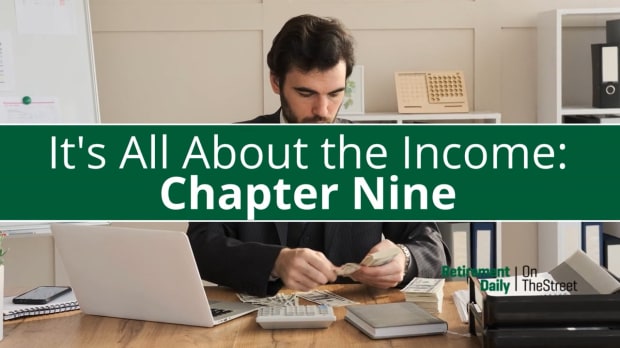
It's All About the Income, Chapter 9: The System is the Solution
December is finally here and Jae Oh, author of Maximize Your Medicare has some year-end planning opportunities with respect to your investment strategy and health insurance premiums.
One thing that people should be aware of is their year-end distributions because the degree that they might exist this year can affect your taxable income according to Oh. “[It’s a] ripple effect that can reach both your individual health insurance or your Medicare premium,” he says. “You do need to incorporate [your distributions] into your taxable income to try to take advantage of lower health insurance premiums or to avoid Medicare's IRMAA, for example.”
Another thing that readers should be aware of is the idea of tax loss harvesting. According to Investopedia.com, tax-loss harvesting is the timely selling of securities at a loss to offset the amount of capital gains tax due on the sale of other securities at a profit. Oh says that it's been a difficult year for financial markets, making tax-loss harvesting possible, so people should have the help of an accountant who knows the capital gains/losses rules. Tax-loss harvesting can help people buying individual health insurance have a lower tax bill.
Follow us on Instagram and Twitter!
Oh also mentions the idea of an IRA contribution. Making a contribution after getting your distribution and before filing for taxes can further lower your taxable income. “If you had to get an estimate for every thousand dollars, for example, that you lowered your income, you get about 10% lower in health insurance premium. So a hundred dollars a year for a health insurance premium,” Oh says. “So this is not small in terms of what you can actually benefit from if you're paying attention and know how to take advantage of the rules as written.”
For those who have a 401(k) at work, they might be able to increase the amount of their contribution, but it may be tricky according to Oh. The Roth conversion needs to be handled differently because they’re a taxable event for that calendar year. It’s important to plan for how it will affect things like your taxable income, which then impact IRMAA under Medicare and health insurance premiums under the Affordable Care Act.
You May Also Like...
Other relevant articles from Retirement Daily

Year-End Tax and Retirement Planning Strategies

Four Year-End Tax Planning Strategies

End of Year Tax Planning Strategies
By Don Robertson
Experienced investors have a wide range of indicators that help them predict if a company is well-positioned to grow in the future. Savvy traders listen for clues in quarterly calls and scan corporate reports detailing organizations’ earnings per share, operating margins, debt-to-equity ratios, cash flows, and more.

Alongside these data points, I’d argue for one more important cue for careful consideration. Be sure to research a company’s sustainable investments in its human capital. Are they investing in their talent?
The simple truth is that the organizations with the best talent have won the day. And in 2022 and beyond, the organizations with the best talent are going to win again. That’s why there is fierce competition for talent taking place in America and globally.
Human capital can be a business driver. In fact, in 2012, London Business School’s Alex Edmons found that the companies on Fortune’s “100 Best Companies to Work For in America” list generated higher stock returns per year than their peers. Given that, it only makes sense that shareholders should ask tough questions about a company’s culture, talent development strategy, employee engagement scores, and diversity and inclusion initiatives.
An organization’s commitments to its talent are especially important in a recessionary economic environment, which many experts say is a possibility in our not-too-distant future. Whispers about layoffs at several big-name Silicon Valley companies are surfacing in mainstream media like Business Insider, while other organizations have already moved to cut staff.
And in C-suite conversations across the country, some leaders are considering changes to their benefits, compensation structures, and incentives. Many companies – especially those that are publicly traded – get caught up in economic cycles, feeling a need to demonstrate financial results to shareholders each quarter, no matter what. And when business gets a little tough, leaders often start looking for ways to demonstrate strength.
Buy-and-hold investors should consider if companies are thinking longer-term and prioritizing their talent. Organizations that stay committed to their employee value proposition can build higher employee morale, higher productivity, higher employee engagement, and lower vacancy and turnover – all drivers for bottom-line results. Promises kept in the face of adversity can tell investors much more than a number in a spreadsheet within a quarterly report ever could.
More organizations are seeing evidence of a correlation between attrition and revenue. In fact, some large U.S. banks are now tracking employees’ opinions of management and their emotional connections to the company – because organizations with engaged employees may deliver greater returns to investors than others.
Follow us on Instagram and Twitter!
In addition to driving growth, sustained investment in talent is also the right thing to do.
Human capital is increasingly significant in conversations about ESG investing – using Environmental, Social, and Governance data to evaluate an organization’s sustainability. Recent studies by McKinsey and by MarshMcClennan found strong parallels between companies with a strong ESG proposition and increased employee engagement as well as greater talent acquisition and retention.
Of course, if someone feels like they don’t have to cut corners or take excessive risks in pursuit of short-term gains, they can make more responsible and sustainable decisions on behalf of customers and society overall. Moreover, according to the studies, energized and engaged employees who believe in an organization’s mission are more productive and less likely to be lost to attrition.
Since late 2020, the SEC has required publicly traded businesses to disclose more specifics about their talent acquisition and retention strategies. The new guidelines prompt companies to share facts about the makeup of their workforce, initiatives relating to diversity and inclusion, recruiting and retention strategies, employee engagement survey results, pay equity data, and talent development efforts. Done well, these reports can give investors a sense of companies’ talent strategies. And if that strategy is left unsaid in the reporting, sophisticated investors should follow up.
What should investors watch for?
Now is the time to ask leaders about their talent strategy. During quarterly shareholder calls, company leaders typically talk about their annual or multi-year strategies to create growth, ensure competitiveness and build relevance. These conversations are an ideal time to ask if each organization has a firm plan to attract, retain and develop the talent they need to deliver on those business-critical initiatives. Press to understand their employee engagement rates, attrition rates, advancement rates, and DEI scores. Taken together, these data points may indicate where value will be found in the months and years ahead.
This is also an ideal time to review studies that seek to quantify which companies are the best places to work. Organizations like Fortune, Forbes, Glassdoor, and Inc. track data from employees and the entities they serve to create indexes and annual rankings. Businesses that consistently rank highly – in good times and challenging times – may be more committed to their talent strategies than others that rise and fall.
Lastly, keep a close eye on digital conversations. Social media chatter and websites can offer us all an unvarnished inside look at organizations across the globe. If sentiment is positive, greater prosperity may be on the horizon.
About the author: Don Robertson
Don Robertson is executive vice president and chief human resources officer, and a member of the senior leadership team of Northwestern Mutual – a $34+ billion, Fortune 100 financial services company, the largest U.S. provider of individual life insurance, and manager of more than $540 billion in combined company and client assets.
Don launched his career in accounting, finance, and sales, as well as the support of IPO efforts, before moving into HR. He currently serves as a member of the CNBC Workforce Executive Council, on the board of directors for the Wisconsin Humane Society and the Zoological Society of Milwaukee, and on the board of advisors for Catalyst.
You May Also Like...
Other relevant articles from Retirement Daily

Should Rising Rates Lead to Declining Expectations?

New World Order or Continued Global Economy?

Ask the Hammer: Understanding the Exceptions to the Exceptions for IRAs
Jeffrey Levine explains the exceptions to the exceptions to inheriting IRAs.
By Mary Helen Gillespie
“Shannon,” 61, of New Hampshire, outlines the financial lessons learned after her 33-year marriage ended.
How has your divorce financially impacted your retirement plans?
Drastically. I have no real plans to retire.
Did you hire a financial adviser, a CPA, or other finance professional to help you plan your retirement needs during the divorce proceedings? Would you today?
No, but I would if I were getting divorced today.
Was your divorce attorney concerned about your retirement finances? Was the divorce judge?
My divorce attorney was supportive of my retirement status. The judge was not.
How would you describe the quality of your financial life post-divorce?
I worked part-time during my entire 33-year marriage. Today, my financial status is much lower than when I was married.
What other information would you like to share with women in similar situations?
Make sure to look into his pension (if he has one).
*****************************
Follow us on Instagram and Twitter!
Retirement Daily shared Shannon’s story with Deanne Phillips, CFP®, CDFA®, ABFP℠, director of Client Learning & Development at Annex Wealth Management. Here are her thoughts for Shannon and other women facing similar issues.
First, the good news: the overall U.S. divorce rate is dropping. Now the sad news: The rate of “grey divorce” is surging – double the rate of 1990. Today, older couples over the age of fifty represent 25% of all divorce cases.
“Older” can mean “less simple.” Since many older couples have accumulated a more complex estate, the separation of assets could be trickier – even more so for someone on the cusp of retiring.
Divorce is often accompanied with plenty of emotional trauma. And when divorce happens to older women, their standard of living plunges as much as 45%. Few people want to feel they have to go back to work at age 65.
Add to those concerns the common feeling women experience of being undereducated when it comes to their finances, the gender wage gap, and women outliving their physical partner, and you’ve discovered a formula for potential personal budgetary crisis.
Let’s face it -- when going through emotional distress in a transition, focusing on what your future will look like and the many financial decisions that need to be made in the present can be tough. Most people just want to “get it over with,” leading to concessions that are later regretted.
Here are tips to help sidestep some common divorce issues:
- Copy all financial records and keep them in a safe place. This includes bank accounts, three years of tax returns, pension and investment statements, pay stubs, employment agreements or contracts, and any financial awards like options for you and your spouse. Also have a copy of debts, loans, mortgages, and bills. This can help save the time and money of going through a recovery process later when it comes to reconciling income, assets and debts.
- Give good consideration around the family home, and whether to keep it. Whatever the motivator – whether it’s keeping continuity with family, sentimentality (after all it’s where the memories were generated), or maybe the idea of moving while transitioning through the divorce is simply overwhelming – remember that houses cost money to maintain, so cash flow becomes even more important. If financing is needed, speak with a lending professional first. Don’t assume you can take out a mortgage.
- Understand tax implications of all the financial assets because they are not all the same. Equalizing the assets from a taxation viewpoint and knowing how the assets will be split and paid out– including any pensions that either of you have – is important. This is where a financial planner or CDFA can aid by laying out the financials and showing how income and assets work for you after the financial separation.
- Ensure the continuation of income. If receiving spousal support, secure a disability policy on the payor if they are still working, and a life insurance policy on them to ensure that you continue to get paid for the duration the decree states, no matter what happens to your ex-spouse. Be sure and include language in the marital settlement agreement around accountability of the payments of those premiums, especially if your ex is paying them, so they do not lapse.
- Understand your Social Security benefits. If you were married over ten years (and not remarried) you are entitled to half of your spouse’s benefit or 100% of yours, whichever is higher. It does not matter if they remarry and it doesn’t impact their benefit at all, so this is not a negotiable asset in a divorce negotiation.
- Tax returns in the year of divorce can be complex. Remember a divorce is a change of circumstances that is effective on the date the decree is stamped. You are then considered divorced for the entire year – even if it is on December 31st. You may be filing your taxes as single or head of household, but you still might have marital income for that year. Since the divorce year income might be complex, consider using a tax professional to help you.
And finally, even if people are doing the divorce themselves (pro se) and feel they have an amicable enough relationship to do so with a mediator, we always recommend having an attorney or someone advocating for you. There are so many considerations and having the right team at the time to ensure that you not only financially and emotionally survive the process, but helping to understand that one can thrive after, is important. It helps you see if you will be ok. And ultimately, that’s what women want to know while they are going through this process: Will I be ok?
**********************
Learn more by watching our webinar, Retirement Daily Roundtable - Women, Divorce & Retirement: Creating Your New Personal Finance Plan, with Robert Powell and panelists Amy Shepard, Rick Fingerman, and Katie Marsden.
To find a financial professional with experience in divorce, visit the Institute for Divorce Financial Analysts website.
You May Also Like...
Other relevant articles from Retirement Daily

How Your Adult Children Can Stop Relying on You Financially
Read below to discover the balance of supporting your children and your bank account.

Retirees Going Back to Work: Starting a Business
Are you retired? Do you want to start a business? Here are some things to consider!

Saver's Credit: How a SECURE Act 1.0 Provision & 2.0 Proposal Impacts Retirement Benefits
Learn from our expert how Americans’ saving power will expand with the SECURE Act’s Saver’s Credit.
Istock
By Allison L. Lee
You and your spouse may visit the same primary doctor, financial advisor, and tax preparer. But what about preparing your wills? The short answer is: it depends!
Working with the same attorney as your spouse can offer several benefits, but there are also dividends to going your own way. Consider the following common situations when deciding whether or not you and your spouse should hire the same estate lawyer:

Your estates are relatively simple and interests aligned.
Trusts and estates experts agree that an attorney can be effectively engaged to represent a couple in planning their estates — especially when the estates are relatively simple (think: no sophisticated tax planning, a first marriage with or without children, and property located in one area). This joint representation can be a time and money saver since there’s no need to retain two separate lawyers and trek to two separate law offices.
Of course, it’s important to understand the considerations of a joint representation, including that there are no secrets. This means that you, your spouse, and the lawyer are able to agree that the lawyer will share any information learned from one spouse with the other spouse. These terms should be clearly outlined in the engagement letter that you and your spouse sign when you retain the lawyer.
One spouse has property in another state
Let’s say you own property in another state that is not co-owned with your spouse. This commonly happens when there’s an out-of-state property that’s part of one spouse’s immediate family, like business property or real estate that they co-own with a parent or sibling. This can also include property that one spouse is likely to inherit with the intention and expectation that it stays in the ancestral line.
You’ll also likely want to engage an attorney in the other state to make sure that any important local law considerations are addressed — even if you and your spouse decide to engage the same primary attorney for the joint estate planning representation. An out-of-state attorney can help advise if there are any special planning considerations that you might want to make, such as placing property into a family-controlled entity like a limited liability company.
Coordinating a call between your out-of-state attorney and your primary in-state attorney could be in the cards since there can be interrelated planning considerations that will need to be addressed in your will or trust.
Follow us on Instagram and Twitter!
You and your spouse have different communication styles.
Let’s say you prefer to work with a professional who is more talkative and wants to really get at the heart of your planning goals. Your ideal advisor is always challenging you to better describe the lasting legacy you want to leave. Your spouse, on the other hand, wants to keep the talking short and sweet. In such a case, you might each find it helpful to seek independent counsel to make the estate planning process most productive and comfortable for you.
Depending on the size and capacity of the law firm, it may also be possible for you and your spouse to work with different attorneys at the same firm. This allows you each to work with an attorney that matches your communication style when handling your planning matters. Because at the end of the day, seeing a professional whose style doesn’t align with your preferences will make it less likely to come out of the process feeling satisfied and willing to re-engage when your planning needs require an update.
One or both of you want to use a “floating spouse” provision.
In certain circumstances, trusts and estates attorneys generally agree that you and your spouse will want independent counsel. One such case is when a spouse wants to incorporate a “floating spouse” provision into their documents. Generally speaking, a floating spouse provision defines a “spouse” as the person you’re married to from time to time. This becomes relevant if there’s a divorce and the former spouse would have otherwise had a vested beneficial interest in a trust.
Here’s a practical example: Let’s say you create and fund an irrevocable trust and intend to name your spouse as a beneficiary. Because the trust is irrevocable, your ability to make any future changes is greatly limited. You may ask yourself, “but what happens if we get a divorce?”
By incorporating a floating spouse provision, you could protect your interests by having your current spouse removed as a beneficiary and substituting in their place a new spouse. Not all individuals prefer this, but if you and your spouse express an interest in this type of arrangement, you should consult independent counsel since your interests are considered legally adverse.
There’s no one-size-fits-all solution when it comes to planning the estates of a married couple. In certain cases, including if any part of the plan creates adverse interests, a joint representation may be difficult or even impossible. However, if you and your spouse have relatively simple estates, aligned interests, and similar communication styles, signing on to a joint representation with one estate attorney may be a great choice for planning your estate — and having your spouse by your side could give each of you that extra push to take care of this essential life task.
About the author: Allison L. Lee
Allison L. Lee is the attorney-at-law and director of trusts & estate content for FreeWill, a mission-based public benefit corporation that partners with nonprofits to provide a simple, intuitive and efficient platform to create wills and other estate planning documents free of cost. Through its work democratizing access to these tools, FreeWill has helped raise more than $4 billion for charity.
You May Also Like...
Other relevant articles from Retirement Daily

Saver's Credit: How a SECURE Act 1.0 Provision & 2.0 Proposal Impacts Retirement Benefits
Learn from our expert how Americans’ saving power will expand with the SECURE Act’s Saver’s Credit.
Istock

Inflation Got You Down? Consider these Benefits

Can I Switch from Medicare Advantage to a Medigap Plan?
Yes, you can make the switch, but there are some things to consider before you do.
Now that Thanksgiving, Black Friday, and Cyber Monday are over, there’s another more recently adopted holiday to look forward to: Giving Tuesday.
Giving Tuesday is a day for people to give back to those in need, whether through donating, volunteering, raising money, etc. If you choose to give back during this season of gratitude, it’s important to reevaluate your financial plan to include your preferred organizations, decide on a system that works for you and choose the best method for giving, while helping your bank account in the process.
Julie Virta, CFP®, senior financial advisor with Vanguard Personal Advisor Services, shares four approaches to building or revamping donations into your financial plan.
Qualified Charitable Distributions from an IRA
The first way to go about donating within your financial plan is through qualified charitable distributions (QDCs) from an IRA. Although you can only utilize this process after full retirement age of 70.5, with this method, you have the opportunity to give directly, up to $100,000 out of that traditional IRA.
“It can be a really good starting point for those retirees that do have larger traditional IRAs,” said Virta. “Especially if you’re already taking required distributions, it can offset [them and] you don’t necessarily need that cash.”
Securities vs. Cash
When giving a donation, there’s more ways to do so besides cash or check – securities. If you’ve saved throughout retirement into an appreciated fund, you’re able to give that security to most organizations instead of cash.
“For example, if you wanted to give a large cash donation to any organization, instead of just writing a check for that, you could give securities in that same amount,” said Virta. “It would be a way for you not to have to sell the security, take a capital gain, and then give the cash from those proceeds.”
Follow us on Instagram and Twitter!
Bunching Donations
Oftentimes people choose multiple charities to donate to throughout the holiday season versus one. This method of bunching donations, or donating to various entities at once, can actually maximize your tax dollars and be more financially beneficial.
“If there’s a commitment you’ve made to a charity or a couple of charities you want to give to, maybe over the course of a 12-month period, sometimes you might want to bunch those together to take advantage of the tax deduction – if you wanted all that tax deduction in one year,” said Virta.
For example, “rather than give to one organization in December and another in January, do them both in this year and then you get a greater amount of tax deduction in the one year versus spreading it out in the two years, [when] you might not have as much opportunity on that tax deduction,” said Virta.
Donor-Advised Fund
If you’re someone who wants to get the immediate tax deduction, yet you don’t know which charities you want to give to, you could use a donor-advised fund.
What is a donor-advised fund? – “a vehicle that you can give to and then essentially, you can let the dollars stay in that vehicle and they can grow with the market. And then you can give it to the various charities you want to give to at a future point, but it gives you the immediate tax deduction upfront,” said Virta.
In other words, moving money into a donor-advised fund gives you the immediate tax deduction with the time to determine later on which organizations you want to benefit from those dollars.
There’s also a way to combine this strategy with the securities method for those who want to give securities and not cash.
“If you were giving to a donor-advised fund and didn’t necessarily know your charities yet, you could give securities into the donor-advised fund as a way to take advantage of giving securities versus cash,” said Virta.
Course (and recourse) of Action
While it’s important to consider charitable giving when developing your first financial plan, it’s equally important to revisit those plans for giving on an annual basis. Factors like the state of the market, your retirement status, organizations of choice, and more can differ, and those should be reevaluated and reflected in your overall financial plan.
“You don’t necessarily need to do the same thing every year. Maybe one year, it’s more advantageous to you to give securities. Whereas this year, maybe you turned 70.5 and want to take some dollars out of your IRA,” said Virta. “It’s really something that should be reevaluated annually as you’re giving and thinking about what’s the best approach for this year in terms of how I’m giving?”
Keep these tips in mind for your charitable giving and consult a CFP® for help with incorporating any strategies into your personal financial plan. Happy giving!
You May Also Like...
Other relevant articles from Retirement Daily

TRICARE for the Military and Their Families

Retirement Daily Roundtable - Women, Divorce & Retirement: Creating Your New Personal Finance Plan

Reimagining Retirement - An Interview with the Author
Eric Weigel of Reimagining Retirement reflects on the nine factors to acquire and maintain wealth.
In this Retirement Daily Learning Center webinar, John Nersesian, the head of adviser education at PIMCO, details everything you need to know about charitable giving: what to give; who to give to; when to give; and how to give.
]]>By Philip Herzberg, CFP
If you are feeling deflated by several months of soaring inflation, investment market losses, and interest rate hikes, there is still time to save money on taxes with year-end planning strategies.

Here are four proactive planning moves that may help you lower your 2022 tax bill.
Consider a Roth IRA Conversion
The recent stock and bond market decline has made the Roth IRA conversion more attractive for those who are well-positioned to leverage this strategy in a historically low tax rate environment. A market downturn permits investors to convert a larger portion of an IRA and enjoy tax-free growth, as well as possible tax-free distributions in the future, inside the Roth IRA with the eventual stock market recovery. Another Roth conversion incentive is a lower tax bill, as the liability for a conversion will be cheaper now than it had been when the markets were elevated.
If you are considering converting some or all of your traditional IRA into a Roth IRA, conversion funds must be out of the pre-tax IRA by December 31st, 2022. Since there are many potential unintended consequences, such as Medicare premium and capital gains tax rate increases that may come with the extra income from Roth IRA conversions, experts advise against this strategy in the absence of a complete set of facts. Seek the guidance of qualified tax and CERTIFIED FINANCIAL PLANNERTM professionals to evaluate whether a Roth conversion is beneficial for your situation.
Bunch Charitable Gifts with a Donor Advised Fund (DAF)
Investors still desire to make charitable gifts despite economic concerns. With the $12,950 standard deduction for single filers and $25,900 standard deduction for married couples filing together for 2022, many taxpayers will not itemize write-offs, making it more challenging to claim a deduction for charitable donations. If you give yearly, you may think about “bunching” these donations with a DAF, which is a beneficial way for donors to minimize their taxes and maximize their philanthropic impact.
Consider establishing a donor-advised fund (DAF), which enables you to make gifts, immediately qualify for a charitable tax deduction, and then give grants to IRS-qualified 501(c)(3) public charities over time. The most tax-effective manner to fund a DAF is by contributing highly appreciated publicly traded stocks. There is a greater benefit to charitably donating profitable securities than cash, as you would avoid paying capital gains taxes you would otherwise owe when selling assets to fund the donation. Donating appreciated securities to DAFs has become a beneficial way for donors to minimize their taxes and maximize their philanthropic impact.
Follow us on Instagram and Twitter!
Save Tax Money with Charitable Donations from IRAs
Those who are philanthropically inclined and are not able to annually itemize deductions can utilize qualified charitable distributions (QCDs), a direct transfer to qualified charities from their IRAs, as an impactful strategy to save money on taxes. If you are age 70½ or older, you may utilize QCDs to donate up to $100,000 every year. For individuals age 72 or older, a significant positive of using this QCD strategy is that you can satisfy your IRA required minimum distribution (RMD) by directly donating up to $100,000 of the RMD to charity from an IRA, paying no tax on what would have been a distribution taxed as ordinary income. Be mindful that you cannot obtain a double tax break by taking a QCD and receiving an itemized deduction for a charitable gift. Rather than counting as an itemized deduction, QCDs for those taking RMDs may lower your adjusted gross income, which can possibly help you avoid Medicare premium increases.
Withhold Taxes from Year-End IRA RMDs
There is still time to avoid later penalties for some retirees who have not made quarterly estimated tax payments for 2022. Retirees generally need to send tax payments four times per year if they are not withholding enough from self-employment income, investments, Social Security, pensions, or other guaranteed income sources. There’s an opportunity for retirees to avoid penalties for missed payments by withholding taxes from year-end RMDs.
For instance, if you need to withdraw $50,000 from an IRA by year-end to fulfill your RMD for 2022, you can estimate the year’s total federal and state tax liability and withhold the funds from your RMD. If you gauged you still owed $4,000 in taxes to meet quarterly estimated tax obligations, you could choose to withhold that amount, send it to the IRS, and receive the remaining $46,000 withdrawal. Notably, if you complete this withholding by December 31st, it is considered “pro-rata” for each quarter, meaning it counts as on-time payments made by each deadline. Consult your qualified tax professional, in tandem with your CERTIFIED FINANCIAL PLANNERTM professional, to figure out how much you would need to withhold from your IRA RMD to avoid late penalties.
About the author: Philip Herzberg
Philip Herzberg, CFP®, CDFA®, CTFA, AEP® is a lead financial advisor at Team Hewins, a wealth management firm with offices in South Florida and the San Francisco Bay Area.
You May Also Like...
Other relevant articles from Retirement Daily

A Next-Gen Investor’s Journey to Opening a Roth IRA

How Your Adult Children Can Stop Relying on You Financially
Read below to discover the balance of supporting your children and your bank account.

Retirees Going Back to Work: Starting a Business
Are you retired? Do you want to start a business? Here are some things to consider!
In this video, Eric Weigel, author of Reimagining Retirement, discusses the nine keys to true wealth encapsulated in the NET WEALTH system. The NET WEALTH system covers all major areas of your life and starts with the traditional drivers of retirement planning:
- Where you live (your NEST)
- Your money situation (EARNINGS), and
- How you spend your TIME.
It then focuses on the other areas of your life that can truly turbo-charge your happiness and fulfillment:
- Sharing your knowledge and experience (WORK)
- Regulating your emotions (EMOTIONAL ENERGY)
- Pursuing meaningful goals (ACHIEVEMENTS)
- Growing spiritually, emotionally, and intellectually (LEARNING)
- Remaining engaged deeply in the lives of family and friends (TRIBE), and
- Staying physically and mentally fit (HEALTH).
By designing your own version of your future self and adopting the NET WEALTH system, Weigel says you will make more informed and intentional decisions. "You’ll turn lack of clarity, indecision, and uncertainty into a vision for your life and give you actionable steps for finding happiness and fulfillment," he says.
You May Also Like...
Other relevant articles from Retirement Daily
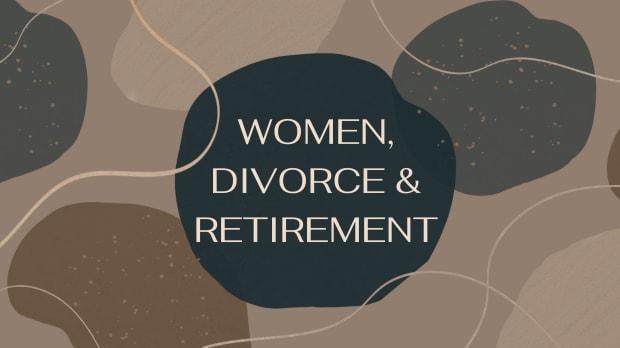
Women, Divorce and Retirement: Be Bold to Secure Your Future
“Joyce,” 61, of Virginia offers up a supportive message to fellow divorcees.

Homeownership is Still a Key Part of the American Dream
Bloomberg News

Medicare's Annual Election Period Ends on December 7th
Meet the Experts
Bob Powell (00:03): All right. Welcome everyone to our Women, Divorce and Retirement webinar. I'd like to remind everyone that all attendees are muted and off video, but the event is being recorded. And if you have a question, please type it into the chat box at the bottom right of your screen. Panelists will, we’ll have panelists speak to their top items and cover questions as we go through the webinar today. And as a reminder, everyone will receive a link to the recording when it's posted on retirement daily.
I'd like to take a moment to introduce our subject matter experts for today's webinar. We have Rick Fingerman, who is the co-founder and managing partner of Financial Planning Solutions. We have Katie Marsden, who is a wealth advisor for Buckingham Strategic Wealth. And Amy Shepard who is a financial planner at Sensible Money. Welcome.
So, the order of business today is in essence to look at what happens now that your divorce is final. Where do you begin as you contemplate your new life as a divorced woman? And Katie, we're going to start with you. You've developed a checklist that outlines the topics that divorcees need to address, including how assets in a house get divided. Where do you suggest that they begin?
Understand Your Goals
Katie Marsden (01:25): So, one of the best places to start is to really take a step back and what I like to call it is redesigning your future. What I mean by that is starting from scratch with really all of your financial plans to reassess what's important with you and how maybe your goals have changed for the future. There's likely been changes in your life, some big, some small changes around income sources, cash expenses, maybe where you live, how much assets you have towards retirement. There's been quite a bit of changes. I recommend people really just take a step back and start with the basics of putting together a new plan and focusing on what their goals are.
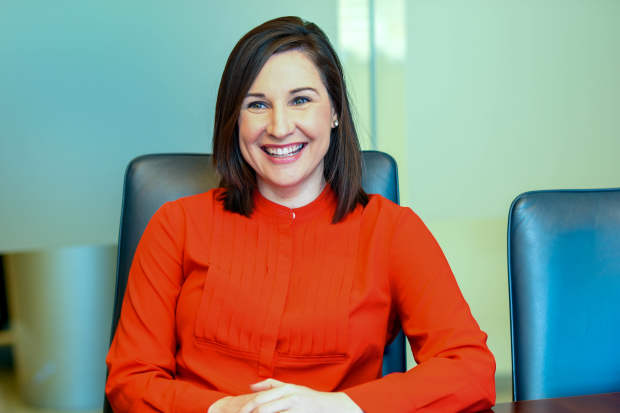
So, kind of thinking through what do you want your financial future to look like? Have your goals changed; your aspirations changed? Has your timeline, maybe, for retirement or other things changed? And then taking a look and figuring out, okay, what do we need to change as far as your finances go to support those goals? And not everybody's ready to do this on day one, but the idea is to get you start starting to think about how some of these changes in your life should change your overall plans.
Bob: You mentioned goals-based planning. Why is that important?
Katie: It's important because it is really focused on you as an individual and what you're trying to accomplish, rather than just focusing on a return figure. Other things, it's to make sure that your needs are met as an individual and that you get where you're trying to go at the end of the day.
Bob: In terms of cash flow, two things that probably might be different than they were before you were divorced is the notion of having child support and alimony. Is that something that people need to weigh into their plans as they think about their basics?
Katie: And it varies so widely from every individual. So, cash flow in general has likely changed a lot going from possibly one income to two or two incomes to one or one to having just support payments. So, starting a really close look at your cash flow, where is the money going, what expenses do you have? That is a great place to start just to reassess everything and see how it fits in with your plans.
Bob: Amy, Rick, anything to add to that?
Amy Shepard: I would just always echo what Katie says. I think just having your goals figured out, knowing what's important to you, if you know that it makes it a lot easier to start tackling all the financial pieces and working through a checklist that probably does seem overwhelming.

So, I think it does help give some clarity when you can take a step back and just think about what's really important and what do you want to accomplish with your own life.
Rick Fingerman: Yes, exactly. I think those points are right on, because when you're in a relationship, your goals might be very different than your partner's goals.

So now it's your opportunity to really put a plan in place that gets you where you want to be. Having that checklist and having someone to work with, especially to work you through the process is really key.
Manage Your Risk - Insurance
Bob (04:47): So, one of my favorite topics is risk management. And Amy, obviously when someone is newly divorced, they have to revisit all the possible insurance needs that they might have, whether it's health insurance, property and casualty, disability insurance, life insurance, et cetera. Walk us through what folks need to know.
Amy: There's a lot here, so there's a lot to look through, but some of the big ones that I've seen frequently, health insurance could be a big factor for a lot of people. If you are on a spouse's group plan and maybe now, you're not able to be.
Or I have seen instances where folks are already retired and there's some setup where even though now, you're divorced, you can stay on an ex-spouse's insurance for a period of time if it's to get you to Medicare age or something like that. So, health insurance is important whether or not you figured it out before the divorce was final or after the fact.
There’re so many options out there and we all know health insurance does not get cheaper, it's only more expensive as time goes on. And so just taking the time to figure out what's the best coverage, whether it is an option that somebody might have to go through their own employer, or if you're not working, what are your options? That can be overwhelming. So just taking the time to figure out and making sure that basic need is covered, that you have health insurance in place. That's a really big one.
Another one is life insurance. And so going back to what Katie said about the goals, depending on what your goals are, your insurance needs may have changed if your goals have changed. A lot of times we get life insurance to help cover our financial contribution to our marriage, but if we're no longer married, we may not have the same need for life insurance. Or maybe the numbers still support needing the life insurance, but we have to make sure we go through the steps of updating beneficiaries. Maybe we don't want an ex-spouse listed as the beneficiary anymore. So that's an important thing to go through.
And I think it's a two-part consideration: One, do you still need life insurance and two, if you do, how do you structure it so it matches your goals? Make sure that any proceeds go where you want them to.
I think for a lot of people, especially with children, maybe they change it from an ex-spouse to their kids or if they have a trust set up or something like that, you just, again, want to tie it back to what your goals are.
Another really important thing, I think, that divorced or otherwise, [another] insurance consideration is long-term disability. It's something that doesn't get enough attention, but it is important at any stage in your life. But it's another really important thing to look at when your whole financial and emotional life changes after a divorce.
So, long-term disability insurance is really important if you are still working and maybe your timeline has changed for when you expected to retire. If there's still a lot of working years ahead of you that are needed to make your goals a reality, having long-term disability insurance is really important because it essentially protects your income. And so, if you have an unfortunate event, like something as, I'm going to say minor, as maybe a car accident that you can recover from, but it takes you out of work for a period of time, to something more serious like cancer or some other illness, that it does affect people well before we want to think that it does.
We tend to think that all that stuff really happens when we're really old, but that's not the case. And I think just again, having the risk management in place to make sure that whatever the goals are that you first identified, that you are supporting them even as life continues to throw curve balls, because I'm sure divorce is one big one, but they're, they're always around every corner. I think those are some of the really important insurance considerations to look at.
Bob (08:44): Insurance is never quite frankly, the most exciting of topics to talk about, but it's certainly one of the most elemental blocking and tackling aspects of a financial plan. Katie, Rick, any additional thoughts?
Katie: Two things that came to mind for me. One was just know when your COBRA, if you have COBRA insurance, know when it expires so you could start planning for it well before the coverage ends.
And just one other thing that came to mind was for some of the clients that I work with who have been out of the workforce, [they] have found since their health insurance is such a large expense that if they are able to find work that they enjoy doing and can have that cover for a period of time, if they're below Medicare age, that it can be a big sigh of relief from an expense perspective. So that's just something to think about how it can help the bottom line by getting that coverage through an employer.
Bob: And in cases where someone may have to use ACA, there's also the possibility depending on their income of receiving advanced premium credits as well.
Katie: Correct. Correct.
Bob: Right. Rick, at any additional thoughts?
Rick: Yes, I mean, just a few things I've seen in the years I've been doing this, sometimes on homeowner policies, you might have a rider for boats or other types of things that might not be in your picture anymore. Maybe the ex-spouse has that, or maybe that car is still on your auto policy, things like that. But it's a good chance to sit down with your agent and really look at things like deductibles, see if there's any gaps in coverage, make sure you have an umbrella policy, which is just a liability policy over and above any kind of liability that you have on your car, because we live in a litigious society and if you happen to hit someone with your car or they fall down your stairs, you want to be protected that way.

And then lastly, one thing I've seen is where the divorce decree might have said that life insurance was supposed to be kept for a spouse for a number of years. So, you want to be careful of changing beneficiaries, which I totally agree with because I've seen more mess up with people that just never change a beneficiary, whether it's life insurance, whether it's a 401(k) plan, and that exposure is still on there and it can cause real problems later on. So just want to be mindful of all those things. As you pointed out, insurance isn't always the most riveting topic, but it is a really important one to look at.
Saving & Investing Now That Your Single
Bob (11:07): So, Rick, divorced women still need to save and invest for many goals, retirement included. What do divorced women need to know about this topic?
Rick: Well, when you are a married couple, generally speaking, one person hopefully at least is saving towards retirement. If they're both in the workforce, hopefully you're both saving. And then when you split up, in theory, some expenses go away, but two people can live cheaper than one usually. And so, it's important to have, again, that comprehensive financial plan to figure out what your expenses are going to look like in retirement and then back into how much money do I need to fund my life once those paychecks stop, whether it's support of some kind or money from a job. Once those paycheck stops, you have to rely on other forms like Social Security or maybe a pension or investments and earnings and things like that.
I think it's really important to get a handle on that first, and then you can back in and say, I need to save X for a number of years, and then just stick to that plan and adjust as time goes on. And if you're working with a financial, certified financial planner, for an example, hopefully they will keep you on track and make any adjustments that are needed over the years.
Bob (12:22): There's also, I think, Rick, this notion of one's risk tolerance may be different going forward as a divorced spouse versus when they were a couple.
Rick: Absolutely. I don't like to stereotype or generalize, but I will. Because in my experience, women tend to be more logical thinking when it comes to risk tolerance and investing where some spouses might be much more aggressive and that might not be a good feeling for that, that divorce spouse. So, you really want to look at your risk tolerance, see what you're comfortable with, and it might be a good opportunity to look at certain value-type investing, too. We have clients that want to invest in a certain way, whether that's excluding certain things like tobacco and alcohol or fossil fuels and things like that. Or also be inclusive to try to invest in companies that might have more equal pay for everyone, those types of things. So, it's a good time to really look at it as a new journey going forward for yourself versus how it might not have really fit you well as a couple.
Bob (13:30): You mentioned timelines and the need to reevaluate them. One thing that comes to mind is oftentimes women may leave the workforce during their childbearing years or may leave the workforce for one reason or another, and that impacts both their ability to save for retirement and impacts their Social Security benefits, et cetera. Amy or Katie, any thoughts about how timelines need to be adjusted given the possibility that women enter and exit and reenter the workforce?
Katie: In general, women tend to have less saved than men. They do studies showing the amount that women have saved and invested versus men. And in general, women have less saved, but for some of the reasons that you mentioned of not necessarily being in the workforce as long, but then on the flip side, women also are more likely to live longer than men. So, we have a little bit of a financial planning conundrum there, we have a little bit less to work with and a longer time horizon, in some cases. Of course, there's always exceptions to every situation, but it's something that is important to be mindful of and making sure that we're including that as part of our plan and that we're making the dollar stretch as long as they'll, they'll likely need to go,
Bob: Amy?
Amy: Yes, I always share when it comes to longevity, I have a great aunt who just recently passed away at 107 years old. And so yes, she is definitely one of the exceptions, but women do tend to live longer than men. And so yeah, Katie, you hit that the nail on the head there. It is really important. I think the only thing I would add is just that you don't need to have a lot to make a solid financial plan. I think it can be really overwhelming when you go through a major life change like a divorce, and then you start thinking about your future and people naturally think about the dollars in the sense. But I have seen plenty of situations where I work with folks that never made a substantial amount of money, but they've been able to do just fine in retirement.
On the other hand, I've seen situations where people make more money than you could ever imagine, and they're struggling to plan for their retirement. And I think the piece of advice I would give is just try not to worry too much. If you feel like you don't have enough and sit down with somebody and really look over the numbers, go back to your goals and figure out if what you have is sufficient for you. If sometimes people are surprised to find out that by doing things like delaying Social Security can give them enough monthly income to cover the vast majority of their expenses. And that can be a relief even if there isn't a ton of investment that have been accumulated. I think the takeaway is just there's always options and it's really important to explore them all.
Tax Planning
Bob (16:31): So, let's turn our attention to income taxes. Divorced women are sometimes in for a surprise when they file as a single taxpayer when it comes to RMDs or collecting Social Security. Amy, what do our divorced audience need to know about income taxes?
Amy: Bob, the big thing like you mentioned, is not only has your life changed in so many ways, but your tax situation has also changed quite a bit because now you file taxes most likely as a single taxpayer instead of a married taxpayer, which has its own set of considerations. And so, when you add a lot of the things we've talked about, one being women live longer than men, statistically; women don't have much saved, all of that. For a lot of divorced folks, there's a kind of this surprise tax bomb waiting later in life. So, as you progress through your life, as you progress through retirement, if you do have pre-tax retirement accounts, at age 72, you have to start withdrawing from them. Well by 70, you've also started Social Security. And what I often see is that later in life, especially single taxpayers, they start to creep up into higher tax brackets later on where in the early years, whether it was when they were still working or after they've retired but before gotten into their seventies, sometimes there's what we call the opportunity zone, where they have some lower tax years, they can do some long term tax planning to help reduce those future required distributions and reduce the amount of taxes they spend over their lifetime.
And so, it all comes back to the importance of having a financial plan. Looking long term and not getting so caught up in just the short term. There's of course going to be really important short-term things that you have to tackle, but it's really important to look at the big picture, look at what your goals are, and then map out what you expect your tax situation to look like over the next several decades. And then see what decisions you can make early on to help limit the amount that goes to taxes. And for a lot of people, not only do they like the idea of saving money on taxes, but it's also really comforting to know that if you have a strong tax plan in place, it has the potential to give you more money to enjoy doing the things you want to do. And I think it's just the long-term view is really important to just spend the time and look at it and make decisions based on the numbers, based on the numbers and your goals instead of just guessing on what might be the right choice.
Employer Benefits
Bob (19:07): So far, all that we've talked about does seem like quite a bit of work. Katie, any thoughts about income taxes and maybe making that topic less painful?
Katie: Two things that came to mind with that topic. One, Amy mentioned that most people have to, after a divorce is finalized, file as a single taxpayer. And just taking a look at if it was included in your documents, if you have children, if you can file as head of household, every little bit helps. And then the other piece of just who can use the children on their tax return for the child tax credits.
Another important thing, which I think we all kind of forget because you set it and forget it, but if you are working to take a look at your withholding and see how taxes have been withheld from your employer. And if going forward there is changes that you can make, so to touch base with the HR department of your company or your CPA to make sure that you're not doing too much or too little because that can make a difference in our cash.
Bob: Rick, any additional thoughts?
Rick: Katie just brought up a good point about benefits at work made me think about could be opportunities there. Again, looking at that overall comprehensive financial plan, seeing if you're on track for retirement, it might be a good opportunity to max out your 401(k) plan if that's available at work. Maybe incorporate a flexible spending account that uses pre-tax dollars to pay for medical stuff like your kids might need braces or things like that. Or even a health savings account, an HSA, which is really a great vehicle, if you have a high deductible health plan, it might be a good fit for you.
I think, again, it sounds like this whole thing comes down to having a really good financial plan and someone to help you with all that. But yeah, the tax component can be huge. You know, filing single, Katie pointed out head of household would be a great thing to do if you're eligible. And some people just don't do that if they're doing their taxes on their own especially. So yeah, I think again, look at everything that's available.
Retirement and Social Security Planning
Bob (21:23): I'd like to remind everyone who's attending the webinar that you can ask a question using the Q and A button at the bottom of your screen. We will be leaving more than sufficient amount of time to take questions from everyone here with our esteemed panelists.
So, I want to turn my attention to one of my favorite topics, retirement planning. Rick, from your perspective, what do folks need to know about Social Security, RMDs, QDROs divorce, spousal benefits, et cetera, joint and survivor pensions, et cetera?
Rick: Yes, all that good stuff. Well, we'll start with Social Security. If you're married for at least 10 years and you're divorced, you're entitled to a divorced benefit on your spouse. And generally, 50% of their full retirement-age benefit. There are some caveats of when you actually start collecting. If you collect at 62 versus your full retirement age, your benefit is reduced. If you're married, your spouse that you're collecting on doesn't, if you're married, can be married. But if you are married, remarried, you can't do that. But if they pass away and you remarried after age 60, there's an opportunity to collect a hundred percent of what they were getting. So Social Security plan can be a big piece of that to see where it makes sense to collect, whether it's your own work record or an ex-spouse’s record. When it comes to RMDs, I think Katie mentioned at 72, maybe it was Amy, I'm sorry, at 72 you have to start taking these required distributions and it's a good opportunity.
Someone pointed out that there might be a window where your income is lower and maybe there's some opportunity to during those low tax bracket years to do things like Roth conversions where you could limit the amount of those required distributions that you might need later on if it seems like you're going to be in a higher tax bracket later. So, looking at all that I think really makes sense, too.
As far as QDROs, I’ve seen situations that QDROs, basically a qualified domestic relations order, and it's generally around someone's 401(k) or workplace plan to split that up between spouses, so it's not a taxable event. So, you want to make sure that once the divorce is settled that the QDRO has not been, those assets haven't been transferred, you want to make sure that that gets done properly. Because that I've seen cases where that sits around for five, six years and just never gets done and that's not ideal.
The Value of the Checklist
Bob (23:51): What advice do you have around making sure that it does get done? Working with a planner, having a checklist in place?
Rick: Yes, absolutely. Working with a planner, having that post-divorce checklist to some, make sure nothing's forgotten. The checklist I think is a great idea because it could be as simple as saying check beneficiaries, is the QDRO completed? There was one, was the house retitled, if you're keeping the house, all those things are really important because it's easy to forget this stuff even for us that do it every day. So, we really want to have some kind of checklist, check it off. I always feel good checking things off personally, I've even written things down just so I can check them off. But it's a good feeling and I think the client feels good too, knowing that they're making some progress.
Bob: Katie, I know you're fond of checklists. Any additional thoughts on QDROs and Social Security and RMDs and retirement planning in general?
Katie: Yes, I make a checklist for everything. I would just echo a basic, what Amy was saying earlier, about not getting overwhelmed or feeling that you, maybe, aren't exactly where you want to be at a certain point. Because the reality of a lot of divorces is that you had a pot of money that's now split in two. And that regardless of how big or small that amount is, it can make people feel uneasy because you're planning with a different amount than what you had been previously.
So, what I like to remind people is that in any retirement planning there's always levers to pull. You can save more, spend less, work longer, it just depends on your priorities. So, before you get overwhelmed by looking at how the dollars have changed, also taking a look at how maybe some of your habits could be adjusted to where you can still end up in the same place. But just what levers can you pull? And for different people that's a different answer. So just exploring those options and seeing how to get to a comfortable place with getting to retirement.
Bob: Amy?
More on Social Security
Amy: I think I just will emphasize the importance of the Social Security planning. Social Security is, like many of the topics we're discussing a lot, a lot of rules, there's a lot of nuances but there's also a lot of benefit. And I think some people are often surprised when we put the numbers on paper to show how much value Social Security could provide over a lifetime. And then how that value can change, depending on if you start benefits earlier or later.
And, I think, just emphasize the importance again of just taking the time to work through these things carefully. A lot of the decisions that you make when it comes to retirement planning are one and done. You make the choice and you want to make the right one. And so, to make the right one and not regret a decision or make it hastily, I think it's just really important to spend the time working through all the details.
Bob (26:52): I know when I talk to readers, they're often surprised that they're entitled to divorced spousal benefits or even a deceased beneficiary’s benefits. Do you find that to be the case in your practice that divorce women are sort taken aback that they can receive those benefits?
Amy: Sometimes people are, they just didn't know what the rules were or there's just such so much conflicting information out there they didn't understand them the right way. There's also a lot of confusion about the amount that you can receive. I've had a lot of people come to me and say, oh well I thought I could just get 50% of my ex-spouse's benefit because we were married for 10 years. And that is partially true, but sometimes you know, 50% of their benefit may not be as much as if you took your own benefit.
And so Social Security, the way that it has tended to work is when you do file for benefits, they look at an ex-spouse's record and they give you the biggest benefit you're entitled to. But sometimes Social Security doesn't always know all the rules depending on who you talk to when you call. And so, I think it's just important again, to just not only spend the time to do your own homework, and some people don't love doing their own homework and that's okay, that's why it just makes it even more valuable to work with a planner that can help you go through all of those pieces and make sure that what you heard or what you think you're entitled to is the right thing for you.
Defined Benefit Plans
Bob (28:19): So, they don't as prevalent as they once were, but some folks still have defined benefit plans and typically the beneficiary can choose a single life or maybe a joint and survivor option as well. Katie, any thoughts about what folks, divorced women need to know about defined benefit plans
Katie: As far as receiving them?
Bob: After the, post-divorce?
Katie: That can be a little complex. Most of the time it's determined, kind of what's going to happen, with those plans during the divorce. So oftentimes I'll see that a client will, or maybe you didn't necessarily work at an employer, but you're entitled to a portion of your ex-spouse's pension and some places it's easier and harder to get information. Some of them you have an option to get a lump sum. Others you can take it at your retirement age.
There's a lot of different rules so it can get a little complex. But what I would say is to make sure you call, get all of the information that you can from the plan administrator, and understand timing, what those payout amounts might be, what happens to your benefits if something were to happen to you, if you could name a beneficiary, there’s just a lot to make sure that you get the information and then when you can start taking those benefits and how best to receive them. So that's where just getting the information is the first step because every plan is different
Estate Planning
Bob (30:01): So, we've covered a lot of ground. The last big topic is estate planning and divorce. Women, obviously they need to update their wills. Durable powers of attorney, we mentioned beneficiary designations, and the like. Katie, talk more about estate planning for divorced women.
Katie: Estate planning tends to fall, I think, at the bottom of everybody's list. It's thinking about our own death, is not really something most of us want to do, but it's really important and particularly after a divorce.
I use this example because I think it really hits the point that I'm trying to make. Assume that you were to go out tomorrow and were hit by a bus and you haven't updated any of your documents. Do you really want your ex-spouse to be the one making decisions about your healthcare if you haven't updated it? And if it were me, I would say absolutely not. That's not really who I'd want in charge. Not necessarily a bad thing. Sometimes that might be still the person you want, but having the option to take a look at your entire estate plan and decide who are the people that you trust, and that you want in those roles, that may different.
I mean oftentimes when you're married it's by default you pick your spouse to make those decisions, both from a financial perspective and health perspective, and named in your will. That likely has changed for most people. You might want to name if you have adult children, to name them or maybe a sibling or somebody else that you will carry out your wishes. And I'd say a lot of our planning from an estate planning perspective changes after a divorce of what we want to happen with the dollars that we have, where we want them to go, are they different people? Do you have charities in mind?
We always recommend to meet with an estate planning attorney. Most of the time you're going to want to start from scratch because if you did have documents in place previously, they might not be as relevant anymore. But you just want to make sure that you have the right people in place to ensure that your wishes are carried out if something were to happen to you. Also, important if you have children and there's decisions that you want to make sure are known and in writing. And if there's funds being left to them who you want to be the guardian of that. There's quite a bit from a planning perspective of just making sure your wishes are known and updated and you continue to keep them relevant.
Bob: Rick, Amy thoughts on that?
Amy: A couple thoughts came up for me. One of the big ones is yes, super important to update all your estate planning documents, but also really important to know that just because you update say your last will, if you don't also update all of the beneficiaries on your other accounts to match, the will to a certain extent can be irrelevant.
What I mean by that is if your will says one thing, but the beneficiary on, say your retirement account, says something else, the beneficiary listed on the actual account is what is going to hold true. And so, I think it's just important to know it's not as simple like most things, it's not as simple as just update your estate plan. You still have to go through each account to make sure all the beneficiaries match. So, everything says the same thing. The other thing is that if you are working and you work for a large enough company, a lot of big companies offer the option to enroll in a legal plan benefit during open enrollment.
I know when people hear the term estate planning or an estate planning attorney, they see dollar signs and they say, oh that sounds really expensive. And it can be. I mean basic estate plans usually run a couple thousand dollars.
One way to still tackle it but more maybe cost effectively is, if you have a legal plan benefit through work. It's something that you don't want to postpone, you know, ought to tackle it. And with legal benefits through work, usually you can only enroll in them during open enrollment or if there's a qualifying event. You may have the option to sign up for one even if it's not open enrollment. But I think the short version of the story is make sure your new estate plan matches all the account beneficiaries and also just look at options on how you can try to get your estate planning done for as an affordable cost as possible.
Q&A
Bob (34:48): We have some questions that have come in from our attendees, I'll just go through them one by one and they can be jump all.
“I did not get the house in my divorce and have been told by friends that I'll be renting from here on out. Is it feasible for a mid-sixties age person to consider purchasing a small house once the housing market cools or is it better to hold onto the small amount I'll have towards living expenses, medical, as I age?”
Rick: Good question. I find the house is one of those areas that's probably one of the biggest topics in a divorce. Who gets the house? Someone wants to hold onto the house and many times it's not a financial reason, it's an emotional reason.
I was raised that renting was throwing money away, so, you want to always buy a house. But I have found, especially as I've gotten older and don't want to get up on a ladder and clean gutters, that renting is not really the worst thing in the world.
And I think, again, it comes down to having that comprehensive financial plan to see when you own a house, people sometimes think, well I've got the mortgage payment, I've got taxes, I've got insurance, and a water bill maybe, and then that's it. But stuff happens in a house. The roof needs to be replaced, the boiler breaks down, the water heater lets go at 3:00 AM. So, there could be ongoing cost that you might not incur while you're renting.
I think, you know, really, want to look at that and make your life as easy as possible. Sometimes renting is the right answer, sometimes buying just like, it depends, is kind of that catchphrase for a lot of financial pieces.
Bob: Amy? Katie?
Amy: I agree a hundred percent. I have run scenarios; I've been asked that exact question. And what we do is we run a side-by-side comparison. If all else is the same, here's one version where you do buy a house, here's one version where you rent. We typically assume rent does increase with inflation, as the years go on, because that's what happens in real life.
In the house version, we do try to account for some annual cost to maintain and repair a home and we just look at the numbers, what looks better, what looks better it. You're making guesses, you have to have some assumptions in there. But it is a really helpful way to, instead of just guess how does it feel, what numbers actually look like, your retirement plan will be more sustainable.
I think that's one way to approach it is first you look at the numbers and if the numbers very clearly show one is better than the other, sometimes that's all you need. What I do find is a lot of the times the numbers don't really necessarily show one is that much different.
And so, then it comes back to the values conversation of, if you rent or you buy, maybe the plan still looks great, but which one feels better? Do you feel better having your own place that you can call yours or do you feel better knowing that if, you know, get termites, you can call a landlord and they can come take care of it. It's kind of all those pieces together.
Bob: Katie, I'm sure you have some thoughts too.
Katie: Well, and the only thing I was thinking, because this is a question we get a lot of, is what makes the most sense? And, I hate the answer, is oftentimes it depends. It depends on how they spend and what that might look like. But really there's the question of does it need to come out of my portfolio or should I save it?
I mean there's also the option of does it make sense to take an amount out for a down payment and then do you qualify for a mortgage and can you get a mortgage to where you're in a comfortable house that's maybe spending less than what you were on rent? Another one of those examples of there's always variables but that you can adjust in different scenarios.
So that would be one where you just, you have to crunch the numbers, but at the end of the day, where are you most comfortable and what's going to provide you the greatest chances of success? Having it in your portfolio that you can access it or helping with cash flow by owning a home.
Bob (38:54): Another question is:
“How do you plan for retirement and your kids' futures when you only have one income? Some of us don't have child support or alimony. If there is any money left over, how best to invest for the kids’ 529 versus custodial account versus other options?”
Katie: Another great, great question. The first thing that I often think of is you can always borrow money for college and you cannot do the same for your retirement. So, make sure, I know it's hard, I'm a mom myself, so I want to set my kids up with, to be successful, to do everything in my power to make sure that they have the money that they need to do X, Y, and Z. But a good way to think of it is doing, you're doing them a service by taking care of you first.
Make sure you have what you need in retirement and then what makes sense if, how much do you want to contribute to the future? What is the goal for the money? If it is for college, then 529s are an excellent tool. And if you want to just have some money set aside for them to have complete flexibility of what they use the money on, then custodial account is a good option. If you want to set it aside in a brokerage account in your name and you don't necessarily know where you want it to go or what that will look like, but the ability to use it on yourself if you need to, that's when I go the third option for a brokerage account.
But pay yourself first and then really be clear about what you want to save for, for your kids, and then see if you can come up with some compromise to make sure you're taking care of both goals but not sacrificing your retirement first.
Bob: Great advice. Amy or Rick?
Amy: I agree with all of that. I went through a brief moment of thinking I was going to start being really generous and saving for my kid's future and then all of a sudden, we had three of them and I was like, you know what, let's go back and look at my goals. And what I try to think of too, everything Katie said is totally true.
But I also just think of, if you save for your retirement first, one of the kind of lights at the end of the tunnel you can look forward to is if you put yourself in a really good place for your retirement, maybe what will happen is by the time your child gets to college age, you are in a better position to maybe help them.
You've saved for yourself, and maybe you don't have a ton saved towards their college or saved towards their first home or whatever it may be, but now you're more financially secure enough to be able to maybe help them with covering some of the costs of books or taking money from your own savings to just help make their life a little bit easier, so it doesn't have to be all or nothing.
Rick: And I think college planning could be a whole other webinar, actually a 10 hour one. But as a single parent that's not earning a huge amount of income, there are opportunities for more financial aid. and we don't know if the child is two years old now, we don't know 16 years from now what that's going to look like.
But again, I think Amy and Katie are right on board. It's kind of [like] putting the oxygen mask on yourself first on the plane before you put on someone else because if you don't take care of yourself then your kids are going to end up taking care of you and that's probably not a good thing either.
Retirement first, there's always a way to pay for college. But as Katie pointed out, as far as I know, I haven't seen any loans for retirement unless it's like a home equity line of credit and that's not a good strategy so don't do that. So yeah, there's always a way to pay for college. It might be a different school or it might be something else.
Bob (42:47): Another question is:
“How do you find a retirement planner who's also an expert on taxes? I can't seem to find them wrapped into one person and then when they are separate, the perspectives and advice don't mesh.”
Rick: That's interesting. I'm thinking they mean saving for retire, like having a retirement plan, but also looking at the tax implications. There are certified financial planners that are also CPAs out there and there are also certified financial planners that are very well versed in taxes. I would just recommend probably interviewing more people and finding the right fit.
Katie: It's also becoming increasingly common for firms to have CPAs on staff. I know at Buckingham we have CPAs that will actually do your tax return and then you have an adviser and then they work together to make sure that your retirement plan and your tax plan are cohesive. I think that is becoming more and more common at firms. So that might be a good option, looking for a firm in your area that has an offering similar to that
Bob: Amy?
Amy: Yes, we do the same as Katie described. And I would say, also, one of the things that I find is that if you look for a financial planner who leads with a financial plan, usually you can find more of that comprehensive advice.
What I mean by that is, a lot of times, it's unfortunate but people call themselves financial planners or financial advisers, and they don't ask you anything about a financial plan, they just want to manage your investments. Which is an important piece of the puzzle. But generally, we always say at Sensible Money is, if you ask us how to invest your money, we're going to say, well, we have no idea, what's your plan? We need to know the plan so we know how to invest your money.
And think if you go out looking for a financial planner or an adviser that does the plan first, usually you find that that approach also translates really well into also looking at the tax piece, too, because they are connected.
Bob (44:59): Another question we got revolves around, we mentioned risk tolerance earlier about investment planning and saving investing. The comment is:
“I can say that risk capacity will also change and it should be reassessed along with risk tolerance as a result, as the asset allocation strategy will most likely change and the new financial plan will be the blueprint for this. Any thoughts about that?”
Katie: I mean as your risk capacity changes depending on, most of the time after a divorce, not only will the tolerance for risk, but also it becomes, for a lot of people, they can need and want a sense of security. So as far as risk is concerned, it becomes just as important if not more important to retain what they've saved and what they've walked away with. And that outweighs sometimes doubling or tripling it in, if you're following me there, just the financial situations change. So certainly, I would agree with that.
Bob: Rick or Amy, any additional thoughts?
Rick: I think risk tolerance is one of those things, depending on when you measure someone's risk tolerance, if you measured it this year, I think you would get a very different score than if you measured it two years ago. It's usually changing as someone ages; it probably changes because they're getting closer to maybe not working. It's something that is an important conversation to have and ongoing as well.
Amy: I would just add, too, that if you're talking to a financial planner and you don't feel comfortable with their approach, keep looking as it's not a one-size-fits-all. There are lots of approaches out there to investing and retirement planning and you have to find one that you're comfortable with.
I think it's important to interview a lot of different people and find one that just does feel like the right fit for you. Some approaches are more risk averse and some are more comfortable with risk and you have to find the one that you can sleep at night using because if it's something that you don't feel good about, you're not going to enjoy it, you're not going to feel comfortable with it and you're probably going to change course at not a good time. You need something that fits with you.
Bob (47:24): We have about 10 minutes left. We have a boatload of questions here. I'll try to go through them as quickly as possible. The next one reads, I'll try to paraphrase:
If someone has sufficient equity in their house, could they look at a reverse mortgage for purchase with no mortgage having to be made?
Katie: So, if they have sufficient equity, that would assume they already own the house. Yes, it's an option. That's certainly an option. I have clients with reverse mortgages that it made sense at the time. So really that's one of those things that you'd have to evaluate.
Bob (48:01): All right. I'll move on to the next one. We'll do this rapid fire.
“What do you do first? Find a financial planner or an estate planning attorney. Can one person set you up with everything? How do you leave money for someone who has a mental illness?”
Rick: Great questions. I think they both dovetailed together because definitely someone with mental illness, you know would probably use a special needs trust. You need an estate planning attorney to do that piece. I personally would, I'm guessing biased, but I would start with a financial planner because they have other relationships generally with CPAs and estate planning attorneys and they might be able to find a really good fit for you based on their needs. So that's where I would start.
Amy: I would just say to start with, if you find a really good estate planning attorney and you trust them, you start there and they probably have recommendations for a financial planner just like the other way around. I do think it goes back to finding someone you're comfortable with first and foremost.
Bob (49:05): All right, so let's see. The next one I have is:
“I plan on selling my house when I have two of my three out of the house. Should I invest the profit from selling my house, approximately six years away, or put profit towards a smaller mortgage when you would be about 10 years from retirement?”
Amy: That dreaded answer, it depends.
It depends on the math. I would say if it was two years ago, most of the time the math would support taking the cash and investing it because mortgage rates were so low. With mortgage rates continuing to creep up now, running the numbers and really look, doing a comparison, is so much more important because it does really depend.
I think when you're looking at retirement planning, generally we want to assume a pretty conservative rate of return on your retirement investments. The concept of you want to under promise and overdeliver. You'd rather plan for the worst, hope for the best.
So, if you were conservatively saying, oh my retirement investments maybe will average 5% a year over my lifetime, but now you have to get a mortgage with a 7% interest rate, quick math just says, oh, I'm paying 7% on the debt and I'm only going to earn 5% on the investments, I would rather pay off that mortgage as quick as possible. Those are some of the rules of thumb, but it really does come down to, again, comprehensive plan and just looking at how all the pieces fit together.
Bob: No getting around that plan, I think.
Amy: We all need bumper stickers. “It depends,” the financial planner's favorite answer.
Bob (50:43): All right, we got the one last question here.
“What if you had everything in place, including long term disability, and became disabled and employer long term disability denied your benefits, typical, can never work and you're only 57 years old. SSDI doesn't cover much even though I'm maxed from it. Is the only option alimony modification? What happens when I turn 65 and alimony, a very low amount, ends?”
That's a lot of questions.
Amy: I don't know if I have an answer for that one.
Rick: Not a simple answer, for sure.
Katie: And that would be a good example of a time where working with someone who can take a look at your current disability policy, make sure that, I mean ,of course you wanted to look at it before you're disabled to make sure that it is the type of coverage that you're hoping and needing. It sounds like you're already disabled, so having someone look and make sure that the insurance company is correct in their denying of benefits, that there, there's not any other options there.
And, I would just see if I could find somebody who knows disability insurance well and the options with Social Security to help you evaluate those options. I actually might start with going back to the attorney that you worked with and seeing if there is, how much it'll cost to modify your alimony, and if there are any options to having it go beyond 65. But that really depends on your case and what state you live in and what the options are there. So, in your case, I might start back with the divorce attorney and then work with someone who specializes in disability.
Rick: And I imagine that some disability insurance companies just deny a claim the first time around, and Social Security might. So, it's definitely worth, again, like Katie mentioned, get an expert in and look at reapplying and challenge them, and maybe they'll change their answer.
Final Thoughts from the Panelists
Bob (52:56): We have about four minutes left. I want to leave time for each of you to provide a summation of “what now?” questions, now that someone might be divorced and embarking on their new life. Rick, why don't we start with you?
Rick: So, I guess we start with, it depends, and also, it's really important to have a good comprehensive, holistic plan to really look at every detail. And again, as Katie pointed out, we don't want to overwhelm people, so we just bite off as much as we can chew and start with the more important things first and then work our way down the list.
And it might take a few months, it might take a year, but it'll get done. And especially if you're working with someone that can kind of keep you on track. And I think that's really, really key.
Bob: Amy?
Amy: Yes, I a hundred percent agree with the comprehensive financial plan, identifying what your goals are and then sitting down and taking the time to map it all out is important.
I think the other thing I would just say is I always try to be a glass half full person and I think we all go through really challenging times in our life, some more so than others. But as hard as it is to go through it, I always just try to remind people that you will get through it. It's going to stink right now while you're in the thick of it. It usually is really overwhelming and it's hard to think about what life might be like on the other side. But I think that also just adds to the importance of sitting down, thinking about your goals and trying as much as you can to think of it as a fresh start and a new opportunity.
And hopefully it, it's the bad stuff's behind you and the good stuff is what you have to look forward to.
Bob: Katie, you get the last word here.
Katie: Okay, so I'm going to go with very simple advice. Just staying organized.
You have a laundry list of things that we've told you, we've shared with you a lot on your to-do list. One of the best things you can do for yourself is just stay organized and if you need a little bit, help finding someone to be an accountability partner.
If you don't have access to a financial adviser, aren't already working with someone, find someone else in your life that can check in with you to make sure that you're getting all of these things crossed off your list because they're so, so important. So just find anyone that is willing to help nudge you along and provide friendly reminders.
Bob: Well Rick, Katie, and Amy I want to thank you for sharing your knowledge and wisdom with our attendees today. It is greatly appreciated and I want to thank all the attendees for today's session. It has been recorded. We will post it on Retirement Daily so you can view it again if you miss something or want to re-listen to it at a future date. And again, we'll thank you.
We plan to do these webinars every quarter. We plan to focus on a different topic. I guess I should ask Amy, Rick, Katie, is there a topic that we should drill down on the next webinar?
Amy: Trying to think what's the most important.
Katie: I mean, investing in retirement planning, we could probably all three talk for hours about each of those topics. So, getting a little bit more specific on strategies and ideas and things like that would probably serve people well.
Amy: Right.
Bob: Perfect. That'll be the topic for the next one. Thank you again for attending and thank you for being our special guest today to help folks. Thank you again
You May Also Like...
Other relevant articles from Retirement Daily

Think You Can’t Retire Now? Think Again.

Ask the Hammer: Are Medicaid Compliant Annuities a Good Idea?
Jeffrey Levine covers the topic of acquiring Medicaid compliant annuities.

Talkin’ Turkey: Medigap or Medicare Advantage Plans?
Ten questions to liven up your Thanksgiving conversations.
TheStreet
By Dr. Katy Votava
TRICARE is a healthcare insurance of the U.S. Department of Defense Military Health System that provides health benefits for U.S. Armed Forces military personnel, some members of the Reserves, military retirees, and their dependents who are under 65 years of age and not on Medicare. TRICARE brings together the healthcare resources of the Military Health System—such as military hospitals and clinics—with a network of civilian healthcare professionals, institutions, pharmacies, and suppliers.

To avoid confusion, it is important to know that TRICARE FOR LIFE (TIF) is a related but separate program for retired military and their spouses who are on Medicare. For more information about TIF check out my recent article Medicare and the Military: How to optimize Medicare for military veterans and retirees.
TRICARE offers a robust menu of health insurance coverages through a tiered structure. The tiers move from brackets with lower out-of-pocket costs for members using in-network healthcare professionals and organizations to higher-cost brackets for services from out-of-network care sources. TRICARE allows its members to use healthcare services within the Military Health System as well as community-based healthcare providers. As is always the case, members will get a bigger bang for their buck when using in-network providers. That’s why people need to compare their healthcare needs with those covered by TRICARE to decide if TRICARE meets their needs best.
Follow us on Instagram and Twitter!
There may be occasions when current or prospective TRICARE beneficiaries ought to evaluate other health coverage options to determine if there is a more suitable alternative. For example, a spouse may have access to an employer health plan that is more suitable and cost-effective than a TRICARE plan.
Affordable Care Act (ACA) plans might provide alternatives. Now is the time to look at those offerings to decide if there is a more suitable health plan. ACA annual enrollment is open Nov. 1, 2022, and ends Jan. 15, 2023. Applications filed by Dec. 15, 2022, have a 1/1/23 start date. Those who apply between 12/16/22 and 1/15/23 will have a 2/1/23 effective date.
Medicaid and Child Health Plus might work for some military families to provide more cost-effective healthcare than TRICARE. Medicaid and Child Health Plus are income-related health insurance plans that are administered at the state and local levels. Folks can get more information about those options by contacting their state department of health.
For more TRICARE information and to determine which regional office covers you call 866-773-0404, or visit www.Tricare.mil.
For more ACA plan information call 1-800-318-2596 or visit www.Healthcare.gov.
Also, read Preview 2023 TRICARE Health Plan Costs.
About the author: Katy Votava
Dr. Katy Votava, president and founder of GOODCARE.com®, is a registered professional nurse and has a Ph.D. in health economics and nursing from the University of Rochester in Rochester, New York. With her in-depth experience as a nurse practitioner and healthcare administrator, Dr. Votava is an expert in healthcare reimbursement and outcomes, including those related to Medicare, Medicaid, and long-term care. A major focus of Dr. Votava’s research is health care costs for people during their retirement years, and she has been published widely and spoken frequently on these topics.
You May Also Like...
Other relevant articles from Retirement Daily

A Next-Gen Investor’s Journey to Opening a Roth IRA

Retirees Going Back to Work: Starting a Business
Are you retired? Do you want to start a business? Here are some things to consider!

How Your Adult Children Can Stop Relying on You Financially
Read below to discover the balance of supporting your children and your bank account.
In Case You Missed It
Fixed-Income Opportunities in a High-Interest Rate Economy
There is still hope for fixed-income investors. Hear from our expert on three ways investors can benefit from rising interest rates.
2023 Individual Insurance Open Enrollment Period Begins
The Open Enrollment Period (OEP) for individual insurance in 2023 began November 1, 2022, and ends January 15, 2023. Here's what people need to know.
Think You Can’t Retire Now? Think Again.
Our expert shares the four key factors to a financial plan and what determines if you can retire now versus later on.
Talkin’ Turkey: Medigap or Medicare Advantage Plans?
Ten questions to liven up your Thanksgiving conversations.
Women, Divorce and Retirement: Be Bold to Secure Your Future
Homeownership is Still a Key Part of the American Dream
While the goal of owning a home is still traditional, the path to purchasing one is no longer that. Read here for advice from our expert on tackling the challenges of achieving homeownership in America today.
Medicare's Annual Election Period Ends on December 7th
Are you ready to make changes to your Medicare plan? Here's what you need to know before the end of AEP.
Have you recently become a widow? Here is a five-step guide to making smart financial decisions on your own in a time of grief.
How to Manage Your Holiday Spending
The holiday season means holiday shopping. Here's a guide on how to holiday shop without breaking your wallet.
Common Retirement Questions: Should I Roll My 401(k) Over into an IRA?
People often ask their financial advisers questions about retirement. The sixth most common question is about the decision to roll over their 401(k).
Retirement Daily's 2022 Reading List
Looking to start a new book? Here's a list of our top picks.
Ask the Hammer
Email your questions to [email protected].
]]>You may also want to peruse the original list. Here’s the link.
Happy reading from the Retirement Daily team!
2022 Reading List
Books may be available for free or for purchase; in paper, electronic, and/or audio format.
Reimagining Retirement - The 9 Keys to True Wealth - by Eric Weigel. Retirement today is a lot more complex than that of our parents and grandparents. Weigel shows how to find joy and fulfillment in this sea of complexity and confusion by starting with what you want then working backward with a system to create the change you want.
Death's Red Tape - Your Guide for Navigating Legal, Financial, and Personal Transitions When a Partner Dies - by Mark Colgan, CFP. Writing from personal experience, Colgan guides you gently through the financial and administrative process following the death of a loved one, with simple steps to master the mountain of financial and legal details. Read our book review.
Breaking the Age Code - by Becca Levy. Dr. Becca Levy's research shows how age beliefs shape all aspects of our lives. Many health problems of the aging process, such as memory loss, hearing decline, and cardiovascular events, are influenced by the negative age beliefs that dominate in the U.S. and other ageist countries.
Being Mortal - by Dr. Atul Gawande. Atul Gawande tackles the hardest challenge of his profession: how medicine can not only improve life but also the process of its ending
On Belonging: Finding Connection in an Age of Isolation - by Kim Samuel. Each chapter describes a different challenge Samuel faced and the powerful and creative people she collaborated with to accomplish meaningful results. Read our book review.
It's All About the Income - by Michael Lynch. You’ve spent your entire life working hard and saving. You ask yourself: Do I have enough? This book will provide you with the tools to answer this question definitively.
Still Alice – by Lisa Genova. A moving and vivid depiction of life with early-onset Alzheimer’s disease, written by New York Times bestselling author and neuroscientist Lisa Genova.
Creating Moments of Joy Along the Alzheimer’s Journey - by JoLene Brackey. Practical advice sprinkled with hope, encouragement, stories, and generous helpings of humor for caregivers and families.
Inheriting Your Spouse's IRA: The Widow's Guide to Keeping More of Her Assets - by Bill Harris, RMA®, CFP®. Decisions about what to do with an IRA inherited from your spouse must be done right the first time or suffer the tax consequences. This book is a valuable guide for every widow who inherits a retirement account.
Beyond Diversification: What Every Investor Needs to Know About Asset Allocation - by Sébastien Page. Shows investors (and financial advisers for that matter) how professional money managers construct investment portfolios. It’s not a technical book, but it’s not brain candy either.
The Psychology of Money: Timeless Lessons on wealth, greed, and happiness - by Morgan Housel. 19 short stories exploring the strange ways people think about money and teaches you how to make better sense of one of life’s most important topics.
An Uncommon Guide to Retirement: Finding God’s Purpose for the Next Season of Life - by Jeff Haanen. Planning retirement doesn’t have to be distressing. Retire in a way that’s God-honoring, purpose-filled, restful, and truly biblical.
The New Retirement Savings Time Bomb: How to Take Financial Control, Avoid Unnecessary Taxes, and Combat the Latest Threats to Your Retirement Savings - by Ed Slott. The complete action plan from Ed Slott, "the best source of IRA advice" (Wall Street Journal), to help you make sure your 401(k)s, IRAs, and retirement savings aren't depleted by taxes by the time you need to use them.
Inheriting Your Spouse's IRA: The Widow's Guide to Keeping More of Her Assets - by Bill Harris, RMA®, CFP®. This book is directed at the large population of people who need reliable tax and financial advice. Even with married couples, one of those spouses will one day be single, so this advice affects virtually everyone, but yet it is still not sufficiently addressed until now.
The Retirement Remix - by Chip Munn. A fresh, flexible approach to retirement planning and goal setting through bite-sized doses of timely, actionable financial planning and retirement tips alongside remixed retirement stories from real people just like you.
The Psychology of Money - by Morgan Housel. Housel tells a story more about extreme financial discipline and patience versus extreme financial recklessness and ego than it is about investing per se, but the same type of discipline and patience is critical for a successful investing experience, and it’s far more important than creating the “perfect portfolio,” whatever that is.
Maximizing Social Security Retirement Benefits - by Mary Beth Franklin. It is the beginning of a new era in Social Security planning amid the fallout of the coronavirus pandemic. Now is the time to make sure you claim every benefit available.
What the Happiest Retirees Know: 10 Habits for a Healthy, Secure, and Joyful Life - by Wes Moss. What the Happiest Retirees Know reveals what it takes to have a truly happy retirement. Wes Moss asked more than 2,000 of the nation’s retirees to find out—and their answers may surprise you. From his research, Moss identified 10 transformational habits that the happiest retirees shared. He outlines these habits in What the Happiest Retirees Know, from simple lifestyle choices to smart financial strategies. Read our book review.
I Just Want This Done: How Smart Successful People Get Divorced Without Losing Their Kids, Money and Minds - by Raiford Dalton Palmer. Offers those contemplating or going through a divorce sound tips on how to alleviate the emotional toll of a marital dissolution and stay focused on their post-divorce goals. Read our book review.
Follow us on Instagram and Twitter!
You May Also Like...
Other relevant articles from Retirement Daily

Jumping Ship: Should You Ditch Your Long-Term Care Insurance?
Is long-term care insurance the right choice for you? Our expert gives the rundown below.
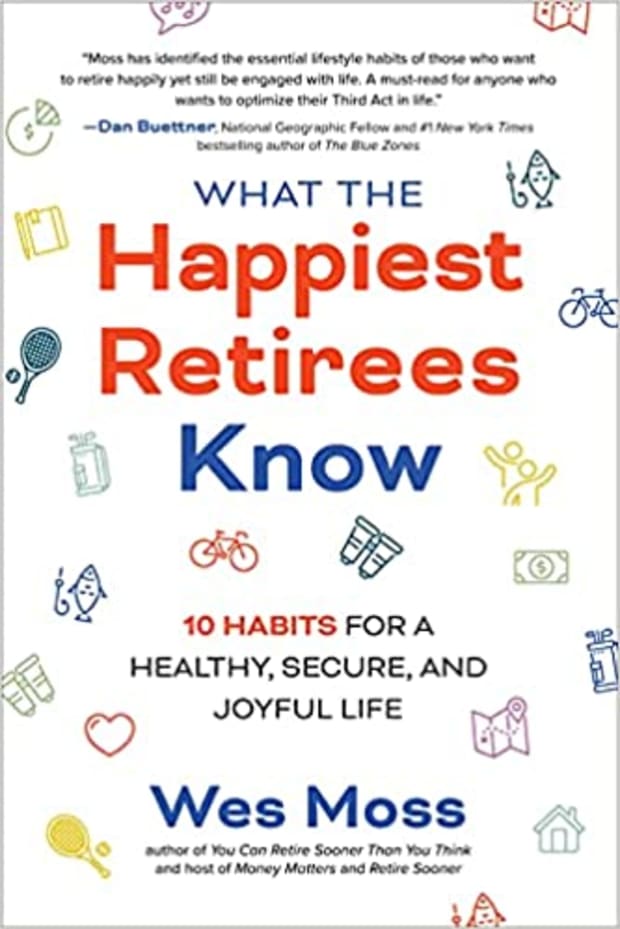
“What the Happiest Retirees Know” by Wes Moss
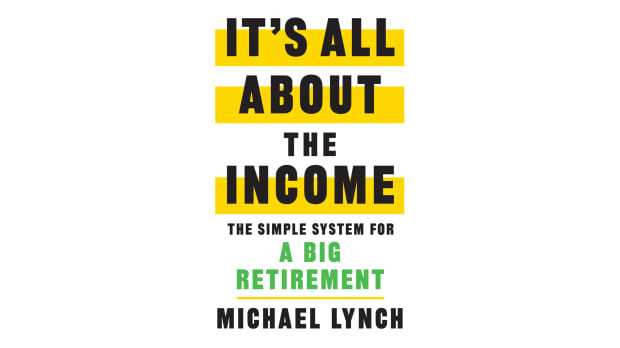
It's All About the Income, Chapter 2: Safety First!
Retirement Daily’s Robert Powell sits down with Dana Anspach from Sensible Money to tackle the 10 most common questions in retirement.
In today’s episode, Anspach discusses another common retirement question: Should I roll my 401(k) over into an IRA?
Anspach says that she likes to discuss this question in terms of pros and cons. One reason to roll over is for those who need to take retirement paychecks out of their 401(k). “The 401(k) plan will often require what are called pro-rata withdrawals… meaning if you have a portfolio of different funds, they're going to require that you sell proportionately out of all of those funds,” she says. With this, Anspach says that most of the time it makes more sense to be more selective about the asset classes you're going to sell to fund your withdrawals for the upcoming year.
She also mentions how it’s a good idea to withhold state or federal income taxes, depending on the type of 401(k) plan, since withdrawals can be taxable. Depending on the size of the provider, they may allow you to withhold either state or federal taxes, but there are some that don’t allow either to be withheld. When it comes to withdrawing from 401(k)s, advisers like Anspach think that it’s better to set up monthly or bi-monthly paychecks. Some 401(k) plans, however, only allow quarterly withdrawals, and while others may allow monthly withdrawals, it’s not likely that you will find a plan that does bi-monthly withdrawals.
Follow us on Instagram and Twitter!
Anspach also notes two important reasons for keeping the 401(k) plan. The first one is for those who may have creditor issues or may be facing bankruptcy. Although each state has their own creditor protection laws, for some states it may be better to leave the 401(k) plan alone.
The second reason has to do with investments and guaranteed income contracts (GICs.) “I have a client who has a 401(k) plan that has a stable value fund in it, and that was yielding significantly more than we could get [in] an equivalent safe, low volatility investment outside the 401(k) plan,” Anspach says. “So we left a significant amount of their balance in that plan to take advantage of that particular investment option.” In addition, GICs are unique options that are sometimes found within large 401(k) plans. So for people who want to explore that option, it may be better to keep that 401(k).
Anspach goes on to say that there are a lot of things to be conscious of when you have a 401(k), which might get complicated if you have multiple accounts. For example, you need to make sure that the beneficiary designations and options for your 401(k) are up to date. Additionally, you are required to take RMDs (required minimum distributions) from your 401(k) plan.
Both may be reasonable if there is just one 401(k) account and that may encourage you to not roll it over, but with multiple accounts, it may be too much. “I think there's a tremendous amount of value in simplicity and that means consolidating things,” Anspach says. “So that is something to think about every time you need to update an address change or a beneficiary change or your bank account change. Do you really want to have to go to five different places to do that?”
All in all, Anspach says again that one size does not fit all and that the decision to roll over the 401(k) into an IRA really depends on a lot of factors in the individual scenario. Stay tuned for the next most common retirement question, where Anspach discusses whether someone can convert IRA assets to a Roth IRA.
You May Also Like...
Other relevant articles from Retirement Daily

Ask the Hammer: Can I Convert My 401(k) or 457(b) into an HSA?
Jeffrey Levine explains what could be done with a 401(k) account and a 457(b) account.
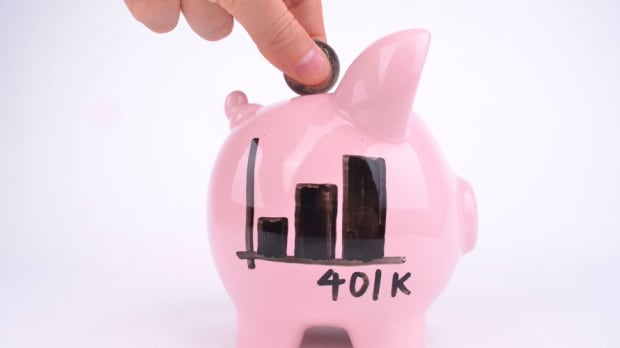
401(k) limit increases to $22,500 for 2023, IRA limit rises to $6,500

Ask the Hammer: Can I Convert My 401(k) or 457(b) into an HSA?
Jeffrey Levine explains what could be done with a 401(k) account and a 457(b) account.
By Thomas Rindahl, CFP
Well, it is that time of year again. There is a chill in the air. The leaves have all turned color and begun to fall. Our thoughts entertain ideas of holiday shopping and celebrations. It is also a good time to remind ourselves (before it’s too late) not to overdo it!

What do I mean by this? Spending. Yes, I know. Spending is key to the economy. And of course, we are all doing our civic duty by going out there to spend, spend, spend! But let’s get real. The vast majority of holiday spending is put on credit cards every year. It has been documented that Americans spend roughly 10-20% more if they use credit cards than if they would have just used cash. And the average interest rate on a credit card ranges between 15-20%, depending on whose survey you are referencing. Do you see the snowballing effect here? You put the holiday spending on a credit card. You overspend while you are doing it and you’re paying an additional 15-20% for the convenience of doing it! If this doesn’t spell out a financial train wreck, I don’t know what does.
Follow us on Instagram and Twitter!
Now, I am not saying that using a credit card is bad per se. Credit can be good. That is what your lenders trust you to borrow and pay back. But if you don’t pay it back when the bill comes in, then what was a cash flow convenience has become debt! Now you have effectively given yourself a deduction in income. You may be thinking, “Come on Thom, that’s not right!” It is! Think about it. When you carry debt, you have what is called a debt-to-income ratio. You have a $10,000 income per month and a $1000 debt payment, your DTI is 10%. But as you increase the amount of debt you carry, that ratio goes up. But how is that a deduction of income? Because more and more of your income must service that debt. It is easy to see that when overspending and paying interest on that spending come into play, financial prudence can spiral out of control no matter how good of intentions may be there. Paying for all your normal costs of life (food, housing, taxes, etc.) becomes much more difficult to afford when 10%, 20%, 30%, 40%, or more of your money is going to pay off old debt.
Ways to not fall into this debt trap.
I am going to use the dreaded “B” word. Use a budget! Plan out the spending. Decide upfront what you will spend on the holidays (gifts, entertaining, events, etc.). Then “pre-pay” for those items by setting aside the cash to pay for them all so that you don’t accidentally overspend. If you really want to use your credit card to get points or rewards, then be deliberate. Keep a record of the spending to keep yourself on track. You can still set the funds aside so that you can pay off the bill when it comes in. This may not be fun for the holidays, but controlling your budget is important and it means that you need to make prudent thoughtful choices. Americans are already in $887 billion of credit card debt, but you don’t need to be!
About the author: Thomas Rindahl
Thomas Rindahl, PhD, MBA, CLU®, ChFC®, CFP®, LUTCF, BFATM, is a financial advisor in Tempe, AZ. Through comprehensive and holistic financial planning, he has helped his clients to navigate the twists and turns of life for over 20 years.
Securities offered through Securities America, Inc., Member FINRA/SIPC. Advisory services offered through PFG Advisors. TruWest Wealth Management Services, TruWest® Credit Union, Securities America, and PFG Advisors are separate entities. Securities, insurance, and advisory offered through Securities America, PFG Advisors or their affiliates are: Not NCUA insured. No credit union guarantee. Not credit union deposits or obligations. May lose value.
You May Also Like...
Other relevant articles from Retirement Daily

Inflation Got You Down? Consider these Benefits

Can I Switch from Medicare Advantage to a Medigap Plan?
Yes, you can make the switch, but there are some things to consider before you do.

How You Can Financially Prepare for a Natural Disaster
TheStreet
By Sandra D. Adams, CFP
When we hear the term widow or widower, we picture someone older – someone deep into their retirement years. The reality is, according to the U.S. Census Bureau, the average age of a widow or widower in the U.S. is currently 59-years-old. In my recent experience with clients, I have seen the statistics become reality. Clients becoming widowed well before their retirement years has, unfortunately, become increasingly common. The issues involved with this major, and often unexpected, life transition are not simple and are hard to go through alone.

If you are one that is left behind, there are several action steps that should be taken to get back on your feet and feel financially secure. In most cases, this is the woman (according to the U.S. Census Bureau, 32% of women over age 65 are widowed compared to 11% of men). There is no timetable for when these steps should be taken – everyone grieves in their own time and everyone is ready in their own time to move on and make sound financial decisions at different times. No one should be pushed into making financial decisions for their new normal until they are ready.
The first step is identifying sources of income. For young widows or widowers, you may still be working, but may have lost a source of income when your spouse passed away. Looking at where income might come from now and into the future is important. For young widows, life insurance is likely the source of the replacement for lost income. If you are closer to retirement, you may also have Veteran’s benefits, employer pension benefits, savings plans, home equity, income from investments, and Social Security.
The second step is to get your financial plan organized. Get all of your documents and statements put together and review your estate documents (update them, if needed). A big part of this is to update your expenses and budget. This may take some time, as your life without your spouse may not look exactly the same as it did with him/her. Determining what your new normal looks like and what it will cost may take some time to figure out. And it won’t be half the cost (even if you don’t have children), but it won’t be 100% or more either – it will likely be somewhere in between. Figuring out how much it costs you to live goes a long way toward knowing what you will need and how you will make it all work going forward. Your financial planner can be a huge help in this area.
Follow us on Instagram and Twitter!
The third step is to evaluate your insurances (health and long-term care). These costs can be significant as you get older and it is important to make sure you have good coverage. For younger widows, those that are still working may have health insurance from their employer. If not, it is important to make sure you work with an agent to get counseling on the best coverage for you through the exchange until you are eligible for Medicare at age 65. And for long-term care, if you haven’t already worked with a financial planner to plan coverage and are now widowed – now is the time. Single folks are even more likely to need long-term care insurance than those with a partner.
The fourth step is to work on planning your future retirement income. Many widows don’t think enough about planning for their own financial future. What kinds of things should you be talking to your adviser about?
- Income needs going into retirement
- The things you would like to do in retirement/their retirement goals (travel/hobbies, etc.)
- What financial resources you have now (assets, income sources, etc.)
- Risk tolerance
- Charitable goals, family gifting goals, etc.
You can work with the adviser to design a tax-efficient retirement income plan to meet your goals with appropriate tools based on tax considerations and risk tolerances, etc.
And the fifth step is to evaluate housing options. We often tell new widows not to make big decisions, like changing homes, within the first year or two. However, many decide that they want or need to move because the house they are in is too big or they just need to make a move. Housing is roughly 40 – 45% of the average household budget – decisions need to be made with care.
For all widows, going it alone can be difficult with a lot of decisions and time spent alone. For many, it is going through the process of redesigning retirement all over again, now alone, when it was meant to be with your long-time partner. And learning to live a new normal and planning the next phase of life that looks entirely different than the one you had planned. With the help of a professional financial adviser, the financial side of things can be easier – the living part just takes time.
About the author: Sandra D. Adams
Sandra D. Adams, CFP®, can be reached at 248-948-7900, Center for Financial Planning, Inc., 24800 Denso Drive, Ste. 300, Southfield, MI 48033. Securities offered through Raymond James Financial Services, Inc. Member FINRA/SIPC. Investment advisory services offered through Center for Financial Planning, Inc. Center for Financial Planning, Inc., is not a registered broker/dealer and is independent of Raymond James Financial Services.
Raymond James and its advisers do not offer tax or legal advice. You should discuss any tax or legal matters with the appropriate professional. Any opinions are those of Sandra D. Adams and not necessarily those of Raymond James.
Certified Financial Planner Board of Standards Inc. owns the certification marks CFP®, CERTIFIED FINANCIAL PLANNER™, CFP® (with plaque design) and CFP® (with flame design) in the U.S., which it awards to individuals who successfully complete the CFP Board’s initial and ongoing certification requirements.
You May Also Like...
Other relevant articles from Retirement Daily

APTC Expanded in the Inflation Reduction Act
Hear from our expert about the Advanced Premium Tax Credit's three-year extension.

Four Annuity Enhancements That Can Boost Income or Savings
These add-ons are well worth considering but look carefully at costs and benefits.
TheStreet

Common Retirement Questions: How Much Can I Spend Each Month Once Retired?
The annual election period for Medicare (AEP) began on Saturday, Oct. 15 and will continue until Wednesday, Dec. 7. This is a time where people can make changes to their Medicare plan depending on what type of coverage they have now and these changes will go into effect on Jan. 1. Every year, Medicare also changes their plan and benefits so it’s a good time for people to look at their new plan and see if they need to make changes.
One of the changes that has happened during AEP is that nearly 50% of Medicare beneficiaries are now enrolled in a Medicare Advantage plan. Jae Oh, author of Maximize Your Medicare, says that this is because people realize that Medicare Advantage is more convenient for them. “In most instances, it combines both your health benefits along with prescription drug benefits and fits many people at the price point where the premium can be $0,” he said. “Basically, this has turned out to be a large savings to those people, especially those who do not use healthcare services very frequently or are not a very heavy user of prescription medications.”
Oh also mentions that people should be aware of the out of pocket cost maximum limit that comes with every Medicare Advantage plan for Medigap people. The federal card part A and part B do not include an out-of-pocket limit but in most instances, the out-of-pocket costs are limited to the Part B deductible only.
Follow us on Instagram and Twitter!
Although many people have switched to Medicare Advantage plans, the decision to switch is very complicated, according to Oh. “[For] Medigap…the parts do not move you, no one can eject you. The only person that can cancel is you,” Oh says. “Medicare Advantage has a lower cost on a monthly basis, but.. if you do require healthcare services, you can expect itemized bills. Sometimes, depending on your situation, the itemized bills in a given year can exceed Medigap premium.”
Another tool that can help is medicare.gov's Medicare Plan Finder. In most instances, however, insulin is actually not correctly calculated and displayed on medicare.gov, according to Oh, which means people need to do more research somewhere else. Oh has a newsletter on Substack at jaeoh.substack.com. This newsletter brings updates about financial topics as well as tips for both financial and healthcare planning. There is also a paid version where he provides extra insight that you won’t find anywhere else.
You May Also Like...
Other relevant articles from Retirement Daily

The 2023 Medicare Annual Election Period

Can I Switch from Medicare Advantage to a Medigap Plan?
Yes, you can make the switch, but there are some things to consider before you do.

Medicare Part B Premiums for 2023
Here's all you need to know about the recently released Medicare Part B premiums for 2023.
By Simon Fleming-Wood
Homeownership in America is changing. Aspiring owners are plagued with a new set of challenges standing in their way along with a plethora of shortcomings, stemming from economic issues to social inequalities. Many will argue that the American dream of owning a home is fading away. Yet, as out of reach as it may seem to some, owning a home remains one of the most effective ways of building wealth in this country and stands as a symbol of financial stability and security in an otherwise uncertain environment. It’s why so many people today still set their sights on owning a home no matter how far into their life plan it seems to be.

A recent survey released in March from Bankrate found that 74% of respondents ranked homeownership as their highest gauge of prosperity, above having a career (60%), children (40%), and a college education (35%).
While the sense of prosperity in owning a home remains, the path to purchasing one is no longer as traditional as it was for the generations before. We no longer equate owning a home to a certain phase of life, such as marriage or starting a family. Purchases of homes by single buyers skyrocketed in the past several years. The willingness to live in lesser recognized, up-and-coming neighborhoods has also grown in popularity rather than needing to settle in a specific neighborhood. According to research from Hippo’s homeowner preparedness report conducted by Ipsos, only 13% of respondents who currently rent have ranked neighborhood or community as a reason they’d want to own a home, while aspects such as building financial equity and needing more space topped the list.
To keep the dream of homeownership in America alive, it’s time to focus on the modern responsibilities that owning a home brings. Current homeowners are experiencing a different set of challenges than their parents did. Rising interest rates, inflation, and supply chain backlogs are combining to make homeownership, for many, feel like a daunting and overwhelming expense. In fact, 78% of homeowners report having regrets about their home purchase in the past 12 months, according to a recent Hippo survey.
Follow us on Instagram and Twitter!
However, Hippo’s research also revealed that more than two-thirds (68%) of homeowners who experienced a problem recognize that it could’ve been prevented with routine maintenance and/or inspections. Homeowners who are unsure how to address these issues can complete regular checkups for their home. In the same way that you take your car to the mechanic or complete your annual physical at the doctor, regular checkups to determine the health of your home can help reduce the stress of unexpected repairs by catching issues earlier. Prospective buyers should request a home inspection report from the home’s seller to understand the current condition of the home and clarify the maintenance and repair needs.
In addition, since owning a home is such an important part of not only people’s sense of prosperity, but their foundational security, it can come with significant unease about what can go wrong when costs begin to add up. Consider the aging inventory of homes available in the United States. More than one-third of the nearly 140 million houses in the U.S. were built before 1970 and are now more than 50 years old, according to Census estimates. This means that there’s an even more pressing need for regular home maintenance and upkeep to prevent problems.
Being proactive through regular home maintenance builds confidence in homeowners to protect the American dream of owning a home. This home maintenance checklist can be completed on a monthly, seasonal, and annual basis for homeowners to take back control over the complexities of homeownership and avoid unexpected issues. These projects range from Do-it-Yourself tasks, such as spring deep cleaning to larger projects like protecting your home from summer and winter weather hazards. Research indicates that most homeowners want to put in the work to protect their home; 94% say they’d be willing to do small maintenance tasks now to save on bigger costs down the line, according to Hippo’s homeowner preparedness report.
It is still possible to love and cherish the joy that owning a home brings. More than two-thirds (70%) of today’s homeowners said that homeownership remains a critical part of achieving the American dream in Hippo’s report. For those aspiring owners who are up to the task, focus on the things you can control. This willingness to be proactive will help us all navigate an ever-evolving future and continue to pass down the sense of shared prosperity that owning makes us feel from generation to generation.
About the author: Simon Fleming-Wood
Simon Fleming-Wood is chief marketing officer at Hippo, the home insurance group offering a different kind of home insurance, built from the ground up to provide a new standard of care and protection for homeowners. Hippo’s goal is to make homes safer and better protected so customers spend less time worrying about the burdens of homeownership and more time enjoying their homes and the life within.
You May Also Like...
Other relevant articles from Retirement Daily

Ask Bob: Can I Receive Social Security Benefits While Incarcerated?

When You Should Consider Utilizing Home Equity
iStock

Ask the Hammer: Am I Able to Take More than the RMD?
By Mary Helen Gillespie
“Joyce,” 61, of Virginia offers up a supportive message to fellow divorcees.
Has your divorce financially impacted your retirement plans?
Yes.
Did you hire a financial adviser, a CPA, or other finance professional to help you plan your retirement needs during the divorce proceedings? Would you today?
I have free access today to financial professionals as an employee benefit.
Was your divorce attorney concerned about your retirement finances? Was the divorce judge?
Nope.
How would you describe the quality of your financial life post-divorce?
Excellent.
What other information would you like to share with women in similar situations?
Get what you deserve. Be bold. Take steps to secure a positive future.
*******************************************
Follow us on Instagram and Twitter!
Retirement Daily shared Joyce’s story with Megan Miller, CFP® CDFA®, principal, chief investment officer, and wealth manager at Harbor Wealth Management. Here are her thoughts for Joyce and other women facing similar issues.
What advice would you give to other women currently facing the same challenges this individual faced to improve their divorce outcome (financial or otherwise)?
A main consideration when you are in the middle of a divorce is to understand what your current financial situation is as a married couple and to understand how it will change as a single person. Often you are splitting a two-income household into two one-income households. You need to take a hard look at your lifestyle and make difficult choices about what is important to you while also being realistic.
Divorce will almost always change the outlook on a retirement. It will likely either delay the timing of a retirement or decrease the available, sustainable spending in retirement. You also have additional risks such as only one Social Security check and the need for additional planning around long-term care.
Lastly, know what assets will serve you best in the short term, intermediate term and long-term following the divorce. You may need assets to support you now while you go back to school or as you ramp up your career again. You may want assets that will grow a bit between now and when the kids are out of the house to purchase a new home. You may have Roth assets available to you which are incredibly beneficial in retirement. The key to a successful divorce is to understand what your needs are and then pair them with assets that best suit those needs. Many times, attorneys and judges are truly only focused on the right now, rather than the later on.
What could this woman do to increase her income post-divorce, especially in retirement?
Depending on the details, she can look at her Social Security earnings statement. Can she work additional hours or find a higher-paying job that will help boost those earnings if she will be applying on her own record? She can also plan to work a bit longer into retirement and delay her benefits as long as possible.
What is the one area of advice you ALWAYS give your divorcing clients regardless of wealth?
The most important thing is to know what assets you have and what assets you need. If you don’t know, Ask! The second most important thing that I see overlooked is tax implications. After-tax equivalencies are often quite different than the face value of an asset.
You May Also Like...
Other relevant articles from Retirement Daily
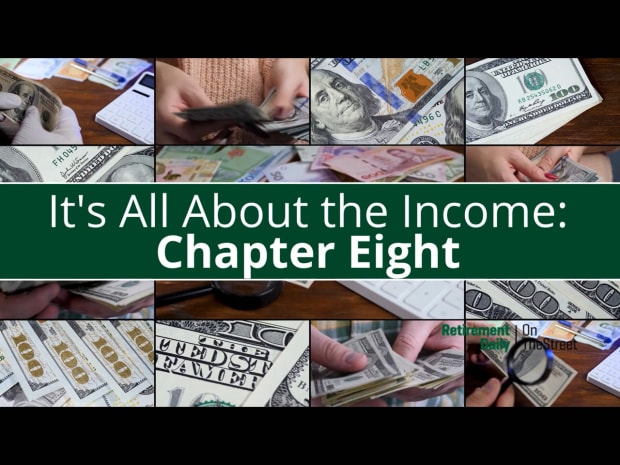
It's All About the Income, Chapter 8: Assess Your Needs and Fix Your Target

Medicare Part D Prescription Drug Cost Analysis: Shocked and Disillusioned (Part 3)

A Next-Gen Investor’s Journey to Opening a Roth IRA
By Marcia Mantell
As families and friends gather around the table for Thanksgiving, conversations can get quite lively. There are football rivalries, family stories, and fashion trends to discuss. And look out for anyone getting close to age 65 or already on Medicare. They may bring up the scintillating topic of Medicare plans.

Much like the long-standing debate of whether pumpkin pie or sweet potato pie is THE pie for dessert, the battle rages on whether you should have a Medigap plan with your Medicare Parts A and B. Or if you should tack on a Medicare Advantage plan once you are enrolled in Parts A and B as a packaged option.
Where do you stand on these two very different options? And, how do you know you are right? Let’s first dive into the differences between these two hotly advertised products. Then, take a look at a list of 10 questions to help narrow down your decision.
Medigap and Medicare Advantage Plans are sold by insurance companies
You recognize the insurance companies from their ads: Blue Cross, Humana, Aetna, United Healthcare, and so on. These big players in the health insurance market offer products you need once you’re in Medicare. Medicare is not free, and it won’t cover all the costs of your healthcare.
After you enroll in Medicare Parts A and B—most enroll online at SSA.gov—the next decision is downright daunting.
“It can be incredibly complicated for people who have never dealt with health insurance to decide Medigap or Medicare Advantage,” David Dupuy of Senior Health Insurance Advisors in Middleboro, Massachusetts states. “It can be overwhelming, extremely time consuming, and then you can end up with a plan that costs too much or doesn’t work the way you thought it would.”
That’s because while both Medigap and Medicare Advantage (MA) plans pair with Medicare, they operate very differently, have completely different cost structures, and require distinct levels of involvement.
Structural differences and budget implications
At the most basic level, Medigap plans sit under Medicare Parts A and B to pick up the crumbs. These plans pay your share of Medicare-eligible costs. Without a gap or supplemental plan, you will be responsible to pay (in 2023):
- $1,600 when you land in the hospital,
- $200 per day in skilled nursing rehab if you stay more than 20 days, and
- 20% of your doctor bills, outpatient services, and chemo treatments.
- And more…
Buy a comprehensive Medigap plan and you only pay a set monthly premium. And, importantly, all doctors, clinics, specialists, hospital systems, etc. across the country automatically accept your supplemental insurance if they otherwise take Medicare. These plans offer as much flexibility as you can get in the land of health insurance.
With Medicare Advantage plans, you aren’t buying secondary insurance. Rather you are buying into a network healthcare system. You agree to use doctors, specialists, and hospitals in your local area network. In return, your monthly premiums are low or zero. You will, however, pay nickel and dime copays every time you use any part of the network. You’ll pay your share of costs up to an out-of-pocket maximum of $8,300 for in-network care in 2023.
“If all their doctors and specialists are in the same HMO network already, a Medicare Advantage plan can be considered,” Dupuy shares how he helps his clients assess their options. “But if several key doctors are out-of-network, even a PPO or HMO-POS is going to cost more than a Medigap. And that’s a budget-buster for many people.”
Follow us on Instagram and Twitter!
HMO, PPO, HMO-POS – so many acronyms
In the last dozen years, the MA options have become more complicated. There are several “flavors” of these plans each person can consider:
HMO—Health Maintenance Organizations are the most restrictive MA plans. Monthly premiums are $0 or low-cost but you must use network doctors and facilities. One doctor oversees all parts of your health care, and you must get referrals and pre-authorizations for specialists, surgeries, hospitalizations, and treatment options for chronic conditions.
PPO – Preferred Provider Organizations offer a wider range of flexibility with fewer restrictions. You can use in-network or out-of-network providers without referrals. However, you pay significantly more when using out-of-network providers. It’s common to see maximum out-of-pocket costs structured along the lines of $7,550 in-network and $11,300 in and out-of-network.
HMO-POS – Health Maintenance Organization with a Point-of-Service option. This hybrid product has the restrictions of the HMO network and generally requires referrals for additional care. But referrals can go to out-of-network providers. However, you’ll pay a higher cost.
There are a few other options with MA plans, but most people choose between the HMO and PPO.
Notable differences between dental and drug coverage
In the original Medicare Act of 1965, prescription drug coverage and dental plans were specifically and intentionally left out of the law. When MA plans first started, they included coverage for both drugs and dental (and several other benefits) as an “advantage.” Today, coverage for dental and drugs is readily available regardless of the plan you choose.
Dupuy mentioned that dental coverage benefits are often a big piece of the decision-making for his clients. “Even if they will only get $1,000 toward dental procedures, which is typical, that can be a big help for many seniors.”
In MA plans, dental and drug coverage are rolled into the packaged products.
- Most plans offering a dental benefit pay a set amount for major dental work such as a root canal or bridge (around $1,000). And you won’t have a copay for cleanings and basic x-rays if you stay in-network.
- MA plans that include prescription drug coverage are MAPDs. If you choose a MA without drug coverage, you generally cannot buy a stand-alone Part D plan.
If you go the Medigap route, you can also get dental and drug coverage.
- For about $35 or $50 per month, you can add on dental coverage. Just do the math first. Will you spend $600 most years on your dental care? You will pay that in premiums. Check with your dentist to see if they have a different pricing option once you’re on Medicare.
- Shop for stand-alone Part D drug plans that cover your prescriptions. You’ll pay a monthly premium to use that plan. And drugs will be priced in tiers and based on the pharmacy you choose.
Talkin’ turkey at your Thanksgiving table
Now that you are armed with the basics between Medigap and MA, which plan is going to work for you? Each person will make their individual choice.
To encourage a healthy discussion about the merits and downfalls of both options, start with these 10 questions. Hear from others’ experiences and consider both options before making your final decision.
- Are you willing to give up your doctor and be assigned a new one who is a gatekeeper in a MA HMO network?
- Is it critical to stick with your specialists and hospitals for your ongoing care?
- Do you spend weeks at a time out-of-state—perhaps grandkids live in another state, or you have a second home?
- Do you have cancer or an auto-immune disease that requires outpatient treatments?
- Is your budget flexible enough to handle inconsistent, but potentially high, out-of-pocket costs some years during retirement?
- How much do you have socked away in a Health Savings Account (HSA) or other “bucket” to cover an OOP of $8,300 or higher if you have a significant health event during the year?
- Are you willing to be highly involved in your plan’s rules and advocate for yourself if you do not get a referral or specialist you want?
- Is your spouse or your health care proxy equipped to fight with your insurer for care you need?
- Will a $1,000 dental benefit be enough to influence your decision?
- Can you patiently navigate the appeals process when you disagree with a claim or payment?
Last note
Medicare’s Open Enrollment Period (OEP) is going on right now. Each fall between October 15 and December 7, you take a fresh look at your plans to see if any changes are needed. It’s especially important to look at your prescription coverage. You can change your Part D plan or MAPD during this period. Otherwise, you’re generally stuck with the plan you have after December 7th.
Have a wonderful Thanksgiving, and enjoy the conversation as you pass the dressing. Or is it stuffing?
About the author: Marcia Mantell
Marcia Mantell, RMA®, NSSA®, is the founder and president of Mantell Retirement Consulting, Inc., a retirement business development, marketing & communications, and education company supporting the financial services industry, advisors, and their clients. She is author of “What’s the Deal with Retirement Planning for Women,” “What’s the Deal with Social Security for Women” and blogs at BoomerRetirementBriefs.com.
You May Also Like...
Other relevant articles from Retirement Daily

Ask the Hammer: Using Life Insurance as a Supplemental Employee Benefit
Jeffrey Levine uncovers how to create employee benefits using life insurance.

Fixed-Income Opportunities in a High-Interest Rate Economy
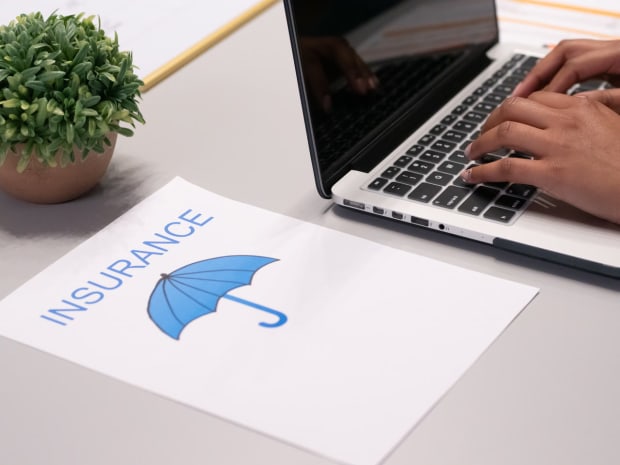
2023 Individual Insurance Open Enrollment Period Begins
In this Ask the Hammer episode, a reader asks this question:
"I have a friend who didn't properly plan for retirement and is now faced with going into a nursing home and he's considering a Medicaid-compliant annuity. Is that a good idea?"
Jeffrey “The Buckinghammer” Levine of Buckingham Wealth Partners, met with Robert Powell, editor of Retirement Daily, to answer this question.
Jeffrey and Bob talk about what Medicaid annuities are and why they matter, the differing rules for married couples versus single people, and the ethics behind using them.
Watch the full episode to find out the answer to this reader’s question.
Got questions?
Email [email protected]
More Ask the Hammer:
]]>By Michelle Muhammed, CFP
Amid surging inflation, rising interest rates, and the sharp declines in both stock and bonds, many clients are asking, “Can I still afford to retire now?”
The most accurate answer is: It depends. It depends on whether you’ve established a clear set of goals and on whether you and your financial planner have developed a sound financial plan and strategy to reach them. Most importantly in today’s climate, it depends on whether you’ve been following that strategy, adapting, and updating it as needed.

Having a broader financial plan is table stakes for understanding when you’re able to successfully retire, and it’s much more than selecting the right investments in your portfolio or building a big enough nest egg. In fact, a holistic financial plan incorporates the many moments and decisions in life that intersect with your money. It’s both the vehicle and the road map that gets you from where you are today, to where you want to be tomorrow.
At a tactical level, a sound plan summarizes your current and future income, expenses (with inflation factored in), time frame, life expectancy, assets, investment allocation, liabilities, expected medical costs, and taxes. It accounts for how you want to live out your retirement years, along with other potential financial goals, like turning a hobby into a business or leaving a legacy to your family members. Regular reviews of your financial plan also reveal when adjustments need to be made – such as whether you need to save more, work longer, or change your spending habits.
Let’s take a deeper look into four key components of a financial plan – and the questions you should ask – as we explore what impacts your ability to retire now versus in the future.
First: What is the time frame for the plan? The most common misconception people have is that their time frame is from now until retirement. Retiring from work is not the destination, it’s a stop on the journey. Having enough income to live comfortably until the end of your and your spouse’s lives is the goal. For some people, they want to live well and leave behind money for the next generation. Therefore, your time frame can extend well beyond your own retirement. If you want to leave money to the next generation, you need to evaluate your time frame and plan accordingly.
Thinking long-term is one of the best ways to survive difficult markets and thrive over a decades-long retirement. It is also an effective hedge against inflation. Throughout modern history, this country has faced multiple inflationary periods. Since World War II, there have been seven periods in which inflation was 5% or higher – 1946-48, 1950-51, 1969-1971, 1973-82, 1989-1991, 2008, and 2021-2022. And with the average life expectancy much higher today than in previous generations, you will likely have a longer retirement than your grandparents. With a shorter expected retirement, they could afford to invest more conservatively from day one. For you, it may be appropriate to stay invested in your current allocation well into your retirement since you could have more time ahead of you and may navigate through multiple inflationary periods.
Second: Are you putting your income to work? If you are still employed or have excess income, this may be an opportunity to beef up your retirement by investing more. Would you rather buy something at full price or on sale? Most people would opt for the bargain price. Although investing when the markets are down seems counterintuitive, continuing to contribute to your workplace retirement plan, e.g., 401(k), 403(b), or SEP IRA, and investing your excess cash elsewhere can help you take advantage of dollar-cost averaging and buying assets at a discount, before they bounce back in value.
Follow us on Instagram and Twitter!
Third: Do you have cash reserves? If the answer is yes, then the next question is how much cash reserves do you need? It depends on multiple factors including how much guaranteed income, e.g., pensions, Social Security, etc., you have and whether those streams of income have cost of living adjustment(s). Other things to consider include expected big one-time expenses for things like trips and/or home renovations.
Plan on spending cash first in retirement to give your portfolio some time to recover in this environment. Because you may need to rely on your cash reserves, many may need more cash reserves at the beginning of retirement than they originally thought. This approach enables you to tap your cash reserves, which is not earning enough to keep up with inflation. If you don’t have cash reserves, or not enough, then you might want to consider working a little longer to build your savings; or you may plan to work part-time in retirement. Consulting, reducing the hours in your current role, or working in a lower-paying but more fulfilling job, are all options to help you build up cash reserves.
Fourth: Do you have a unique situation? Suppose you’re a bit short of your retirement savings goal, but you need to retire for health reasons or to care for a loved one. You may find that reducing your spending is more manageable than you thought. It’s also possible that you may be able to do some remote work a few hours a week to fill the gap. By having these conversations with a trusted planner, he or she will help you explore the options that make sense for your situation.
With those initial areas addressed, what should your next steps be? To help you plan for this next state of life, the following steps will help you get to retirement and stay there comfortably:
- Speak with a financial planner to see where you stand.
- Review your essential and discretionary expenses.
- Assess your cash reserves.
- Determine your guaranteed income sources and whether they have cost of living adjustments (COLA).
- If you have a traditional pension, talk to your planner ASAP about whether you should do a lump sum or lifetime pension.
- Evaluate your long-term care protection. Many retirement plans will be undermined by long-term care costs.
- Do you have any big upcoming health procedures? It may be wise to have them done while still employed and/or while you have sick leave.
- Evaluate your housing. If you know that you want to relocate, sometimes buying a new property while employed will be easier. Consider the pros and cons of buying versus renting.
- Ask yourself what you are going to do with your free time. If you don’t know you may want to hit pause and develop a plan for how you will stay or get active and be fulfilled.
- Meet with an estate planning attorney to develop a plan for incapacitation and/or death.
While today’s times are challenging, having a conversation with your financial planner can help you weather these storms by building a comprehensive plan that accounts for potential rough patches along the way. Pivoting and adapting your plan might be part of the process, but many may realize they can still retire in this environment and start enjoying their golden years ahead of them.
About the author: Michelle Muhammed
Michelle Muhammed, CFP®, is a wealth planner, Director, Financial Planning at Edelman Financial Engines. Michelle’s specialties include developing comprehensive financial planning and retirement strategies that can help clients build, grow, protect and preserve their wealth. With over 20 years of industry experience, Michelle has had the privilege of helping her clients and their families achieve their financial, retirement, and investing goals. Outside of work, Michelle gives back by helping women and underrepresented groups find their paths in the financial services industry.
Neither Financial Engines Advisors L.L.C. nor its affiliates offer tax or legal advice. Interested parties are strongly encouraged to seek advice from qualified tax and/or legal experts regarding the best options for your particular circumstances.
All advisory services provided by Financial Engines Advisors L.L.C., a federally registered investment advisor. Results are not guaranteed.
You May Also Like...
Other relevant articles from Retirement Daily

A Next-Gen Investor’s Journey to Opening a Roth IRA

How Your Adult Children Can Stop Relying on You Financially
Read below to discover the balance of supporting your children and your bank account.

Retirees Going Back to Work: Starting a Business
Are you retired? Do you want to start a business? Here are some things to consider!
The Open Enrollment Period (OEP) for individual insurance in 2023 began November 1, 2022, and ends January 15, 2023. According to eHealth, during OEP people can “enroll in various major medical health insurance plans or ACA-compliant health insurance plans,” and also make adjustments to or cancel any current plans. People can go to healthcare.gov to look at plans and lower premiums and extra benefits from Advanced Premium Tax Credit (APTC).
Jae Oh, author of Maximize Your Medicare, highlights a large number of subtle changes that will affect coverages, networks, and premiums. “First of all, we're going to see more carriers per location, and I would simply describe it as the sellers, the carriers, the insurance companies becoming more used to the usage and the statistics necessary in order to be competitive,” he said. “We're [also] seeing statistics about 10% higher for healthcare costs [as well as] higher health insurance premiums.”
Follow us on Instagram and Twitter!
For people in the insurance market for the first time, Oh encourages them to take a look at APTC out of all financial topics to consider and to understand how it works. The APTC amount could be large, reaching the thousands for many people. This money could be converted into savings and become very valuable later on.
Oh also suggests having help to navigate the different plans and APTC. “The fact of the matter is, crossing the finish line is very different, in practical terms, than just simply having the ballpark,” Oh said. “I have an idea of how much a car costs, but actually selecting the car and the trim and the details, it’s probably a good idea to have some guidance there.” There is also a free quoting tool here that he recommends that people use.
You May Also Like...
Other relevant articles from Retirement Daily

Can I Switch from Medicare Advantage to a Medigap Plan?
Yes, you can make the switch, but there are some things to consider before you do.

APTC Expanded in the Inflation Reduction Act
Hear from our expert about the Advanced Premium Tax Credit's three-year extension.

The 2023 Medicare Annual Election Period
By Dan Trumbower, CFP
After rallying for four decades straight, bond markets are experiencing their worst year in history. That's thanks to interest rates, which have also reversed a long-term trend and have risen sharply. The inverse relationship between bond prices and interest rates has come to the forefront for investors looking for fixed-income solutions.

Lower bond prices have also confounded stock investors who, historically, have included bonds in their investment portfolio to provide a ballast against falling stock prices. Typically, bonds have had a negative correlation to stocks, performing well when stock prices decline and vice versa. For the first time in decades, stock and bond prices are falling in sync, compounding the stock market's poor performance. Though a positive correlation between stocks and bonds is not expected to last, it is currently wreaking havoc on investment returns.
If that were not enough to increase despair among investors, the yield curve, which charts the relationship between yields on long-term government bonds with short-term government bonds, has been flattening all year and recently inverted. That means long-term bonds are yielding less than shorter-term bonds, a strong indication of a slowing economy and possible recession.
Not All is Lost for Fixed Income Investors
Unquestionably, the current market environment has been extremely sour for fixed-income investors and equity investors looking for bonds to counterbalance declining stock prices. While a bond market environment like the current one presents unique challenges, investors can still reap the benefits of a bond market in transition. It just takes careful planning and an understanding of the options available.
Here are a few ways investors can still benefit from rising interest rates:
Higher Long-Term Bond Yields
The spike in interest rates has lifted the yield on the 10-year U.S. Treasury Note to its highest level since 2008. As of October 2022, the 10-year yield topped 4%, nearly double from just a year ago. While yields are expected to increase further due to additional and telegraphed Fed rate hikes, even at current levels, bond investments are producing much stronger income levels than we have seen in many years.
The more attractive opportunity may be with corporate bonds, which have been beaten down this year. In other words, they are deeply discounted. The Bloomberg Aggregate Bond Index is down more than 16% YTD, with the average yield on the lowest tier of investment-grade bonds hitting 5.75% in September.
With corporate bonds, quality and duration matter. Companies with investment-grade ratings of "A" to "AAA" are considered low credit risks. They also tend to perform better in volatile markets. If you structure your bond portfolio to coordinate with your investment time horizon and liquidity needs, you don’t need to be concerned so much with short-term price movements which are related to prevailing interest rate changes. You could even consider locking in short-term individual bonds (not necessarily corporates but perhaps a municipal bond, depending on your tax bracket) for a specific upcoming liquidity need – such as a tax payment this coming April, if the rates are attractive enough.
Follow us on Instagram and Twitter!
Tax-Loss Opportunities
After sharp market moves as we have experienced, it is even more important than ever for investors to look for opportunities to rebalance their portfolios. Some of the best opportunities for long-term success can be uncovered during down market cycles. During the rebalancing process, one additional strategy to consider involves tax loss optimization (or “harvesting”) – banking paper losses to reduce your future tax burden. In doing so, you can position your portfolio for higher returns and maximum tax efficiency. Long gone are the days of “buy and hold” – even in the bond space. If you want to keep more tax dollars in your pocket, there is no reason for you or your adviser not to be taking advantage of this.
The key to achieving optimal portfolio allocations through rebalancing and tax-loss harvesting is thoughtful asset allocation and security selection. It's highly advisable to seek the expert guidance of your investment adviser.
Navigating the Inverted Yield Curve
Generally, an inverted yield curve is not good news for the economy. But that doesn't mean yield-seeking investors need to cut and run. During a rising rate environment like we have seen this year, flexibility is more important than ever. Taking advantage of nimble bond fund managers who can reshuffle their underlying holdings to “float” higher along with general market rates, is absolutely critical.
Along with duration positioning, one final aspect of your bond portfolio to consider is the underlying credit quality and the amount of credit risk you are willing to take on. When rates are rising, it can cause a slowdown in the economy, which makes it harder for companies to service their debt. Chasing the highest-yielding bonds, without consideration of the underlying credit quality of the issuer, exposes you to levels of credit risk and potential defaults that should be avoided, or at the very least severely limited.
In this volatile and uncertain market environment, the one thing investors shouldn't do is panic. Markets always move in cycles, and this one shall also pass. In the meantime, with some thoughtful planning and strategic adjustments such as those described above, there are still some fixed-income opportunities to be had.
About the author: Dan Trumbower
Dan Trumbower, CFP®, is a senior wealth advisor at Halpern Financial, a fee-only, independent, fiduciary wealth management firm in Rockville, MD, and Ashburn, VA. Dan received a BSBA in Finance from Coastal Carolina University, and is a CFP® professional and has special expertise in financial issues affecting key executives of large corporations (such as restricted stock awards, incentive and NQ stock options along with NUA distributions from employer savings plans).
You May Also Like...
Other relevant articles from Retirement Daily

Medicare Part B Premiums for 2023
Here's all you need to know about the recently released Medicare Part B premiums.

Consumer Prices Rose 7.7% in October from Year Earlier

How You Can Financially Prepare for a Natural Disaster
TheStreet
In Case You Missed It
Should Rising Rates Lead to Declining Expectations?
Eighty years of perspective on the classic 60/40 portfolio.
New World Order or Continued Global Economy?
What will the economy look like in the future? Read our expert's analysis of opposing predictions from the Odd Lots podcast.
How Can Small Businesses Set Up The Best Retirement Plan?
Our expert shares two key factors to consider when crafting the retirement plan for your small business.
Women, Divorce and Retirement: I’m in Control of My Life and Financial Health
Do You Need a Financial Planner? Four Questions to Ask
A glimpse into what a financial planner can (and should) do for you and what questions to ask if you are looking for a planner.
How Much Is Enough? Four Keys to Success in Retirement
Determining when you can retire and how you can stay comfortably retired is crucial to financial success. Here are four tips from our expert to make that a reality.
Common Retirement Questions: What Are My Sources of Income and Financial Assets?
A common retirement question is "What are my sources of income and what financial assets should I draw on first during retirement?" Read below for our expert's answer.
Don’t Outlive Your Retirement Savings
With inflation on the rise, it's time to re-examine your budget and financial plan. Here's a guide on how from our expert.
It's All About the Income, Chapter 9: The System is the Solution
In this chapter, author Michael Lynch addresses the keys to developing the correct financial plan for yourself and maintaining financial independence.
Ask the Hammer
Email your questions to [email protected].
Understanding the Exceptions to the Exceptions for IRAs
]]>In this Ask the Hammer episode, a reader asks this question:
"I'm a small business owner looking to add some benefits for myself and my key employees. Would an executive bonus plan funded with life insurance make sense?"
Jeffrey “The Buckinghammer” Levine of Buckingham Wealth Partners, met with Robert Powell, editor of Retirement Daily, to answer this question.
Jeffrey and Bob talk about the advantages and disadvantages of using life insurance as a supplemental employee benefit and the factors that play a role in making that decision.
Watch the full episode here to find out the answer to this reader’s question.
Got questions?
Email [email protected]
More Ask the Hammer:
]]>By Michael Lynch, CFP
9: THE SYSTEM IS THE SOLUTION
Maria’s is a simple case to solve. She required roughly $3,000 a month of pretax income. Of this, $2,000 would arrive from Social Security. She needed only $1,000, or 2.4 percent, from her assets.
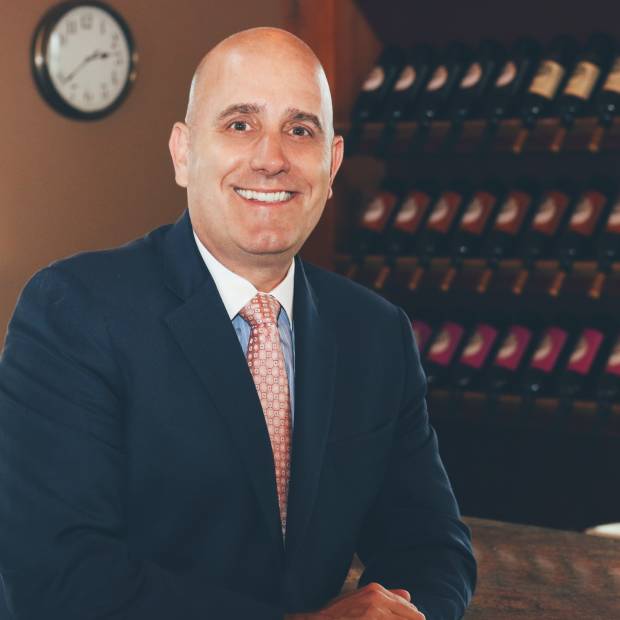
Stop and apply this point to your finances. One of the largest misconceptions I hear regarding financial independence derives from a failure to separate income needed from assets and total income. The result is a belief that retirement isn’t possible or that it will come with a reduced standard of living.
It’s easy to see why. Applying a 4 percent withdrawal rate, Maria would need $900,000 to support her lifestyle of $3,000 a month. The number would drop to $300,000 if she appropriately restricted her need to equal income generated from assets.
GO YOUR OWN WAY
Don’t be held hostage to someone else’s income and asset needs. I hear it all the time: “So-and-so at work said I need $1 million to retire.” The person is usually short of this, approaching retirement, and a bit despondent. I run their numbers, and often I am a bearer of good news: they are already financially independent or rapidly approaching such bliss. A leading cause of delayed retirement is the ill-informed workplace know-it-all at the watercooler, who may want coworkers to stay around and share the misery. Discuss sports or music but neither money nor politics while hydrating.
With her $500,000, Maria was financially independent, provided she implemented a prudent asset management and income generation plan.
Given that Maria had more than half of her income coming from the “reliable income” bucket, she had the luxury of focusing on the “safety of principal” bucket—her favorite and the source of her economic misery—and the “growth of asset and income” bucket.
Her annual income need was roughly $12,000 from assets. She should leave $100,000 in “safety of principal” assets and invest $400,000 in a diversified portfolio of equity-based and fixed-income assets. Since she was very conservative, a moderate portfolio of 60 percent equity and 40 percent bonds would likely be appropriate. However, I’d try to move her up to 70 percent equity because I feel that’s better balanced considering her overall allocation.
SAFE ENOUGH
Here’s why. One in five of her dollars—or 20 percent—were already in the stable value assets. If we add that to the 30 percent in bond or fixed-income assets, only one in two dollars would be exposed to stock market risk. Over the long run, this has been only the “risk” of increasing both asset value and income generated at a rate greater than inflation. You saw this in Chapter Two. But in the short term, financial markets can collapse suddenly without warning, and you must plan for this.
If you step back further, you will see that although half of Maria’s assets would be subject to stock market risk, less than 33 percent of her income would be subject to this risk. More than half of her income was guaranteed and provided by the US government. I know it’s not perfect, but at present, there is no better guarantor in the world. Focus narrowly, and she seems to be accepting risk. Pull back on your aperture, and her system’s prudence and conservatism come into focus.
Counting Maria’s income dollars, you’ll see how this system works. She had $400,000 of investments generating $12,000 a year, allowing a roughly 3 percent withdrawal rate. Historically, she’d beat this with performance three out of four years (according to the Vanguard balanced index). She’d have more at the end of the year, after taking income, than she started with. In the one in four years of substantial portfolio declines, she could stop withdrawals on the portfolio and start drawing down her reservoir or safe account.

AN EVEN MORE CONSERVATIVE SOLUTION
Maria may balk at this solution. It’s a large move from all cash to a preponderance of money that will fluctuate by the minute, day, week, month, and year without any predictable guarantees.
This is where annuities fit into a plan.
These are tools that provide both certainty in the present and guarantees for the future, subject to the claims-paying ability of the insurance company providing them.
We all have different tolerances for investment fluctuation and desires for portions of our income that we want guaranteed. During our entire lives, we accept risk with very few guarantees of our incomes, except the 1.5 percent of American workers who draw their checks from Uncle Sam. I’m appalled at the notion that new retirees suddenly need to be ensconced in some low-return, low-volatility plan for generating retirement income. It’s as if we revert to toddlers who must be kept away from the world’s many harms as well as its charms.
A BRIDGE TOO FAR
That said, Maria balked at my solution for a reason, and likely the $400,000 was a bridge too far for her to cross. In these cases, the insurance industry is more than happy to step in with many customizable solutions. In Maria’s case, I’ll examine just one.
Watching the pain on her face at the prospect of putting $400,000 of her hard-earned money directly into financial markets, I suggested she set aside $200,000 in a deferred variable annuity with an income rider. The deferred nature would allow her to retain control of the funds. This would provide some comfort. The income rider would allow her to withdraw a guaranteed percentage of these funds each year regardless of market performance. If the invested assets ever dropped to zero, the insurance company would provide monthly income for the rest of her life. This all came with restrictions and fees. Maria would need to understand it was a contract between her and a large insurance company. She would want to understand the nuances, definitions, and restrictions. She would need to read the prospectus. These tools are complex and not for everyone, but so are bulldozers, airplanes, and electric cars. Life in the modern world is often enhanced with the aid of complex tools.
In this case, she selected a contract that provided a 6 percent income stream while the money lasted and a guarantee of 4 percent thereafter if the funds ran out. This $200,000 now generated the $1,000 Maria needed each month. It increased her initial guaranteed income to 100 percent. It was not free, however, and the price Maria paid was not only the annuity fees but also the increased risk that inflation would erode the value of her income stream.
She now had $300,000 in complete reserve. In this system, she could keep $50,000 liquid for unexpected large expenses and invest $250,000 into at least a 70/30 mix of equity to fixed income. This would need to grow over time because it would be responsible for offsetting the effects of inflation on her annuity income. This plan secured all of Maria’s initial income with guarantees.

The future will always remain uncertain. No objective way exists to predict which of the multiple plans available to Maria would prove to be her best. There are scenarios in which her all-cash status quo would win—for instance, if interest rates spiked, inflation stayed low, and financial markets collapsed and this unlikely cocktail of misery persisted for many years. If financial markets perform as they historically have and Maria enjoys a long life, then the investment-heavy approach is optimal. Many scenarios exist in which the annuity approach wins as well.
There is no such thing as a perfect plan. However, there is the right plan for you and your family.
The above article originally appeared as a chapter in It's All About The Income and is reprinted with permission from the author Michael Lynch. No parts of this article may be reproduced without correct attribution to the author of this book.
Read more of It's All About the Income
Chapter 1: The Paradox of Retirement Income Planning
Chapter 4: Two Out of Three Ain't Bad
Chapter 6: How Long for the Rebound?
]]>By Faron Daugs, CFP
The pinch of inflation has hit household budgets profoundly. With inflation spiking to decades-high rates, the rising costs of putting food on the table – our most fundamental need has become one of the most visible pain points in this era of surging prices. These short-term financial shocks can challenge our assumptions about how much we need to save for a comfortable retirement, leaving many people considering what adjustments to make to their spending and savings habits to ensure they are still on track.
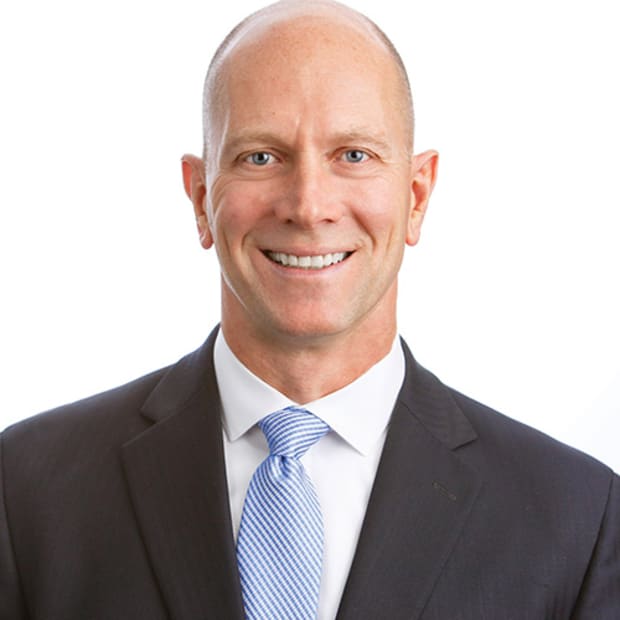
These are big questions with broad significance. People in retirement are now trying to make a fixed income stretch further. Those nearing retirement may be considering adjusting their plans or even delaying retirement. And those who still have time to save may be struggling to balance the higher costs of living and longer-term savings objectives.
Whether you’re still accumulating retirement savings or you’re in retirement trying to make your nest egg last, now is a good time to re-examine your budget and financial plans in light of the recent rise in costs.
Planning for the costs of retirement
To ensure that you do not outlive your retirement savings, you will need to estimate your future cost of living, then put a plan in action that gives you the best chance to reach your savings goal. Unfortunately, there is no one-size-fits-all answer to the question of how much you should save for retirement. Calculating the amount needed for retirement requires a personal estimate of how much you will spend, or would like to spend, on a monthly or annual basis when you retire.
To create an estimate of your retirement needs, you can start by centering your projections around the costs of your current lifestyle, with adjustments made based on how that lifestyle may change. For instance, a young professional who has not reached the peak of their earnings potential may want to create a plan with the assumption of a more comfortable lifestyle in the future than what they can currently afford. Conversely, a couple supporting three children, saving for college, and paying down a mortgage may need less in their monthly budget once they retire.
You may want to separate costs into fixed expenses, such as utilities, property taxes, and groceries, and variable expenses, like vacations, hobbies, car purchases, and health care costs. Keep in mind how your health care costs may change as you age, and without the benefit of employer-sponsored health care.
Begin calculating these expenses in “today’s dollars.” Then, once you have an estimate, you will need to factor in the impact of inflation on those expenses. While current events demonstrate that inflation can ramp up quickly, a longer-term view puts inflation at an average rate of about 4% per year. When calculating how much you’ll need to save to cover your monthly expenses, you will want to assume a conservative return on your investments in retirement. Additionally, be aware that inflation doesn’t end when you begin retirement withdrawals. You will need to account for inflation during your retirement years to avoid losing your purchasing power.
Accumulating retirement savings
Once you have a savings goal, you can turn your attention to the more important task of maximizing your potential to reach your goal. An accurate retirement estimate means very little with poor execution in accumulating the savings. Give yourself the best possibility of achieving your retirement on schedule with prudent personal finance steps, such as:
- Begin a savings plans early – Starting to save for retirement as soon as feasible, even if the contributions are small, serves two important purposes – you will benefit from the power of compounding and build the habit of savings.
- Invest in tax-deferred accounts – Both Roth and traditional IRAs allow your investments to grow with tax advantages, increasing the effect of compounding on your balances. Additionally, traditional IRAs and 401(k)s allow for tax-deductible contributions, though withdrawals will be taxed. For Roth 401IRAs and Roth 401(k)s, contributions are not tax-deductible, but qualified withdrawals are tax-free. If unsure which may be most beneficial, consider splitting your contributions between traditional and Roth accounts.
- Maximize employer benefits that help you save – Taking advantage of employer-matched contributions to your 401(k) or similar retirement account can accelerate your retirement account growth.
- Understand the impact of inflation on your goal – While the current surge in inflation will end at some point, even a normalized rate of about 4% will have a meaningful impact on your future cost of living.
- Review your financial plan regularly – Review and adjust your retirement plan at least every two years, and more frequently as that goal becomes closer.
- Connect with an adviser – A financial adviser can walk you through the planning process, monitor your progress regularly, and help keep your plan on track as you face significant life events.
Follow us on Instagram and Twitter!
Choosing the right investments
Ideally, we all would prefer to select investments with the highest rate of return. However, asset classes with higher return potential also bring higher risks and volatility, so it’s important to consider your time frame and risk tolerance when choosing your investment allocations. At a minimum, you’ll want to select investments that will grow faster than the rate of inflation to ensure the value of your savings does not erode over time. Achieving a solid return is usually possible with a well-balanced portfolio of investments diversified across multiple asset classes, a strategy that reduces risk and helps even out volatility.
- Mutual funds and ETFs – Choosing a mix of low-cost index funds that invest in stocks and bonds will provide diversification without high costs eating into your return. For an all-in-one solution, a target date fund/ETF can simplify this choice and offer asset allocation that may be best for your investment horizon.
- Annuities – If you are nearing or in retirement, the single premium immediate annuity (SPIA) is a good potential source for immediate fixed cash flow. In an SPIA, you pay a lump sum up front and receive a guaranteed amount of income over a selected timeframe, or for life. Because of low interest rates in recent years, SPIAs – which rely on underlying investments in U.S. Treasuries and low-risk bonds – have not offered compelling rates of return. However, with interest rates on the rise, SPIAs are worth considering for people who want a steady income at a low cost. The purchase of an SPIA can be made by converting a retirement account, while people who own a deferred annuity can create guaranteed income upon annuitization of their contract.
If you are still accumulating retirement savings, variable annuities with living-benefit features can play a role in generating returns and providing retirement income. Living-benefit features can guarantee a minimum income or return but come at additional costs. When evaluating variable annuities, it is important to consider the fees, which can be high, as well as any guaranteed return, which may not outpace inflation; however, absorbing the costs for a guarantee may be worth the peace of mind for some. - Stocks and bonds – Buying a basket of stocks in high-quality, dividend-paying companies that may provide greater potential upside. Individual bonds may also be appropriate for certain investors. Investors who can build a “bond ladder,” or a series of bonds that mature at different times, can benefit from the stable income that a bond ladder provides. Investors unfamiliar with trading stocks and bonds can work with a financial advisor to ensure suitable investments.
Making retirement savings stretch
Ultimately, whatever you can accumulate before retirement must last. The good news is that most people have modifiable lifestyle factors that can influence their rate of spending. Simple lifestyle changes can have a large impact. Forgoing that next-generation phone upgrade, luxury items, canceling subscription services, revisiting travel plans to stay close to home, and taking advantage of local entertainment are all good options to save in retirement. During this latest spike in grocery costs, many grocers have emphasized their offerings for price-sensitive shoppers through coupons and loyalty programs, so take advantage of your store’s programs and local ads. It can also be helpful to maintain some flexibility in your food choices.
The recent rotation to remote work and the gig economy has created more opportunities for retirees to re-enter the workforce on a part-time basis when belt-tightening falls short. Working in some capacity can also help maintain a sense of social connection and well-being. If you are taking social security benefits before full retirement age, just be aware of how any earned income impacts your social security payments (earned income below $19,560 per year has no effect).
Maintain a long-term view
Short-term volatility can often lead to panic and poor decision-making. Revisiting and revising plans is advisable in a market like we are seeing now – but knee-jerk reactions, like trying to time the market to preserve balances or squeeze out a higher return, usually don’t pan out. Remember that markets historically eventually shift and return to growth cycles. Seek out the help of a professional if you need additional resources for planning out and succeeding in your retirement.
About the author: Faron Daugs
Faron Daugs, CFP®, wealth advisor, founder & CEO at Harrison Wallace Financial Group, serves as a go-to source and trusted advisor for his clients for over 30 years. To learn more visit https://www.harrisonwallace.com/ or follow Faron on LinkedIn.
You May Also Like...
Other relevant articles from Retirement Daily

Four Annuity Enhancements That Can Boost Income or Savings
These add-ons are well worth considering but look carefully at costs and benefits.
TheStreet

Planning for Your Health Care Expenses in Retirement

Common Retirement Questions: How Much Can I Spend Each Month Once Retired?
Retirement Daily’s Robert Powell sits down with Dana Anspach from Sensible Money to tackle the 10 most common questions in retirement.
In today’s episode, Anspach discusses the common retirement question: What are my sources of income and what financial assets should I draw on first during retirement?
Anspach says that starting with a timeline is usually best. This timeline lays out the sources of income that come from non-financial assets. Things like Social Security, pensions, annuities, and deferred compensation plans are always factored in.
After everything is laid out, Anspach says that it’s time to solve for what needs to come from the other financial asset. “When we think of those, we group things according to tax treatment,” she says. “There's your non-retirement account. There's your tax-free sources of cash flow such as Roth IRAs or health savings accounts. Then there's your traditional assets: 403(b) plans, 401(k)s, and IRAs. Every dollar that comes out of those is going to be taxable.”
Anspach also mentions that not everyone needs to leave their traditional assets alone until age 72 as it depends on what would be more tax efficient. With that, she also expresses how she isn’t a fan of “rules of thumbs,” especially one that determines the order of accounts from which to draw money. “[The] rule of thumb comes from this traditional thought process that you should let your tax deferred assets grow within that tax deferred wrapper as long as possible,” Anspach says. “But when you actually chart it out in a spreadsheet that accounts for taxes, it is not always the right answer.”
Follow us on Instagram and Twitter!
People that have a large source of taxable income from pensions or deferred compensation plans might wait until age 72 to begin their RMDs. However, people who don’t have that are encouraged to take money out earlier because it can often lower their RMDs. IRMAA - the income related monthly adjustment amount for Medicare premiums - also affects when people should take out money, according to Anspach. “The higher your modified adjusted gross income, the more you may pay in IRMAA premiums,” she says. “So it seems backwards, but sometimes taking money out of your retirement accounts early in retirement can actually reduce the overall tax impact that you're gonna experience later in retirement once you are age 70 and older.”
Another thing to keep in mind is the idea of doing what’s tax efficient in the current year, but also what creates tax equilibrium for the rest of your life. Anspach says that using a reasonable set of assumptions can help model out what tax rate or marginal rate someone's income is going to fall into. She reemphasizes that one size does not fit all and that determining tax efficiency is dependent on the individual’s situation.
Anspach wraps up by mentioning rental properties and the income that should also be factored in. “At some point, when those properties sell, there can be depreciation recapture, which can of course cause extra tax consequences,” Anspach says. “So just the timing of when you plan those things out can be important.”
Stay tuned for the next most common retirement question, where Anspach discusses whether someone should leave their 401(k) with their employer or roll it over into an IRA.
You May Also Like...
Other relevant articles from Retirement Daily

Four Annuity Enhancements That Can Boost Income or Savings
These add-ons are well worth considering but look carefully at costs and benefits.

Longevity Risk & Retirement Income Solutions

It's All About the Income: Introduction
By Jonathan DeYoe
Financial media is often hyper-focused on current events and developments, trying to “time” the market with investment selections or allocations. This is a narrow way of thinking. Most investors should really be emphasizing a long-term plan to achieve the goal of a comfortable retirement.

Many people don’t start thinking about retirement and the costs associated with it until their 40s or 50s. The good news is, that’s not too late to build for a successful retirement. However, the earlier you start building knowledge and saving, the easier the process will be. Fortunately, markets are historically positive in the long term, and preparing for retirement ideally involves long-term investments.
Feeling uncertain? A look at historical market performance can provide peace of mind as you consider your future.
Key Steps for Success
Determining whether you can retire comfortably — and remain comfortably retired — comes down to four key steps:
- Estimating your need. Until you do the math, it’s difficult to accurately assess how much money will be required to feel comfortable in retirement. When estimating your needs, look at potential income sources and subtract expenses from there. For instance, if you currently spend $100,000 per year and expect a $25,000 annual income stream in retirement from Social Security, then your estimated need would be $75,000/year if you want to maintain that lifestyle. However, Social Security expectations become less clear the further you are from retirement — due to uncertainty about your annual earnings and contributions to the program between now and then. That forecasted $75,000 annual need in retirement will be influenced by inflation as well, to the point that retiring in 30 years would likely make the adjusted number more like $150,000 per year.
- Capitalizing that need. After calculating the need, how can you capitalize to meet it? This entails determining how your pool of assets can generate adequate income that will also accommodate the rising cost of living over time. A couple of helpful guidelines are the 4% rule and the 25x rule. The 4% rule indicates that you can withdraw 4% of your savings each year in retirement and reasonably expect that savings to last 30 years. To find out the value of an adequate retirement nest egg that will let you withdraw 4% each year, multiply your anticipated yearly withdrawal by 25. In the example above, multiplying $75,000 by 25 equals roughly $1.88 million, so you would want at least that amount saved up by the time you retire.
- Setting your savings target. To set a savings target, look at your current assets and see where you stand relative to the capitalized need. Consider life changes that may happen before retirement such as selling a business, receiving an inheritance, or downsizing your residence. Such a significant capital change could greatly increase your balance for retirement. Conducting this evaluation will help determine whether you’re currently on target to capitalize on your need in retirement or must boost your savings.
- Creating the withdrawal plan. Unfortunately, many people don’t properly execute a retirement plan because they fail to save enough. The cost of living has been rising for decades and will likely continue to do so, making it a pivotal factor when developing your withdrawal plan. But too often, people don’t appropriately address this consideration or handle the actual withdrawals well. While the previously mentioned 4% rule is a good starting point, the amount withdrawn each year must also accommodate inflation. Creating, and following, a withdrawal plan is crucial because of the need to impose limits on how much additional income is withdrawn amid inflationary environments — and the fact that withdrawing money during down markets can make it difficult for a portfolio to recover.
Follow us on Instagram and Twitter!
Legislative and Policy Changes
As times change, so do policies and legislation surrounding financial institutions and markets. So how do investors position themselves to be successful regardless of any such changes that may arise? The short answer: If planning is done right, they shouldn’t have to worry.
Investing is most effective as a long-term strategy. If you’re investing with a short-term approach, then new policies and legislation could greatly impact your portfolio and retirement. But these changes should have minimal impact if you’re investing for the long term with a diversified portfolio that allocates assets to various sectors and companies.
The reasoning: No matter the economic situation, money is still going to flow, and consumers and businesses are still going to spend. The difference is how they spend. At the height of the pandemic, for example, many consumers spent their money on goods and services delivered to their homes rather than going out to eat, buying gym memberships, or attending concerts and sporting events.
Building Belief
The best way to set yourself up for a comfortable retirement is to begin planning early in life. By getting started in your 20s or 30s and following the four keys detailed above, you’ll likely feel much better prepared and less stressed as retirement nears.
In addition to saving when you still have decades left until retirement, I recommend checking in with your financial advisor annually to evaluate and potentially adapt your plan. As you get closer to retirement, increasing these check-ins to twice a year will help limit uncertainties and ensure you’re on the right track. A consistent review process with your advisor should contribute to building your belief over time. If you receive expert answers to questions when you’re 40, for instance, you probably won’t need to ask those same questions again at age 50 or 60.
Belief in the markets is pivotal to your peace of mind when preparing for retirement. History clearly shows two fundamental trends: 1) the goods and services we buy will get more expensive over time, which is why equity exposure is so important, and 2) the more we zoom out on market returns, the less volatile they become — underlining the importance of patience and long-term thinking.
It’s almost impossible to know which direction the S&P 500 might turn tomorrow or what impact a new government policy could have on a particular stock. It also doesn’t need to be a concern because market performance is much more predictable in the long term.
The priority is to learn the basics of markets, such as understanding why diversification is crucial and how to rebalance. From there, everything you do should help build your belief that markets actually work, because they do. Set up your long-term plan, start saving early, diversify your investments, check in regularly with your advisor, and feel confident that the market will lead you to a comfortable retirement.
About the author: Jonathan DeYoe
Jonathan DeYoe, CPWA®, senior vice president at EP Wealth Advisors is a Lutheran Seminarian, turned Buddhist Academic, turned financial advisor and educator. He is the best-selling author of Mindful Money: Simple Practices for Reaching Your Financial Goals and Increasing your Happiness Dividend. He writes and talks about the intersection of money and happiness at Mindful Money – a financial education company. Jonathan is based in the EP Wealth Berkley office, where he helps clients manage their finances and investments, with the goal of long-term happiness and well-being in mind.
You May Also Like...
Other relevant articles from Retirement Daily

Four Annuity Enhancements That Can Boost Income or Savings
These add-ons are well worth considering but look carefully at costs and benefits.
TheStreet

Ask the Hammer: Am I Able to Take More than the RMD?

When You Should Consider Utilizing Home Equity
In this Ask the Hammer episode, a reader asks this question:
“I want to apply for home care [through] Medicaid for my 85-year-old mother. She has a Roth IRA. Medicaid will consider an IRA an asset and take it to pay for home care unless it's in RMD status. Can I put her Roth IRA in RMD status?”
Jeffrey “The Buckinghammer” Levine of Buckingham Wealth Partners, met with Robert Powell, editor of Retirement Daily, to answer this question.
Jeffrey and Bob talk about Medicaid in terms of the variations in jurisdiction from state to state. They also talk about the differences between RMD status and payout status for IRAs and how that affects the way the IRA is viewed.
Watch the full episode to find out the answer to this reader’s question.
Got questions?
Email [email protected]
More Ask the Hammer:
- Am I Able to Take More Than the RMD?
- Can I Reinvest RMDs From Inherited IRAs into a Roth IRA?
- How Does Working Impact My RMD and IRA Contributions?
- Can I Use Money From an RMD to Contribute to a Retirement Account?
- Do I Need to Take RMDs on My Inherited IRA and Roth IRA?
- Can I Take RMDs From My IRA and Reinvest Them Into My Roth IRA?
- Can I Convert My 401(k) or 457(b) into an HSA?
- What Should I Know About Student Loan Forgiveness?
- Why Do Medicare Part B Premium Increases Match My Social Security COLAs?
- Investments, Real Estate, and Capital Gains Tax
- When Am I Eligible For Retirement?
- Does Equitable Always Mean Equal in a Divorce?
- What's the Right Beneficiary Designation to Fulfill Your Dying Wish?
By Russ Gaiser
I love what I do, so I frequently find myself talking about all the different ways I help people. Most people don’t understand all that encompasses the job. Usually, it is an assumption that we are only helping with investments, but it is so much more than that. Because of this, I wanted to dive into what comprehensive financial planning looks like and what questions to ask if you are interviewing potential planners.

It Starts with a Plan
Plan first. In order to win with money, you need to have a roadmap to give you the best chance of success. In order to have a plan (roadmap), you need to first define where it is you want to go and understand your goals and objectives. You need to know where you are going if you want to give yourself a chance of getting there! As basic as this sounds, many prospective clients I meet have not put a price on what their destination will cost them.
There are three main life phases when it comes to money and I like to think of them as the Hire, Retire, and Expire phases.
The hiring, or accumulation, phase is where you are saving and investing for retirement, paying off debt, raising a family, and setting yourself up for retirement. From budgeting to cash flow management, and to investments and insurance, there is a lot to consider.
The retire, or harvesting, phase is when you are no longer working and are maintaining your lifestyle with the assets that you have accumulated (investments, Social Security, pensions, etc.).
The expire, or wealth transfer/protection, phase is inevitable for all and usually not fun to talk about, but it encompasses a lot, including wills, powers of attorney, healthcare proxies, trusts, life insurance, and more.
While the three phases happen in consecutive order for most, it is important to have contingency plans in place in case tragedy strikes.
Question to ask: How do you get to know your clients and what is your process for helping them to achieve their goals?
Cash Flow and Taxation
Everyone knows that we have to pay our fair share of taxes but many do not understand the tax treatment of their different savings and investment accounts. There are many investment vehicles available to use for retirement including Social Security (yes, you pay into this!), pensions, annuities, 401(k)s, 457s, 403(b)s, IRAs, brokerage accounts, Roth IRAs, and Roth 401(k)s. Each account has tax implications upon the contribution or withdrawal. It is important to have a strategy in place to not only ensure you have enough to live on, but to ensure you can allow yourself the most flexibility and tax efficiency in the accumulation and harvesting phases. There are even considerations to be made that impact the wealth transfer phase. There isn’t one right or wrong answer here, but these considerations should be discussed and reviewed.
Question to ask: What is your process to help me understand how taxes might impact my plan?
Follow us on Instagram and Twitter!
Investments
This is usually everyone’s favorite topic, whether the market is rallying or selling off. It might be fun to discuss the hottest stocks at the water cooler at work, but that isn’t the place to construct your portfolio! Money is highly emotional, and markets are volatile. Therefore, your investment strategy, once again, will depend on your goals and objectives and tolerance for risk. No one can time the market (if you are told otherwise, run!), and big, positive returns happen very quickly and erratically. Therefore, it is important to know what you are invested in, why you are invested in it, and, regardless of market conditions, you have a high level of confidence in your plan succeeding. Staying the course is paramount. Meetings with your planner are important because your goals and objectives can change over time – and they will change as you move from the accumulation of assets to distribution of assets.
Questions to ask: What is your process for developing and implementing a sound investment strategy? How often will this be reviewed?
Cost
This always seems to be on top of everyone’s mind and your planner should be very transparent about how their firm makes money (they do this for a living after all!). There are a few common ways in which firms bill for their services. Some strictly do one or the other, others do a combination.
Fee-based management is a flat percentage fee based on the amount of investment assets under management. This may or may not include financial planning services but the money is being managed under the firm’s discretion based on the client’s goals and objectives. The firm in this instance acts as a fiduciary and is obligated to act in the client’s best interest. The firm makes more money when the client does, so clients and firm are on “the same side of the table.” There are no commissions for funds, trades, etc., in this model.
Firms can also make money on commission sales of annuities, life insurance, mutual funds, stock trades, etc. What you pay depends on the product but usually the firm makes their money on the sale of the investment or product. Recommendations are usually made to clients for any changes to be made to the investments or are directed by the client.
Some firms charge a flat fee (one-time, recurring, or hourly) for consulting, financial planning, or some combination of the two. This could be in addition to the other fees discussed prior.
Costs are highly dependent on the firm and how they conduct business. It is important that you understand how the firm operates and makes money and that they are independent. Independent firms are not tied to any one product or investment which ensures you have access to all the best products, services, and investments available.
Questions to ask: How are you compensated? Are you an independent firm?
Final Thoughts
There are a lot of misconceptions about what a financial planner truly does. While this article doesn’t touch all the areas of planning, it will hopefully provide some detail into what your financial professional should be looking at in order to develop a plan that will help you achieve your financial goals, no matter what they are and what stage of life you’re in.
About the author: Russ Gaiser, III
Russ Gaiser, III, MBA, CPFA®, is a financial advisor at The Financial Guys in Buffalo, NY, where he focuses his practice on wealth building and retirement planning. He is a Certified Plan Fiduciary Advisor and a Dave Ramsey Master Financial Coach, helping clients to improve their budgets, maximize cash flow, eliminate debt, and build wealth for the future.
You May Also Like...
Other relevant articles from Retirement Daily

APTC Expanded in the Inflation Reduction Act
Hear from our expert about the Advanced Premium Tax Credit's three-year extension.
iStock

Ask Bob: Can I Receive Social Security Benefits While Incarcerated?

Ask the Hammer: Am I Able to Take More than the RMD?
By Mary Helen Gillespie
“Maureen” of Ohio has found her post-divorce lifestyle to be financially, emotionally, and mentally fulfilling. Here’s how she achieved these goals.
How has your divorce financially impacted your retirement plans?
While my income was cut in half after the divorce, I was finally in charge. While I had to watch my finances closely and budget differently, I no longer had to endure my ex-husband’s spending sprees. After a year I was in a better financial place as I was able to prioritize needs vs. wants. I saved every month for my children’s education and my retirement, foregoing expenses like fancy cars and expensive home decorating that my ex-husband insisted upon.
Did you hire a financial adviser, a CPA, or other finance professional to help you plan your retirement needs during the divorce proceedings? Would you today?
I hired a financial adviser after the divorce, and they were a huge help. I highly recommend engaging a trusted professional for financial advice.
Was your divorce attorney concerned about your retirement finances? Was the divorce judge?
No.
How would you describe the quality of your financial life post-divorce?
My financial life was challenging as child support did not even cover daycare costs. I had to watch every penny. Being in charge of my own finances was liberating and I started teaching my children about the impact of small expenses like fast food.
What other information would you like to share with women in similar situations?
Do not despair. I ended up with a smaller house and a smaller car, but I was happy and so were my children. While their dad would lavish them with expensive gifts, they told me they were happiest hanging out at home with me. Many of the gifts stayed in their boxes until they were eventually given away. Today I am in excellent financial shape.
***************************************
Free webinar - Women, Divorce & Retirement: Creating Your New Personal Finance Plan
Retirement Daily shared “Maureen’s” story with Jeffery Nauta, CFA, CFP®, CAIA®, CDFA®, and principal, at Henrickson Nauta Wealth Advisors. Here are his thoughts for “Maureen” and other women moving forward after divorce.
What advice would you give to other women currently facing the same challenges this individual faced to improve their divorce outcome (financial or otherwise)?
- It’s never too early to engage a financial adviser, even as you’re going through the divorce, preferably a CDFA® (Certified Divorce Financial Analyst). A knowledgeable adviser will help with the asset division, can discuss financial planning and tax strategies around the divorce, and provide expertise in the cases of more complex balance sheets. Don’t count on your attorney or the judge to know investments, financial planning, and tax planning!
- Don’t make any big purchases or changes in the first year following the divorce. Divorce can be traumatic and that first year is spent recovering and should be spent finding your financial footing.
- Don’t try to buy the kids’ love! She mentions her ex-husband spent money on lavish gifts but the kids appreciated her time more. We’ve seen this far too often and to the point that it has ruined individuals financially.
Do you have any advice for this woman that she could implement now given her outcome?
Make sure she’s taking advantage of all of her employee benefits. Does she have a dependent-case FSA that can be used to pay for daycare on a pre-tax basis?
What could this woman do to increase her income post-divorce, especially in retirement?
Remember that women tend to outlive men and that requires more planning for a longer retirement. If she’s not already doing so, consider delaying Social Security to age 70. Oftentimes, you may find yourself in a lower tax bracket – make sure you’re filling up lower brackets and consider Roth IRA conversions.
What is the one area of advice you ALWAYS give your divorcing clients regardless of wealth?
Don’t make any big purchases or changes in the first year following the divorce. Divorce can be traumatic and that first year is spent recovering and should be spent finding your financial footing.
******************************
Learn more by watching our webinar, Retirement Roundtable: Women, Divorce & Retirement, with Robert Powell and panelists Michelle Petrowski and Bonnie Sewell.
To find a financial professional with experience in divorce, visit the Institute for Divorce Financial Analysts website.
You May Also Like...
Other relevant articles from Retirement Daily

When You Should Consider Utilizing Home Equity

Four Annuity Enhancements That Can Boost Income or Savings
These add-ons are well worth considering but look carefully at costs and benefits.
TheStreet

A Next-Gen Investor’s Journey to Opening a Roth IRA
By Brian Severin
Setting up a retirement plan may seem like a daunting task, but it doesn’t have to be expensive or complicated—and it can be a valuable factor in the long-term success of your company and a powerful incentive for your employees. Here are a couple of important things to think about when looking to build a plan to meet both the goals of your business and the retirement-saving needs of your employees.

Select an Experienced Provider
Of the many factors that go into plan management, one of the most important is selecting a retirement plan services provider. Regulations don’t require plan fiduciaries to consider plan cost exclusively, and there are other things to think about in addition to fees and expenses, such as the scope and quality of the plan services, the benefits of those services to the plan sponsor and its employees, and the depth of experience of the service provider. Moreover, rules and regulations around retirement plans are constantly evolving, and it can be burdensome for an owner to keep up with all the changes to ensure the plan remains compliant.
Simply sticking with the same plan for years or using an online platform with the lowest cost to manage a retirement plan seems like an easy approach, but this may not provide the most suitable plan for your business and your goals. Learning more about the plan options available can make a real difference. For example, section 105 of the SECURE Act of 2019 amended the Internal Revenue Code to allow companies with less than 50 employees to receive a tax credit equal to 50% of administrative costs when they start a retirement plan. Congress is currently considering increasing that credit.
Follow us on Instagram and Twitter!
Focus on Employee Recruitment and Retention
In this tight job market, in addition to offering competitive salaries, providing a robust benefits package to your employees is critical. Unfortunately, saving for retirement is not a top priority for many younger American workers. However, a well-designed retirement plan can help attract potential candidates while rewarding existing employees for their efforts. Some features might include investment funds that align with the values of a business, an employer match, a robust participant education program, or a profit-sharing component that enables employers to share a percentage of their company’s profits based on quarterly or annual earnings. If your company is doing well, you can share the companywide success with your employees by increasing the amount you contribute to your profit-sharing plan. Another option may be to choose a vesting schedule for retirement contributions based on your employees’ years with the company.
These are just two key factors you can consider to help make a retirement plan work well for your company. By partnering with an expert to design your plan, you can offer your employees the ability to save for retirement in a way that best meets their needs as well as your company’s current and long-term goals.
About the author: Brian Severin
Brian Severin is the senior executive vice president and chief marketing officer at Mutual of America Financial Group. He serves as a member of the company’s executive team and is responsible for overseeing all marketing, corporate communications, and sales operations, including the development and implementation of new strategic initiatives, products, and services. Severin has more than two decades of experience working with small businesses and small to mid-sized not-for-profits at Mutual of America. He is a graduate of Loyola Marymount University, where he earned a BS in Business. Prior to joining Mutual of America, Severin worked at The Boeing Company, where he successfully completed a one-year management training program.
You May Also Like...
Other relevant articles from Retirement Daily
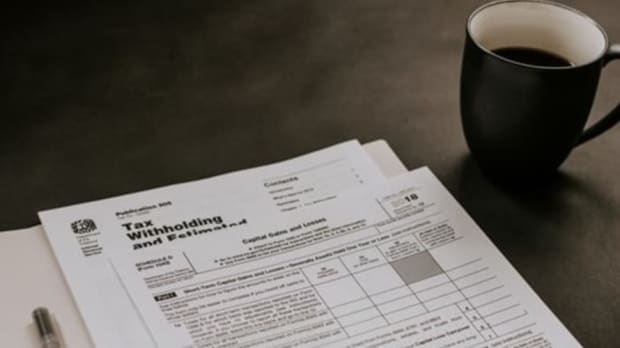
Yes, You Still Have to Pay Taxes on Retirement Accounts
Let's clear up the confusion: What you need to know about taxes and retirement accounts.

APTC Expanded in the Inflation Reduction Act
Hear from our expert about the Advanced Premium Tax Credit's three-year extension.

Ask Bob: Can I Receive Social Security Benefits While Incarcerated?
In this Ask the Hammer episode, a reader asks this question:
“Upon my father's passing in 2021, my siblings and I became the beneficiaries of his traditional and Roth IRAs. They were split into separate accounts by the end of that year. We each took a distribution that year from his traditional IRA because he had reached his required beginning date for distributions but hadn't taken the 2021 distribution prior to his death. Am I allowed to elect the 10 year rule and thus not be required to take another distribution from the inherited traditional IRA until December 31, 2031? Or am I required to make an annual life expectancy distributions starting in 2022 using table one of IRS publication 590-b? My brain is numb from trying to understand the exceptions to the exceptions to the exceptions. I presume there are no annual distributions required of inherited Roth IRAs that only the 10 year rule applies to someone in my situation. Am I right about that?”
Jeffrey “The Buckinghammer” Levine of Buckingham Wealth Partners, met with Robert Powell, editor of Retirement Daily, to answer this question.
Jeffrey and Bob talk about the 10-year rule for inherited Roth IRAs and how it’s different from an inherited traditional IRA. They also talk about RMDs and required beginning dates for inherited IRAs.
Watch the full episode to find out the answer to this reader’s question.
Got questions?
Email [email protected]
More Ask the Hammer:
]]>By Brian Regan, CFA
I listen to the Odd Lots podcast a lot. They often have very interesting guests and I recommend listening to it. There was an episode recently where Zoltan Pozsar and Perry Mehrling, had a respectful debate on the future of monetary regimes. It’s a wonky exchange, but interesting if you’re into that kind of debate.

I believe the crux of the debate comes down to the future of globalization as we know it. Mehrling generally believes that the globalized economy that has grown since World War II will more or less continue as we know it. Pozsar believes that the renewed global tensions and economic trade wars that have been playing out will continue to get worse.
In Mehrling’s view, the dollar will continue to be a dominant global currency due to entrenched Eurodollar liabilities, necessary Foreign Exchange Reserves (FX reserves), and global inertia as a use for trade. In Pozsar’s view, Russian trade with China and India has begun a change in global dollar settlements and he argues that instead of currency reserves countries may start holding commodity reserves instead.
Mehrling’s world will lead to more real global growth, increased global Eurodollars, and increased FX reserves in time. Mehrling’s world would also lead to lower, more stable, real treasury rates. This is an economic world that we should want to live in.
Pozsar’s world essentially means the opposite. Higher and more volatile rates with decreasing Eurodollars and excess reserves. A much more pessimistic view of a future economic world.
Follow us on Instagram and Twitter!
Like most debates with reasonable people, sometimes the argument talks past each other with a lot of overlapping agreement, and ultimately, I think the argument comes to time horizon.
Pozsar is clearly describing what is currently going on very accurately. His argument is that the global economic condition will continue and get worse. He certainly is not alone in this unfortunate view of the world. Famed investor Ray Dalio feels similarly as he describes moving into a new world order. Famed economist Nouriel Roubini has described similar circumstances. Pozsar may tend to be more practical rather than optimistic since he is a strategist for Credit Suisse that needs to give clients actionable insight.
Mehrling is describing what has gone on since the end of World War II. That is a much longer time frame than Pozsar which makes sense since he is a professor of economics at Boston University (Go Terriers!).
Personally, I think both men make very interesting arguments about what has happened in the recent and longer-term past. The question is how to take the information from their debate and use it to make plausible investment decisions. I am a proponent of favoring what we know for sure over what we think could happen. We know for sure that FX reserves and Eurodollars are currently very important and likely will be for the foreseeable future. We know, particularly pointing to Venezuela and Argentina, that having commodity reserves is not historically a suitable replacement for FX reserves. We know that unless the U.S. starts to have a current account surplus, which would be a very dramatic switch, Eurodollars will continue to be important. Finally, although there is a new world order taking shape, globalization is still far more robust and still largely reliant on the dollar even between two countries that do not trade in dollars according to the National Bureau of Economic Research.
Accounting for what we know for sure, the fact that I’m generally an optimist, and shamelessly, the fact that I went to Boston University (joke), make me lean toward Mehrling’s view in the long term. That does not mean that I am not watching events with bated breath knowing that Pozsar’s view can come to pass. Time will tell.
About the author: Brian J. Regan
Brian J. Regan, CFA®, MBA, is the chief investment officer for Asset Management Resources, LLC. His responsibilities within the firm relate to investment research, portfolio design and implementation. He has education and experience in portfolio risk management, asset allocation, fixed income security selection, equity security selection, and macro-economic analysis.
You May Like Also...
Other relevant articles from Retirement Daily

How You Can Financially Prepare for a Natural Disaster
TheStreet

Consumer Prices Rose 7.7% in October from Year Earlier

Women, Divorce and Retirement: He Spent All My Retirement Savings on Other Women
By John Rafferty
The widely accepted standard of a benchmark-balanced portfolio is one in which 60% of the weighting consists of equities (stocks or stock funds) and 40% fixed income (bonds or bond funds). While that may continue to be a benchmark standard in portfolio construction, will it perform as well as it has over the last few decades if rates continue to rise?
After all, the Federal Reserve has declared open war on inflation, with a historically aggressive series of interest rate hikes meant to dampen demand and cool the economy. As a result of their rate hikes that began in earnest early in 2022, the 40-year-long bull market in fixed income (bonds) which began in late 1981, has come to an end. There is some precedence for this action if you look back to almost two generations ago.
In 1979, then Federal Reserve Chairman Paul Volker undertook a similar inflation-fighting and interest rate-raising campaign, not unlike the one that current Chairman Jerome Powell has started in earnest in 2022. The Fed, under Volker’s leadership, raised the federal funds rate from an average of 11.2% in 1979 to about 20% in June of 1981. (source: Wikipedia). While the absolute value of those rates is enormous compared to rates today, the relative difference is much smaller. For example, while Volker’s fed doubled the federal funds rate in two years (the very short-term overnight rate that banks lend to each other), Powell’s Fed has increased rates by over 4,000 percent…. from a low of 0.08% in early 2022 to over 3% by September. That relative increase has had a tremendously negative impact on the value of existing bonds, as rising rates reduce the value of existing bonds with lower yields.
To get a better understanding of the impact of rate trends on both the value of fixed income and its contribution to overall 60/40 portfolio performance, Global Atlantic Financial Group conducted an analysis of the 80-year period spanning 1942 through 2021. In this analysis, they wanted to get a better understanding of how much of a 60/40 portfolio’s historical performance could be attributed to fixed income, during two distinctly different periods.
Specifically, they wanted to know if the last 40 years of steadily declining interest rates, which spanned 1982 through 2021, produced fixed income outperformance compared to that produced during the period of increasing rates, from 1942 through 1981. In doing so, they could then determine how much of the 60/40 average annual return was attributable to fixed income versus equities, and perhaps draw some conclusions about the future of the 60/40 portfolio as a core strategy.
Details and Assumptions of Analysis:
The hypothetical 60/40 portfolio and its returns represent the compound annualized growth rate (CAGR) of 60% equity and 40% fixed income allocations, rebalanced annually. Equity is represented by the S&P 500 total return index. However, given that the length of the analysis (beginning in 1941) predates today’s well-known fixed-income benchmarks, a proxy was developed comprised of a blend of 40% U.S. government bonds and 60% corporate bonds, rebalanced annually. Government bonds are represented by the 10-Year U.S. Treasury Bond and corporate bonds are derived using Moody’s Aaa and Baa corporate bond yields from the Federal Reserve website and deriving the return, based on calculations from Aswath Damodaran, Stern School of Business at New York University.
Results: 2.5% over 40 Years = Huge Difference
The results of the analysis were surprising on a couple of points. Overall, the average compound annualized growth rate of the 60/40 portfolio during the four decades of declining rates (1981-2021) was a robust 11.17%, while during the prior forty-year period that rate clocked in at 8.68%, for a difference of 2.49% on average annually. While that may not seem all that significant on the surface, consider this: $100,000 growing over forty years at an average of 11.17% compounded annually produces over $4 million in additional earnings as compared to growing at 8.68%. It grows to $6,900,000 at 11.17% and about $2,795,000 at 8.68%.
That additional 2.49% in 60/40 annualized performance over the 1982-2021 period can be almost entirely attributed to a massive difference in fixed income performance during that period, while equity performance, somewhat surprising, was not all that different.
Performance of 60/40 Portfolio and Its Constituents, 1942-2021
The Future of 60/40
A Barron’s article from Oct. 16, 2022, is titled “The 60/40 Portfolio is Having Its Worst Year in a Century. What’s Next.” Author Jacob Sonenshine mentions that Fed-induced rate hikes are happening so quickly that “rates on all bonds must rise – and their prices must fall.” He offers a glimmer of hope, however, when he states that the medicine of those rapidly rising short rates may be enough to dampen demand, cool inflation, and ultimately result in bringing yields down some on longer-date bonds. And while that dampening demand may also mean more chilling effects on stocks as they reflect lower earnings expectations and results in the short-term, longer-term the environment may be setting up for better performance in both stocks and bonds.
The challenge, of course, is nobody knows when that might happen, or precisely how it all plays out. While the risks in fixed income are markedly lower now than when interest rates were closer to zero, they remain, as do equity risks despite equities being much cheaper today than a few months ago. However, let’s just assume that despite the awful year that both stocks and bonds are having at the same time, the concept of having a portfolio that includes exposure to both stocks and bonds still has merit and likely always will. However, there is no law written of which I am aware that states the perfect allocation remains 60/40. Why not 50/30/20? Is now the time to think about adding another asset category to the mix with some unique risk-mitigating properties?
Follow us on Instagram and Twitter!
The Fixed Indexed Annuity: Flat or Up, Never Down
A type of fixed annuity known as a fixed indexed annuity could be an excellent addition to any portfolio in which the qualities of stability and growth potential are a desired attribute.
In its most basic form, a fixed indexed annuity credits interest annually up to a limit – called an indexed interest cap. The scale and timing of interest crediting depends on the performance of an underlying index, most commonly the S&P 500 price return index (dividends are not included in the return here).
For example, if the S&P 500 index was up 23% at the end of a one-year interest-crediting term, and the annuity had a 10% cap, it would credit 10%. On the other hand, if the index declined 20% by the end of the interest term, no interest would be credited, but nothing would be lost.
Frequency and Scale: The Raw Ingredients of Indexed Interest Crediting
While it may seem something of a gamble to hook one’s interest crediting to the vagaries of the stock market, the fact that you can’t lose money removes much of that sentiment. Further, once you consider how often the S&P 500 price return index has been positive in a calendar year, and how often those positive moves were over double digits, you can see the attraction of a “maybe” interest crediting opportunity of up to 10% (the cap) each year.
For example, from the inception of the S&P 500 Index in 1957 through 2021, 47 of those 65 calendar years saw the index produce a positive outcome, with 18 being negative, for a positive hit rate about 73% of the time. And since the negatives are only a “zero” and not a loss, we can treat them all the same in an indexed annuity. About those 47 positive years: 37 saw returns north of 10%...which is about 77% of the time, while the remaining 10 positive years saw returns between 0 and 10%.
So, let’s play this out. If one can reasonably assume that, for example, a seven-year fixed indexed annuity has seven chances of crediting interest based on index performance, it would also be reasonable to think that perhaps 5 of those years would be positive (5/7 = 71%), and perhaps 4 of those 5 positive years would be at the 10% cap, assuming the issuing company renewed the cap rate at 10% each year. Run the math on 4 out of 7 years at 10% with the 5th year at perhaps 5%, and you get a total return of 53.73% or a compound annualized growth rate over seven years of about 6.35%. That’s a decent return for a product with zero risk and may be as good or better than the expected returns in the fixed-income portion of the portfolio, even with the higher yields available today.
What about Correlation?
While this may make it seem like the annuity is still correlated with the underlying index, that is not always the case. Yes, over one-year periods, it will move up with the market (limited by the cap), but it won’t go down if the market goes down. In this respect, it is asymmetrically correlated with its index. But what about over longer periods of time?
For example, one of the worst five-year periods in the S&P was the period from 2004-2008. While the total return version of the index lost about 10% over that period (thanks largely to the big drop in 2008), an indexed annuity with a five-year term, a 9% indexed interest cap, and annual crediting using the price return version of the index would have produced just under 27% in total return over those five years. Why? It benefited from returns of 8.99%, 3.00%, 9.00%, and 3.53% from 2004-2007, and lost nothing when the index declined 38.5% in 2008.
Summary
Whether a 60/40 allocation remains optimal going forward is up to an individual and their planner. But seeing the risk that remains in bonds during a period of rapidly rising rates may cause some to think about broadening their portfolio holdings to include an asset with rock-solid stability credentials, and the potential for growth that may rival fixed income over a long-term holding period. Fixed indexed annuities fit that description, and provide attractive correlation properties over various performance periods.
About the Author: John Rafferty
John Rafferty has spent much of his 30-year career building annuity marketing departments at MassMutual, AIG/American General, and Symetra. He holds a B.A. in economics from Colby College and an M.A. in public policy from Trinity College, and currently operates an annuity sales and marketing consultancy, RaffertyAnnuityFraming.com.
You May Also Like...
Other relevant articles from Retirement Daily
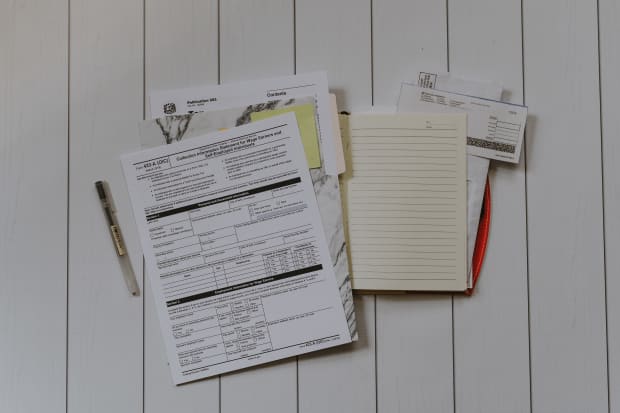
Why You Should Consider Tax-loss Harvesting

Yes, You Still Have to Pay Taxes on Retirement Accounts
Let's clear up the confusion: What you need to know about taxes and retirement accounts.

APTC Expanded in the Inflation Reduction Act
Hear from our expert about the Advanced Premium Tax Credit's three-year extension.
iStock
In Case You Missed It
How Your Adult Children Can Stop Relying on You Financially
Read below to discover the balance of supporting your children and your bank account.
Retirees Going Back to Work: Starting a Business
Are you retired? Do you want to start a business? Here are some things to consider!
Saver's Credit: How a SECURE Act 1.0 Provision & 2.0 Proposal Impacts Retirement Benefits
Learn from our expert how Americans’ saving power will expand with the SECURE Act’s Saver’s Credit.
Inflation Got You Down? Consider these Benefits
Want to optimize your dollars due to inflation? Here are some nontraditional benefits to help you do so.
Can I Switch from Medicare Advantage to a Medigap Plan?
Yes, you can make the switch, but there are some things to consider before you do.
How You Can Financially Prepare for a Natural Disaster
Hear from our expert about 3 tips to plan in advance and minimize financial damage after a natural disaster.
Consumer Prices Rose 7.7% in October from Year Earlier
The consumer-price index increased 7.7% in October. What experts are saying about the smallest 12-month increase since January 2022.
Women, Divorce and Retirement: He Spent All My Retirement Savings on Other Women
Medicare Part B Premiums for 2023
Here's all you need to know about the recently released Medicare Part B premiums.
Optimize Medicare for Military Veterans and Retirees
Maximizing Medicare and Military health benefits can significantly aid actives and Veterans to avoid out-of-pocket expenses. Find out what you're eligible to receive below.
Women, Divorce and Retirement: Homeless, yet Hopeful after Financial Loss
Tax Resources and Information for U.S. Service Members and Veterans
As the nation prepares to celebrate Veteran’s Day, the IRS reminds members of the military, veterans, and their families that the agency offers a variety tax resources specifically for them.
]]>As the nation prepares to celebrate Veteran’s Day, the IRS reminds members of the military, veterans and their families that the agency offers a variety of tax resources specifically for them. These resources and information are designed to help members of the military community navigate their unique and sometimes complex tax situations. Reviewing these resources is a good way to prepare for the upcoming tax filing season.
Here's a list of some of these resources.
- Tax Information for Members of the Military is the main page on IRS.gov where people can go to find links to helpful info, resources and services.
- A taxpayer's military status affects whether they are eligible for certain benefits. Taxpayers can check their eligibility for military tax benefits by visiting IRS.gov. Qualifying employers include the Armed Forces, uniformed services and support organizations.
- There are rules specific to those who serve in combat zones. These taxpayers and their families can find out more on the Tax Exclusion for Combat Service page of IRS.gov. They should also review special rules for the earned income tax credit. If these apply to their tax situation, it could lead to a larger refund.
- The Armed Forces' Tax Guide is a comprehensive IRS publication for military members. This includes:
- Special rules for military personnel serving abroad, including deadline extensions
- Unreimbursed moving expenses
- Reserve component travel expenses
- Members of the military and qualifying veterans can prepare and e-file their taxes for free through MilTax. Taxpayers who do not qualify for MilTax have other options to prepare and e-file their federal taxes for free.
- Most military installations offer free income tax assistance through the military Volunteer Income Tax Assistance program. Military service members can contact their installation's legal office for details. Veterans may also qualify for free tax help at locations nationwide if they meet income or age requirements.
Reprinted from IRS Issue Number: Tax Tip 2022-172
]]>By Mary Helen Gillespie
“Rose,” 60, of Indiana shares a bleak view of her retirement situation but encouraging words for others.
Has your divorce financially impacted your retirement plans?
Yes.
Did you hire a financial adviser, a CPA, or other finance professional to help you plan your retirement needs during the divorce proceedings?
No.
Was your divorce attorney concerned about your retirement finances? Was the divorce judge?
No.
How would you describe the quality of your financial life post-divorce?
I am homeless.
What other information would you like to share with women in similar situations?
Don't give up even when it's hard: You matter!
********************************
Join us for a free webinar - Women, Divorce & Retirement: Creating Your New Personal Finance Plan
Retirement Daily shared Rose’s story with Theresa A. Harezlak, CFP®, CDFA®, a financial advisor with Savant Wealth Management of Rockford, Illinois. Here’s her thoughts for Rose and other women facing the same issues.
The most important thing to remember is that the end of a marriage is a personal event. A divorce is a business transaction. It needs to be treated that way. This means making sure that all your advisors understand the financial and legal aspects of divorce.
Be fair and set realistic expectations. You may not be able to live the same way, but that doesn’t mean it will be bad. It will only be bad if you do not make the changes necessary to accommodate your new situation.
Learn as much as you can about your assets, expenses, and cash flow. Work with someone who can help you understand the impact of a settlement.
I love “Rose’s” positive attitude and her “Never give up” advice. Start small and start to rebuild. I always say, there are times to thrive and times you just have to survive. At this point, being homeless, it is time to survive. It would be great to start saving but that is not realistic. Take small steps to make your life better.
Evaluate your talents. There are probably many. Perhaps you could find a job as a live-in caretaker for an elderly person or a family with small children. This would solve the issue of being homeless and give you some income to begin building your retirement fund. Perhaps a “side hustle” like consulting, tutoring or other jobs with flexibility would be helpful as well.
One area of advice I ALWAYS give my divorcing clients regardless of wealth is that each member of the marriage should always know what is going on with their finances. This is critical and can help both people make better decisions during the marriage and during a divorce.
Remember, you are the one most interested in your well-being. It is not your attorney, accountant, family member or counselors. At the end of the day, you must live with the impact of the divorce. Push to make sure your attorneys are working for you and are understanding the financial impact of this divorce. Work with a financial professional who will guide you in your decisions and help you understand your retirement life after a divorce.
********************************
Learn more by watching our webinar, Retirement Roundtable: Women, Divorce & Retirement, with Robert Powell and panelists Michelle Petrowski and Bonnie Sewell.
To find a financial professional with experience in divorce, visit the Institute for Divorce Financial Analysts website.
You May Also Like...
Other relevant articles from Retirement Daily

Medicare Part D Prescription Drug Cost Analysis: Shocked and Disillusioned (Part 2)
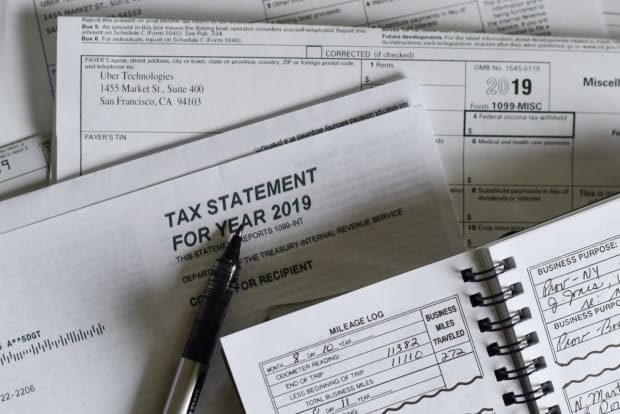
Why You Should Consider Tax-loss Harvesting

Yes, You Still Have to Pay Taxes on Retirement Accounts
Let's clear up the confusion: What you need to know about taxes and retirement accounts.
By Katy Votava, PhD, RN
Whether active duty or veteran, there are important intersection points between Medicare and military health coverage. Those points fall into three categories:
- TRICARE is a federal health insurance program for active duty, retired military personnel, and their family members who are not Medicare eligible.
- TRICARE for Life for Medicare-eligible retired military and their spouses. It is a comprehensive supplement to Medicare and provides prescription drug coverage.
- Veteran Administration (VA) health benefits for those who have served in the military

There are different TRICARE programs:
TRICARE
While on active duty, most service personnel have a variety of military healthcare options. As is the case in the civilian world, if a service person becomes Medicare eligible, they need to consider their Medicare options particularly as they relate to Medicare Part B. Active-duty health coverage entitles the service person or their spouse to delay Medicare Part B enrollment until a future date. They will be eligible for a Special Enrollment Period (SEP) to enroll in Medicare without penalty when they leave active-duty medical coverage in the future.
However, if you are Medicare-eligible and an active-duty service member or spouse of an active-duty service member you must enroll in Parts A and B to avoid a lapse in coverage when you retire. Like any other person who has employer coverage and is Medicare-eligible when they retire, you have a Special Enrollment Period. You can enroll in Medicare at any time during the year.
Retired Military
Retired military who are under 65 years of age, and their spouse can enroll in TRICARE for cost-effective comprehensive health coverage. When a military retiree or spouse reaches 65, they are eligible for Medicare and TRICARE for Life medical coverage. TRICARE for Life is specifically for Medicare-eligible military retirees.
Medicare pays first for Medicare-covered services. TRICARE for Life will pay the Medicare deductible and coinsurance amounts and any service TRICARE for Life covers that Medicare does not cover. The retiree and spouse can also enroll in TRICARE dental plan options.
TRICARE for Life beneficiaries must enroll in Medicare Parts A and B. They do not need to enroll in Medicare Part D because TRICARE for Life includes Medicare Part D creditable coverage. If they join a Medicare Part D plan, that plan pays first, and TRICARE for Life pays second. Given that TRICARE for Life functions as a Medicare supplement, a Medigap plan or Medicare Advantage is unnecessary. That said, a person can opt into a Medicare Advantage plan, and TRICARE for Life will coordinate benefits.
In my experience, people seldom benefit from joining either a Medicare Advantage plan or Medicare Part D plan in addition to TRICARE for Life. A bonus of TRICARE for Life is that it includes coverage of international health care services including for those who live abroad for extended periods as ex-pats.
Join us for a free webinar - Women, Divorce & Retirement: Creating Your New Personal Finance Plan
Veterans’ Benefits
Veteran’s Administration (VA) health coverage is for U.S. military veterans. These benefits are available to most veterans whether retired military or not. Current and former members of the Reserves or National Guard who are called to active duty by a federal order and completed the full period for which they served may be eligible for VA health benefits as well.
The VA offers a wide range of health benefits based on the Veteran’s needs, circumstances, and specific requirements. VA health benefits can include the following:
- Inpatient and outpatient care at VA medical facilities
- Prescription medications from VA providers
- Long-term care depending on needs, income, and space availability
- Care from community health care providers when the VA cannot supply the care
- Mental health care
Veterans who meet a hierarchy of enrollment criteria may receive a major part of their health services through the VA. If that person needs care outside of the VA system, they will need to pay for that or have other coverage. If a veteran is not retired military, they often need a Medicare Advantage with a Part D plan or a standalone Medicare Part D plan as backup coverage.
VA prescription drug coverage can pay for a major part of a person’s prescriptions at a low cost. This is a valuable benefit that is available to most Medicare-eligible veterans. It is worth considering because cost savings can be significant. Given that the VA does not cover all medications, I recommend that the person join a Medicare Part D plan or Medicare Advantage Plan as a backup. They cannot use both types of coverage for the same prescription at the same time.
Where to Find Help
If you are:
- A veteran or have served in the U.S. military contact the Department of Veterans Affairs to get answers to your questions about VA benefits: Call 1-800-827-1000, TTY 1-800-829-4833, or visit www.VA.gov
- Retired military whether Medicare eligible or not can contact TRICARE to decide which regional office covers them and find associated information: Call 866-773-0404 or visit www.Tricare.mil
Optimizing Medicare and military health benefits in retirement can save significant money in out-of-pocket expenses. Maximizing both Medicare and military health benefits can have positive impacts on the veteran such as helping increase access to needed health services. The retirement nest egg goes further and potentially improves a veteran’s quality of life. It may even health help improve your health. That’s a win-win!
About the author: Katy Votava
Dr. Katy Votava, president, and founder of GOODCARE.com®, is a registered professional nurse and has a Ph.D. in health economics and nursing from the University of Rochester in Rochester, New York. With her in-depth experience as a nurse practitioner and healthcare administrator, Dr. Votava is an expert in healthcare reimbursement and outcomes, including those related to Medicare, Medicaid, and long-term care. A major focus of Dr. Votava’s research is health care costs for people during their retirement years, and she has been published widely and frequently spoken on these topics.
You May Also Like...
Other relevant articles from Retirement Daily
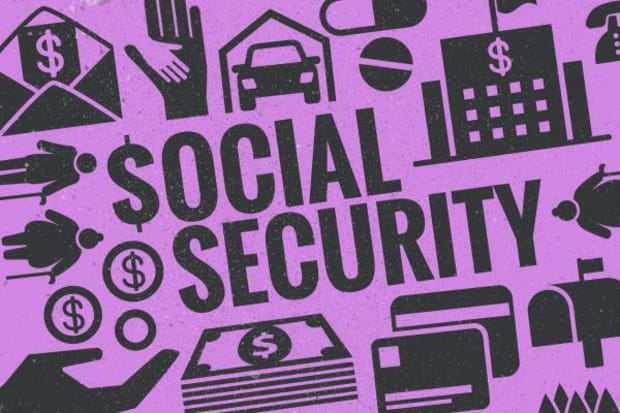
Common Retirement Questions: When Should I Begin Taking Social Security?
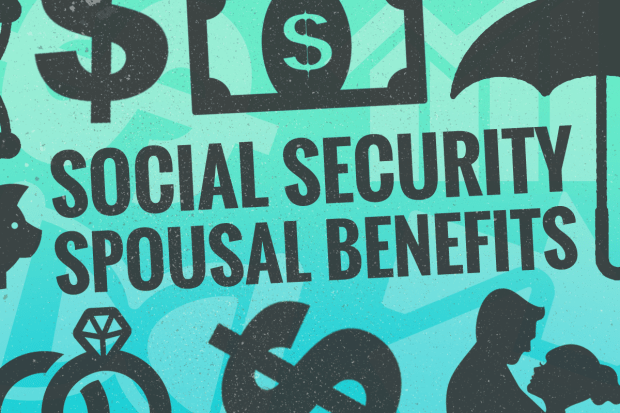
Ask Bob: Will Taking My Social Security Spousal Survivor Benefits Early Affect My Benefit Amount?
TheStreet

Women, Divorce and Retirement: Living on Public Assistance After Losing Access To Assets
Medicare recently announced what the premiums will be for Medicare Part B in 2023. For the first time in a while, premiums will drop in 2023 instead of increasing, which is good news for many consumers, according to MOAA.
Jae Oh, author of Maximize Your Medicare, discusses what has caused this decrease in premiums. “Earlier this year we spoke about the fact that as a result of an Alzheimer's medication, which is covered by Part B, and the fact that the price was actually lower than anticipated, that Part B premiums would be lower going into 2023,” he said. “Instead of being adjusted down mid-year, we now have the news that part B premiums for most people are going to be down to $164.90. The Part B deductible will be higher at $226 a year.”
Follow us on Instagram and Twitter!
Oh then said that income is split into five brackets based on adjustments by the inflation CPI every year. Once these brackets are made, not only is Part B adjusted to their modified adjusted gross income, but Part D gets adjusted as well. “For Part D plan premiums, I've been able to take a look at the plans. As low as below $4 a month is the lowest that I've seen going into 2023,” Oh said. “That said, you'll want to check because as a result of the fact that Part D plans… change year to year plan by plan every single year… what may be most fitting for our individual situation can be expected to change as a result of improved benefits, all of the changes and the very competitive marketplace.”
Along with this decrease in Part B premiums is an increase in Social Security Cost of Living Adjustment - also known as COLA - for 2023. People have estimated this increase to be about 8-9%, but Oh said that we will know for certain after the next CPI reading. Nevertheless, 2023 will be a very unusual but exciting time for Medicare consumers.

Saver's Credit: How a SECURE Act 1.0 Provision & 2.0 Proposal Impacts Retirement Benefits
Learn from our expert how Americans’ saving power will expand with the SECURE Act’s Saver’s Credit.
Istock

Inflation Got You Down? Consider these Benefits

Can I Switch from Medicare Advantage to a Medigap Plan?
Yes, you can make the switch, but there are some things to consider before you do.
By Mary Helen Gillespie
“Sheryl,” 65, of Virginia, a mother of four, tells how she will never be able to retire as her divorce has left her living paycheck-to-paycheck for decades, and she is still owed thousands of dollars in child support.
How has your divorce financially impacted your retirement plans?
I will not be able to actually retire. I will always have to have some additional income either through part-time work or through selling china I paint and/or other art mediums.
Did you hire a financial adviser, a CPA, or other finance professional to help you plan your retirement needs during the divorce proceedings? Would you today?
My ex was/is a financial adviser, CPA, and life insurance broker. Yes, I would but I would not trust my ex.
Was your divorce attorney concerned about your retirement finances? Was the divorce judge?
Not at that time, but those issues were not of real concern until:
- My ex sold his client list and began to work as an independent contractor to avoid child support based on his income.
- I discovered that our marital home was in the second month of foreclosure and he never told me. I was only in my second year as a real-estate agent but was able to sell the home quickly at an open house - we were in an area that was/is highly desirable.
- The net profit on the sale of the house should have been $90,000. But my ex had taken out a second trust on our home and forged my name on the documents.
- He took one of the debt payoff checks (another one I did not know about) and altered the payee to "Household of XXXX XXXXXXXX rather than "Household Finance.”
- Even though the attorney told the settlement company to send the final check to her and her office would cut each of us the agreed-upon amount, he took the check and forged my name on it and deposited it into his then-broker's account (a huge SEC violation). He was never punished for those actions.
Throughout our nearly 14-year marriage, all funds from my employment IRA(s) and other investments were turned over by me to him to invest for us. It was all spent on other women. Because of his flagrant disregard for child support and the loss of our home in Vienna, VA, I had to move to an affordable county, removing our kids from some of the better public schools (at that time) in Virginia, and uproot them from their home and friends. My children were 2 1/2, 9, 11, and 17 at that time.
How would you describe the quality of your financial life post-divorce?
Paycheck to paycheck, especially when I still had three of the four minor children to care for. He still owes close to $17,000 and stopped paying in 2013 when our youngest turned 18. I worked full-time throughout our marriage with one year off when each of our younger three children were born.
Throughout the marriage, "Next year, honey" was the mantra for when I could finish my last two years of college - it never happened. Finally in 2018, I completed my degree - which added $19,000 debt to my already tight budget. My car of 14 years died in 2019 and for the first time since I was 20, I had a car payment as well. National Health Care increased my monthly medical insurance payment from $95 to over $100, and now Medicare has increased it to $170.10.
I was thinking about going to the state to begin collection of past-due child support (a debt that has no cutoff date). My ex sent me two really ugly letters with accusations and threats - he is narcissistic and a bully - and yes, he still has the power to frighten me. So, there is the lesson, ladies - hire professional help, not related to you or your ex, to obtain court-ordered and enforceable long-term financial arrangements. My ex now makes close to $100,000 per year; that was something he held off on until our youngest turned 18.
I am a museum director in a small rural town and earn a measly $34,000. I have $4,000 in the last "retirement" account I set up. My Social Security will be about the same as my current income - hence, never will be able to retire.
What other information would you like to share with women in similar situations?
- Even if things are amicable, get everything in writing with a neutral party witness signature.
- Do not give up your right to alimony.
- If married long enough by state and federal law, get a legally enforceable order to collect retirement and check on your Social Security rights.
- Put an immediate court-approved and ordered financial agreement into place immediately.
- If you have minor children, go through the appropriate state office of child support enforcement but be aware, your ex can play the system for a long time and avoid full payments.
- NEVER trust your ex to handle any of the financial arrangements himself - always get things done through legal channels so they are enforceable.
It's hard: You matter!
Join us for a free webinar - Women, Divorce & Retirement: Creating Your New Personal Finance Plan
********************************
Retirement Daily shared “Sheryl’s” story with Allison A. Alexander, CFP®, CPA, CDFA®, a financial adviser and member-owner of Savant Wealth Management of Rockford, Illinois. Here’s her thoughts for “Sheryl” and other women facing the same issues.
“Sheryl” may be able to obtain relief, but it’s likely going to require litigation, and legal
representation can be expensive. Women facing similar challenges should contact their state bar association and explore legal aid/pro-bono family-law attorneys for additional options.
This caught my attention: “My ex was/is a financial adviser, CPA, and life insurance broker.” If what “Sheryl” says about the way he handled the couple’s finances is true, it may make sense to conduct a background check on her former husband using publicly available records. A free report can be accessed here: https://brokercheck.finra.org/ This may be of interest to a judge who revisits “Sheryl’s” case.
I would have recommended she run a credit report during the divorce process. This would have identified the second mortgages and they could have been addressed before settlement.
I now recommend she visit the Social Security office as soon as possible. With a 14-year marriage, she may be eligible for half of her former spouse’s benefits or 100% of her own, whichever is greater. She should also explore Medicare assistance programs. Depending on her income, she may be able to reduce/eliminate her premiums: https://www.medicare.gov/basics/costs/help.
Finally, she should practice self-care. She needs to stay healthy to work and reduce health care costs.
To increase her income post-divorce, “Sheryl” could develop a side hustle to generate income, preferably something online with little overhead. If she is in good health, she could walk dogs or grocery shop for others. If she lives in her own home, she could consider renting out bedrooms to friends or fully vetted strangers. This could reduce out-of-pocket costs.
It sounds like the youngest child may be 27 years old, and the oldest child may be 42 now. She could consider moving in with one of the children and being a caregiver for pay.
If she is going to continue to work as long as possible, even taking a second job, she should consider doing something she enjoys. With her art background, her skills could be helpful in a framing shop/gallery.
One area of advice I always give my divorcing clients regardless of wealth is that even if amicable, the divorce process is uncomfortable. Do not get into a hurry and rush the process. You are making short-term decisions that are going to impact your long-term financial security. Legal fees are expensive, but making poor financial decisions can be even more expensive.
Divorce can be disruptive and at times, traumatic. Recovery is a process, not something that happens overnight. If it’s possible, give yourself some breathing room, post-divorce, before making significant financial decisions.
Work with an adviser to invest your settlement. Investing may be a new, unfamiliar world. A newly divorced client may need to explore her risk tolerance and level of comfort with volatility before selecting a portfolio. Retirement projections can provide clarity on how much a person can spend without worry, resulting in peace of mind.
Advice I’d give to EVERY person, whether divorcing or not: Do not give up control of your financial situation to another person. Your financial security is your own responsibility. If your partner volunteers to be responsible for investing and tax planning, that’s fine, but be sure you hold quarterly meetings to go over all of your assets and liabilities. Make financial decisions together and recognize this is your responsibility.
********************************
Learn more by watching our webinar, Retirement Roundtable: Women, Divorce & Retirement, with Robert Powell and panelists Michelle Petrowski and Bonnie Sewell.
To find a financial professional with experience in divorce, visit the Institute for Divorce Financial Analysts website.
]]>Gargi Chaudhuri, Head of iShares Investment Strategy, Americas
- October Consumer Price Index (CPI) inflation slowed slightly to 7.7% year-over-year versus consensus expectations for a 7.9% pace. Despite a moderation in used car (-2.4%) and apparel (-0.7%), headline inflation remains elevated based in part on continued strength in shelter, food and energy prices. Month-over-month headline inflation remained strong with prices growing 0.4% in October.
- Core CPI, which takes out the more volatile food and energy components of CPI, grew 6.3% year-over-year, down from the four-decade highs of 6.6% previously. Month-over-month, Core CPI came in at +0.27% versus a 0.6% pace the month before, marking a meaningful decline. Alongside shelter costs, which were up .8%, core CPI was supported by upward pressure in recreation goods and services.
- We are continuing to see shelter inflation as the main driver within headline and core CPI for the next quarter. Because the CPI calculation for shelter inflation proxies existing rent (not just new rent) expenses, it tends to move at a lag relative to other items in the consumer basket because lease terms are usually one or two years long. If inflation is going to come down in the next few months, it will have to come from other components in inflation, especially in the core goods inflation aided by eases in supply chain. However, shelter inflation, which comprises close to 40% of core inflation, will remain elevated.
- This morning's data showed further weakness in goods prices (-.38%), cross all categories such as apparel, transportation, and education. The pandemic pulled forward purchases of many discretionary items, and now the reduced demand in the wake of the pandemic has contributed to rising inventories to and disinflation. As we enter the holiday season, retailers may capitalize on seasonal demand to shrink inventories. Several large retailers have already announced early Holiday shopping deals.
- Last week at the FOMC meeting, the Federal Reserve highlighted that it was very premature to talk about a “pause” signaling that they will continue to raise rates in their next meeting in December. The only question is by how much - this report indicates that they can decelerate their pace of hiking to a 50bp pace in their December meeting given the emergence of some evidence that certain components of inflation are slowing down.
- As inflation remains elevated amid higher rates and quantitative tightening, market volatility in major equity indexes has become more elevated. Our highest conviction exposure within equities remains minimum volatility exposures (USMV) and quality exposures with strong cashflows that may be more likely to weather market downturns. Within quality sectors, we prefer exposures to broad healthcare (IYH) and healthcare providers (IHF). Exposure to high-dividend paying companies may also provide a source of return (HDV) in the current market environment.
- How can investors hedge against higher and more persistent inflation? We believe inflation-linked bonds with shorter maturities can provide potential protection against inflation as yields for short-duration inflation-linked bonds continue to be attractive. For exposure to short-duration TIPS, consider the iShares 0-5 Year TIPS Bond ETF (STIP).
- Investors should also consider investing in short-term bonds as a replacement for cash or as a driver of income in their portfolios. In particular, investors could add SHV and SHY to their portfolios for access to high-quality, short-dated government bonds and allocate to IGSB to get access to high-quality credit that earns close to a 6% coupon.
Nigel Green, CEO of deVere Group
U.S. inflation has cooled more in October than was generally expected -- but it is still way too hot for the Federal Reserve to step down from its agenda of interest rate hikes just yet.
Despite the positive data, the Fed will keep its foot on the brake of the U.S. economy for the time being, meaning a fifth consecutive 50 basis-point increase in interest rates is possible, if not likely, next month.
That said, today’s inflation data is likely to excite the markets because it means the Fed is now more likely to signal it will slow down its rate-hiking pace in months to come.
Yung-Yu Ma, Chief Investment Strategist at BMO Wealth Management
The better-than-expected CPI numbers are welcome but show a lot of underlying volatility. Probably the biggest positive factor was that the strong increase in shelter costs contributed to over half of the CPI increase on the month and by the summer of next year that should begin to soften.
Some other elements that brought down CPI on the month, such as falling natural gas prices and medical care services have a good chance of turning higher in coming months. And other categories such as insurance costs, car maintenance, and even food inflation remain stubbornly high.
The market’s short-term reaction may be strong, but this is only one month’s data. This entire year has seen the market careen from one narrative to the next.
While the October CPI data may help to soften the Fed’s trajectory a bit, it would take a lot more in coming months for the Fed to make an actual dovish pivot rather than stick to its “higher for longer” recent messaging.
]]>
By David R. Peters
“I don’t know what to do.” I will never forget the sadness in her voice as she surveyed the seemingly endless piles of debris, broken children’s toys and destruction that seemed to stretch for miles. She seemed to shake herself back to consciousness after getting lost in her thoughts. “Thank you for coming down here,” she said, as she stepped around a wood pile and went to greet her neighbors to start another day of clean-up.

I stood there for a second just letting the magnitude of everything that we were doing sink in. The job just seemed so big. While everyone talked about the clean-up efforts in New Orleans after Hurricane Katrina, small little towns outside of the city were devastated as well. For the residents of southwestern Mississippi, where I spent my spring break in 2006, the clean-up efforts took much longer than a week or even a month. It took years for them to come back. For those like the woman I spoke to on that March Day, Katrina meant starting over.
The devastation caused by Katrina and more recently, Hurricane Ian, leave us with a sense of how powerless we are against natural disasters. When we see that look of helplessness in someone’s eyes when their home, memories, and life savings have been erased, we can’t help but think about what we would do in their shoes. Would we be able to start over? Is there anything we can do to prepare ourselves ahead of time so that we would not have to?
As a financial adviser, I will be the first to say that planning ahead is important. While there is no perfect plan to prepare yourself for the devastation of a hurricane, wildfire, or earthquake, there are some things that you can do to minimize the damage and get you back on your feet quickly.
Review Your Insurance Policies
Insurance is an easy thing to forget. When our homeowner’s policy comes to us in the mail, we may notice the price (especially if the rate has gone up from the prior year) but not much else. Many people buy homeowners and auto insurance only to comply with state law. However, insurance may be the most important way to get back on your feet after a disaster strikes. In order to be effective though, it needs to be up-to-date and reflect the assets that you actually own.
The basic homeowner’s insurance policy typically has very little coverage for high-value items such as jewelry, artwork, and collectibles. Most people do not have these things in their homes, so the standard insurance policy does not cover them. Therefore, in the instance that an original artwork or a family necklace that has been passed down for generations gets destroyed in a natural disaster, the standard insurance policy may only reimburse a few thousand dollars in damages. This may not be nearly enough! Aside from the sentimental value, the financial loss of such items can take its toll on a household.
High-value items normally need to be covered either as an endorsement to your current homeowner’s policy or under a separate policy altogether. An endorsement is simply an extension or addition to your current policy that allows the insurance company to account for additional coverages that you need beyond what comes standard. It is like asking for additional toppings on your sundae or upgrading your internet service. You are taking what comes with the normal policy and adding to it to fit your unique needs.
The insurance company will specifically list all of your high-value items on a separate schedule that is added to your policy documents. If an endorsement within your current policy is not possible, the insurance company may choose to schedule all of these items out on a different policy altogether (often referred to as an inland marine or scheduled policy). In either case, you will pay a little bit more in premium because of the additional coverage provided. However, you can rest assured that your valuables will be reimbursed for the full amount of what they are worth.
Similarly, it is also important to make sure that your auto insurance policy covers all of the things that can happen in a natural disaster. Many states only require a minimum amount of insurance coverage to comply with state law. This “liability only” or state minimum coverage will often cover your responsibility if you cause an accident, but it will not cover damage caused if you collide with a large rock that has fallen into the road. This claim would only be reimbursed if you have collision coverage. Collision coverage is exactly what it sounds like – it covers you if you run into something while driving.
What if you are not driving though? Let’s say a tree branch falls on your car while you are parked. This claim would not be covered under liability or collision coverages. This claim would be reimbursed only if you have comprehensive (or “other than collision” coverage). Similar to your homeowner’s insurance, auto insurance may not cover every type of accident. Therefore, it is important to know what is covered and what is not.
Join us for a free webinar - Women, Divorce & Retirement: Creating Your New Personal Finance Plan
Get a Safe Deposit Box and Use Cloud-Based Storage
While insurance will financially reimburse you for damage to your property, it will not prevent damage from a natural disaster. Insurance cannot stop the hurricane; it can only pay people back for the damage the water causes. If you have items that you want to protect from any sort of damage, you may want to consider a safe within your home or a safe deposit box at a bank. These will offer additional physical protection in the event of a natural disaster.
The prices of home safes can vary significantly depending on the level of protection you want. And, while the highest-priced safes can offer significant protection, their physical location remains a problem. If the home is completely flooded, the safe will be submerged as well. Access to the safe may be an issue even if the safe remains intact in a natural disaster. A safe deposit box may offer more protection simply because it is not located within your home. For this reason, you may consider purchasing a safe deposit box that is far enough away from the home that a natural disaster is unlikely to reach it.
For important papers, cloud-based storage is usually best. Deeds, titles, important legal documents, and insurance policies should all be scanned and kept in electronic form so that they can be reached easily should a natural disaster strike. Cloud-based storage is generally cheap and widely available. Among the more popular forms of cloud-based storage are Microsoft One Drive, Google Drive, and Dropbox.
Regardless of which option you choose, it is important to remember that electronic papers may still be vulnerable to hackers. Therefore, it is important to password-protect any important documents and utilize dual authentication whenever possible.
Keep Emergency Credit Cards and Quick Sources of Cash
Even if you have your insurance policies up to date and you can easily get to your important documents from the cloud, you may still need to pay for basic supplies after a disaster strikes. For this reason, it is advisable to have an emergency credit card available. Cash can get wet, ripped, or destroyed in a natural disaster, making it worthless. Credit cards are made of plastic or metal and are generally more durable. They can easily be replaced if they do become damaged by simply calling the credit card company. Also, credit cards often carry limits of thousands of dollars, giving the holder a high level of purchasing power that can be easily accessed.
It is also a good idea to maintain an emergency fund as well. Emergency funds are online savings, checking, or money market funds that can be easily used to pay bills, insurance deductibles, or other living expenses after a disaster strikes. Clean-up after a hurricane or earthquake can often take several months. In that time, you will need to pay for food, short-term shelter, and repairs to your home. Therefore, it is best to keep at least 6 months of living expenses available. For example, let’s say that you spend approximately $5,000 per month in living costs, including your mortgage payment, electric bill, food, and other household costs. Your emergency fund should be approximately $30,000 (6 months x $5,000). Keeping an emergency fund will allow you to have quick access to the money you need to get by during clean-up.
It should be said that none of these strategies will keep a natural disaster from happening. We can’t really stop Mother Nature. However, we can be better prepared for the unexpected. By making a few moves now, we can be in the best position possible to get back on our feet quickly without having to start over.
About the author: David R. Peters
David Peters, CPA, CFP®, CLU®, CPCU®, is the founder and owner of Peters Professional Education and Peters Tax Preparation & Consulting, PC. He is also a financial adviser for CFO Capital Management with over fifteen years of experience in financial services, including 3 years in the hedge fund industry and six years in the insurance industry. He regularly teaches courses in accounting, finance, insurance, financial planning, and ethics throughout the United States.
You May Also Like...
Other relevant articles from Retirement Daily

Women, Divorce and Retirement: Living on Public Assistance After Losing Access To Assets

Medicare Part D Prescription Drug Cost Analysis: Shocked and Disillusioned (Part 2)

Why You Should Consider Tax-loss Harvesting
Many people wonder if they could switch over to original Medicare with a Medigap plan from a Medicare Advantage plan, especially during the Annual Election Period (AEP) that runs from October 15 to December 7 for 2022. Although it is possible, there is a lot that goes into making this switch that people should consider beforehand.
Jae Oh, author of Maximize Your Medicare, explained that those who enroll in Medigap cannot also have a Medicare Advantage or Part D plan. “If you are not in an open enrollment period for Medigap nor a guaranteed issue for Medigap, then you will want to check to make sure that you pass the medical underwriting questions, which is the right of the carriers to ask,” he said. “Only after being accepted can you then select a Part D plan, which will auto disenroll you from your Medicare Advantage plan.“
Join us for a free webinar - Women, Divorce & Retirement: Creating Your New Personal Finance Plan
Being accepted into Medigap is not as easy as it sounds. There are many different reasons why a Medigap carrier would refuse a consumer. Oh said that one reason could be if someone had a knee replacement surgery or something that has been scheduled and exists on their medical records.
Although this might be a reason that one carrier may refuse the consumer, the fact that they were refused might make other Medigap carriers refuse that person as well. “Medigap carriers do have the right to ask questions [and] those questions will vary from carrier to carrier,” Oh said. “So as a result it can change, and the fact is that your results will be stored and you'll be asked whether or not your application to another Medigap carrier has been refused in the past.”
This is where a financial adviser may be helpful. An adviser can help you with the selection of your Medigap carrier to make sure that you are going for a carrier that will be more likely to accept you, according to Oh. Once accepted by the carrier, figuring out the most efficient Part D plan for your location and prescription list is the next step, which an adviser can also help with.
You May Also Like...
Other relevant articles from Retirement Daily

The 2023 Medicare Annual Election Period

Medicare Part D Prescription Drug Cost Analysis: Shocked and Disillusioned (Part 1)

The Best Time to Switch From a Medicare Advantage Plan to a Medigap Plan
By Rob Grubka
Open enrollment. It’s that time of the year when millions of Americans will select their benefits for the upcoming year. While clearly important, most workers often view this task as a chore. Voya research shows that 72% of benefit-eligible employees would prefer to service their car, visit the dentist or prepare for tax season instead of reviewing their annual enrollment benefits.

But with inflation at historically high levels and a potential recession looming, it’s clear that Americans are looking to stretch every hard-earned dollar. For example, recent industry data reveals more than one-third of Americans (36%) earning at least $250,000 annually say they are living paycheck-to-paycheck, underscoring how inflation is taking a bigger bite out of Americans’ budgets at all ends of the pay spectrum.
As a result, it’s important that all employees not hit the “easy button” and simply default to their benefit selections from last year during this fall’s open enrollment. Beyond core workplace benefits like medical, dental, and vision, most don’t realize how many other great resources are available to them directly from their employer that could help save them money in the long-term and spare them from dipping into savings, including their retirement fund. Below are a few voluntary and nontraditional workplace benefits to consider to help optimize every benefits dollar and address both your health and savings needs.
Hospital Indemnity Insurance
If you need to go to the hospital for a medical emergency, your health insurance plan will typically cover a good portion of your costs. But as many learned from personal experience during the COVID-19 pandemic, it doesn’t always cover all the out-of-pocket expenses. Hospital indemnity insurance can help with those out-of-pocket costs when you have a covered stay in the hospital — whether it’s an emergency or not.
For example, pregnancy is one of the most common reasons for hospitalization among non-elderly people. A recent Kaiser Family Foundation Analysis found the average cost of having a baby is nearly $18,900 for people with large employer group insurance plans, with out-of-pocket payments averaging roughly $2,850. Hospital indemnity insurance can help you with those out-of-pocket costs when you have a covered stay in the hospital, and according to an industry report from Eastbridge Consulting Group, generally the cost averages between $5 and $6 per week.
Critical Illness Insurance
In the wake of the COVID-19 pandemic, many employees started looking to their employers to help protect their health and financial well-being. For example, critical illness insurance — which pays a lump-sum benefit upon the diagnosis of a covered illness or condition like a heart attack, cancer, and stroke — has become increasingly popular. Industry research from Eastbridge Consulting Group shows that while only a third of U.S. employers (32%) currently offer critical illness insurance to their employees, of those not offering this voluntary benefit, more than two in 10 employers (22%) are planning to offer it in the future.
Interestingly, an increasing number of employers have also started adding COVID-19 to their list of infectious diseases covered as part of their critical illness insurance offering. Like other voluntary benefits, critical illness insurance can be used for out-of-pocket medical costs, as well as household expenses like rent, utilities, or a mortgage. In terms of affordability, a recent industry report from Eastbridge Consulting Group shows the employee cost of critical illness insurance averages $286 per year — that’s less than a dollar per day!
Follow us on Instagram and Twitter!
Group Life Insurance
During the onset of the COVID-19 pandemic, many Americans reflected on their own mortality. As a result, the number of life insurance policies sold during the first half of 2021 hit record levels not experienced since 1983, according to LIMRA’s Second Quarter U.S. Individual Life Insurance Sales Survey. While life insurance sales have since leveled off during the second half of 2022, this surge in interest did shine a spotlight on the value of life insurance.
Unfortunately, individuals with serious medical conditions may not qualify for individual life insurance or the cost of a policy may not be affordable. This is where group life insurance provided by your employer might be a benefit worth exploring during open enrollment. Since group life insurance is sponsored by your employer, it’s often a cost-effective way to help protect those who rely on your income. In some cases, it doesn’t require a medical exam for coverage. Additionally, employees can often take their group life insurance policy with them if they leave their employer. They just need to continue paying the insurer directly for the coverage.
How much life insurance coverage do you need? It’s a personal decision and one that needs to be based on who is dependent on your income as well as your family’s short and long-term spending needs. One general rule is that your death benefit should equal five to 10 times your annual income. While this is a simple formula, it’s important to remember that it doesn’t consider individual factors and the financial protection your family may need can change over time — for example, when your children finish school or when you pay off major debt like your mortgage. If you need help, there are online calculators that do a great job providing personal guidance or you can speak with a financial professional.
Emergency savings
According to Voya retirement plan participant data, employees without adequate emergency savings are 13 times more likely to take a hardship withdrawal from their retirement plan. Importantly, those with adequate emergency savings feel more positive about their finances as these individuals save more (51% more) and on average are on track for a secure retirement (over 70% income replacement). So, the correlation between having emergency savings and the impact on one’s retirement plan is clear.
As a result, more employers are now offering nontraditional benefits to help their workforce in this area. Often referred to as emergency savings accounts, these savings vehicles help employees put away money that they can later access in an emergency. Some emergency savings accounts are funded by automatic deposits through payroll deductions, much like how employees fund their 401(k)s. The biggest difference with emergency saving accounts is that the dollars deducted from the employee’s paycheck are taxed as income, and the funds are available to an employee when they need them.
Student Loan Debt
Another financial roadblock is the ability to save for retirement while managing student loan debt — and inflation isn’t helping, particularly for younger generations. And, while the Biden Administration recently took action to address some college debt, many individuals will still likely have student loan balances that need to be addressed. Recent Voya data found 68% of Millennials agree or strongly agree that they are not able to pay down their debt as quickly as they want to because of inflation. What’s more, according to Voya plan participant data, about one in five employees has student loan debt, and 98% of them say they’d likely save more for retirement if they had their loans under control.
To help address this concern, another nontraditional benefit growing in popularity is for employers to structure out-of-plan direct payment support for student loan repayment. Within this model, employers make direct after-tax contributions to the servicers of their employees’ student loan debt. The employer is — in effect — making loan payments on behalf of the employee, but since the money is considered income for the employee, both the employer and employee must pay taxes. This solution helps employees pay down their debt more quickly — and, in turn, direct more of their income toward retirement savings.
Final Thoughts
While it’s understandable why most Americans often view their annual benefits enrollment as a chore, given all the uncertainty and financial pressures in today’s world, it’s important employees shift this mindset. Open enrollment provides a valuable opportunity to explore new solutions to help optimize your workplace benefits and savings needs.
About the author: Rob Grubka
Rob Grubka is CEO of Health Solutions for Voya Financial, which helps Americans become well planned, well invested and well protected. He is responsible for product development and management, distribution and the end-to-end customer experience for Voya’s stop loss, group life, disability and supplemental health insurance solutions, as well as health savings and spending accounts, offered to businesses covering more than 7 million workers. Grubka also serves on Voya’s Executive Committee. Grubka brings nearly 30 years of actuarial, product management and leadership experience. He earned a bachelor’s degree in actuarial science from The Ohio State University. He also holds FINRA Series 6 and 26 licenses and is a fellow in the Society of Actuaries.
You May Also Like...
Other relevant articles from Retirement Daily

Yes, You Still Have to Pay Taxes on Retirement Accounts
Let's clear up the confusion: What you need to know about taxes and retirement accounts.

Ask the Hammer: Am I Able to Take More than the RMD?

Planning for Your Health Care Expenses in Retirement
By Chad Parks
In December 2019, the Setting Every Community Up for Retirement Enhancement Act (SECURE Act) was passed, marking a historical step in the right direction for Americans dreaming of a fairytale retirement. The bill covered a lot of ground with key provisions aimed at increasing access to workplace retirement plans and stopping older generations from outliving their savings. One major provision of the bill that’s often overlooked by the average individual is the Saver’s Credit.

The Saver’s Credit is a tax credit for low- and middle-income individuals and families that provides incentives for retirement contributions. To be eligible for the credit, an individual must not be claimed as a dependent, not be a student, and must be 18+ years old. Savers within those parameters can receive up to 50% of their eligible retirement plan contributions each year of up to $2,000 per individual, or $4,000 for those married-filing-jointly, making the maximum tax credit available $1,000 per individual or $2,000 for those married-filing-jointly.
As it stands, as a saver's income grows, the size of the credit they’re eligible for shrinks to 20% or 10% of their contributions, depending on their adjusted gross income (AGI). In 2022, single filers’ AGI must fall below $34,000, and for married-filing-jointly, the AGI must be below $68,000.
This provision in the SECURE Act is a momentous step in the right direction toward solving America’s looming retirement crisis — defined as the crumbling three-legged stool of underfunded pension plans, historically low personal savings, and the Social Security surplus reserves running dry. Now more than ever, individuals' retirement futures fall squarely on their ability to save enough money to support themselves, which is getting increasingly harder to do with progressively longer life expectancies.
By expanding Americans’ saving power with the SECURE Act’s Saver’s Credit, we’re one step closer to helping everyone reach their retirement goals, though it isn’t an end-all solution to the problem.
SECURE Act 2.0
In October 2020, the House Ways and Means Committee proposed an extension of the SECURE Act with the Securing a Strong Retirement Act, dubbed SECURE Act 2.0. Where it currently stands, the bill has been signed into law by both the House of Representatives and the Senate, and is making its way to the Executive Branch in the coming months.
Among many important proposals is an extension to the Saver’s Credit that helps generate even more money back to individuals contributing to their retirement plans, further incentivizing participation. Under SECURE Act 2.0, the credit is fixed at 50% for all eligible savers, instead of declining as income increases. Further, the qualifying income cutoff is expanded — single filers eligible AGI increases to $41,500 or less, and joint filers AGI increases to $83,000 or less, starting after the 2026 tax year.
Join us for a free webinar - Women, Divorce & Retirement: Creating Your New Personal Finance Plan
Why now?
Expanding access to individuals eligible for the credit is another monumental step in solving the looming retirement crisis and is one of many provisions aimed toward increasing retirement savings access across the country — But why is the government finally stepping in and taking action against retirement insecurity?
One major factor at hand is the influx of Americans reaching retirement age. It's estimated that 76 million baby boomers will retire in the coming years, if they haven't already, meaning more individuals will rely on underfunded pensions, low personal savings, and a depleted Social Security system.
America is facing a scary reality of retirement insecurity, forcing the government to get involved at the federal level with bills like SECURE Act and SECURE Act 2.0, as well as at the state level with the rollout of state-mandated retirement plans picking up steam across the country.
Other notable proposed provisions
Aside from the Saver’s Credit, SECURE Act 2.0 has a number of proposals that increase access to retirement vehicles for individuals, including:
- Retirement plans startup costs tax credit: Currently, eligible employers can receive a tax credit of up to 50% of retirement plan startup costs, up to $5,000, for three years. SECURE Act 2.0 proposes to double the tax credit with 100% of startup costs covered to further take the burden off small business owners and encourage more workplace retirement plan access.
- Increased auto-enrollment: SECURE Act 2.0 proposes all employers auto-enroll new employees into their standing 401(k) and 403(b) plans at a 3% contribution rate, which increases 1% annually until it hits a 10% contribution rate unless employees opt out. The reason being, employees are more likely to participate if the work is automatically done for them.
- Delayed required minimum distributions (RMDs): The 2019 SECURE Act delayed the starting RMD age from 70½ to 72. The new proposal takes it a step further with a plan to gradually delay the RMD age again to 73 in 2022, 74 by 2029, and 75 by 2032. This provision helps near-retirees grow their nest egg for a few more years to maximize return and account for later retirement and longer life spans.
The SECURE Act 2.0 updates to the Saver’s Credit are another step in the right direction in ensuring Americans’ retirement security, but still not enough to solve the crisis at hand. To make the greatest impact, we must continue to make small steps and draw attention to the situation by calling for change.
About the author: Chad Parks
Chad Parks is the founder and CEO of Ubiquity Retirement + Savings, a leading financial technology company that pioneered transparent, flat-fee retirement plans for the historically underserved small business market. Since 1999, the firm has helped more than 10,000 businesses contribute over $3 billion toward retirement savings. Chad started his career as a financial advisor and has more than 26 years of experience in the industry.
You May Also Like...
Other relevant articles from Retirement Daily

Not Too Old for TikTok: How Older Adults Are Reframing Aging

The KFF Report on Medicare Advantage

Which Cities Have the Highest (Lowest) Inflation?
Retirees who need or want to go back to work in the U.S. today have the desire to be their own boss and are likely to start a business in retirement to have control over their own work environment.
Seniors who go this route should be aware of the financial risks and should do as much research and planning as possible in order to protect their retirement savings from business failure.
“The success in any small business depends on having an idea that potential customers are interested in,” said Norm Sherman, certified SCORE mentor. “Good ideas are good ideas no matter when, so if you've got a good idea and the passion to pursue it, then this is as good a time as any to start a business.”
According to the National Bureau of Economic Research, about 20% of those aged 50 to 54 and about 25% of those aged 55 to 59 are self-employed. From there, the numbers increase drastically, with about 30% of those aged 60 to 64, 46% for those aged 65 to 69 are, 60% of those aged 70 to 74, and 68% of those 75 to 79 being self-employed.
Larry Jacobson of Buoy Coaching in California talks about using funds to start a business and the potential for it to fail. “I don't want people spending their life's savings on opening a retail store… and then it fails,” Jacobson said. “I mean, it's okay to fail in business. I've failed several times and that's what gives you knowledge and wisdom. But when it comes to your retirement money, I'm not a big fan of spending it all on things like that.”
According to a survey done by Business News Daily, 40% of people were concerned about financial security, while 35% of people were concerned about financial commitment to the business, and another 35% of people have a fear of failure. Additionally, 54% of people were most worried about basic operating costs and 50% of people were worried about the cost in supplies and equipment.
Join us for a free webinar - Women, Divorce & Retirement: Creating Your New Personal Finance Plan
One way to reduce costs is to start a business online instead of opening up a store. However, an online business requires a lot of online presence, according to Sherman. “If you're going to start on social media, you have to make a commitment. You need to be posting several times a week for many weeks into the future, and it's very time consuming,” Sherman said. It’s also important to be on multiple different social media platforms, some of which require knowledge of photography and marketing or SEO. Managing social media on top of a business would be very difficult to balance because of the time commitment to each one.
This is where help from family and friends is really helpful. Grandchildren who may be more involved in the world of social media can help out with Instagram, Twitter, Facebook, LinkedIn, and even TikTok to help advertise the business. There are also many courses available aimed to help new business owners with their startup and advertisement. The connections that retirees have made from their former workplace can also come in handy if they ever need more clients or employees.
Elaina Roberts, 63, (whose name has been changed for this article) started consulting a few years after retiring. “I found enough work to keep me as busy as I wanted to be,” she said. “But the pay was quite a bit lower than I was used to.”
Making things work financially is an important part of being able to do what you want to do, when you want to do it, according to Roberts. “If you're starting a business, make sure you can afford it,” said Roberts. “Success could be a long way off and if you spend all your retirement funds, well, that's going to make really retiring a less than enjoyable experience.”
George Foster, 73, (whose name has also been changed for this article) decided to volunteer as a tutor in an elementary age after school program a few months after retiring. “After I retired, I decided that I could do something that I couldn’t afford to do before,” he said. “I had to leave teaching for financial reasons and now I could return to working with kids. So I volunteered as a tutor.”
Although he did not start a business, Foster’s advice to readers is to take the time to decide what they want to do with their time when they retire - a message that speaks to all retirees regardless of whether or not they have started a business. “After retiring, you recognize time is limited. How you spend it is important,” he said. “If you need the income, do what you have to do and find a way to squeeze in what you want. If you’re financially secure, do what’s rewarding for you.”
You May Also Like...
Other relevant articles from Retirement Daily

Common Retirement Questions: When Can I Retire?

4 Retirement Challenges Small Business Owners Face

5 Ways Business Owners Can Estimate Expenses in Retirement
By Mark Colgan, CFP
Giving a hand to your adult children might look as simple as covering their phone bill, though it may be as significant as contributing to a down payment on a house. As children transition into adulthood, many may be hard-pressed to find a parent who loses the desire to support their kids, both emotionally and financially. This is why it can be so hard to wean your adult children off of your bank account.

If you’re helping out your kids into adulthood, you’re not alone. A 2018 Pew Research Center report found that only 24% of young adults were financially independent by age 22 or younger, compared to 32% in 1980. While one can consider parental financial support a hindrance to one’s ability to become fully self-sufficient, there is another grave side-effect: your shrinking retirement savings.
So how can you bring an end to financially supporting your adult children? Ease the process with the four suggestions below.
Be Transparent in Your Communication
When first letting your children know that you will no longer pay their phone bill, help out with groceries, or give them a hefty Christmas wad, make sure to explain why. Remind them that this is not about your lack of care or love for them, but rather it is for their long-term benefit and ability to provide for themselves, long after you’re gone.
Let them know that it may affect your ability to retire comfortably and cover potential health costs in the future. By appealing to their compassion and treating them as fellow adults, you can actually give a sense of empowerment to your children.
Join us for a free webinar - Women, Divorce & Retirement: Creating Your New Personal Finance Plan
Give Your Children an Adequate Timeline
If your kids are used to a monthly check, phone support, or even one-off amounts of money when in need, it can be a shock to be immediately cut off from the financial supply. Giving your children time to organize their finances and emotionally prepare to fully support themselves is one way to lead them towards successful financial independence.
In addition, giving them a timeline creates an objective boundary that might be hard to set otherwise. If you wait until you think your kids can handle it, or until you feel “ready,” the time may never come. Choosing a date and sticking to it puts the decision in stone and makes it easier to follow through.
Provide the Tools to Succeed
Educating your adult children on best practices for managing their money can increase their confidence while giving them the means to budget, spend, and save properly. You can give them advice on your own or point them towards a financial planner, which has various benefits. If it’s your own financial adviser, he or she can explain how your financial support can be detrimental to your retirement and well-being, which can give your kids more clarity on the situation.
Having an objective perspective can take the emotion out of the decision, making it more of a logical next step. A financial planner can also assist your kids in organizing their finances and give them a head start on becoming financially literate.
Support Your Adult Children in Other Ways
Let your adult children know that you’re not completely cutting the cord and removing the parent-child relationship. You can continue to offer support in ways that are not financial. For example, you can still provide emotional support when needed and offer advice if they ask for it. Ask them how you can help in a way that doesn’t offer financial support. You can help them strategize new ways to make or save money or help them apply for new jobs. Don’t push the offer to help if they refuse. Let them experience their new independence and learn for themselves what they need to do.
Prepare to Still Feel Responsible
As you put a stop to financially supporting your kids, you may still feel twinges of desire to help them out. The first step towards dealing with these emotions is to expect that they may come up, but prepare yourself to avoid reacting. Even if your adult child struggles trying to figure out how to afford certain expenses, it is ultimately this difficulty that can lead to growth on their end. When faced with financial realities, it will likely motivate your children to prepare, save, and budget more diligently.
Putting an end to financially supporting your adult children isn’t easy, especially with regard to current financial hardships. With 54% of young adults dealing with college debt, it can be emotionally difficult not to offer assistance if your kids are struggling. However, by easing your adult children into independence and preparing them with the tools to effectively manage their money, you can smoothly move towards a healthier financial state for both you and your kids.
About the author: Mark Colgan
Mark Colgan, CFP®, is a founding partner of Montage Wealth Management. Over the last 29 years, he has helped hundreds of clients navigate through significant life events that require big money decisions. He is also the author of Death’s Red Tape, your Guide for Navigating Legal, Financial, and Personal Transitions When a Partner Dies, a newly released technical guide by Mark Colgan on the logistics people have to contend with after they lose a loved one. For more information visit www.montagewealthmanagement.com.
You May Also Like...
Other relevant articles from Retirement Daily

Three Ways to Invest In Your Child's Future
Want to know how to ensure your child's financial success for the future?

Ask the Hammer: Can I Pay For Medicare Premiums With A Credit Card?
Can Medicare Part B and IRMAA premiums only be deducted from Social Security payments?

Ask the Hammer: Can I Pay For Medicare Premiums With A Credit Card?
Can Medicare Part B and IRMAA premiums only be deducted from Social Security payments?